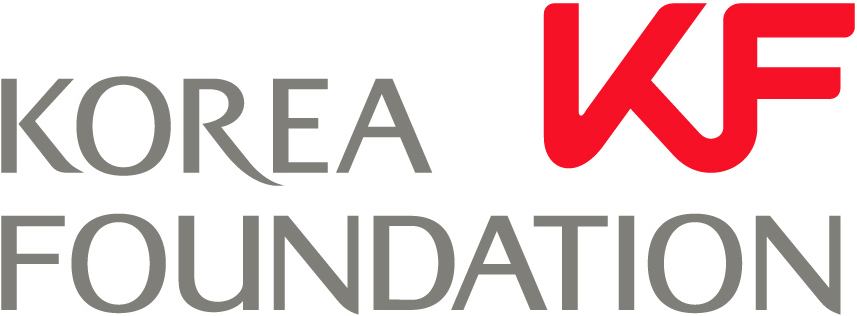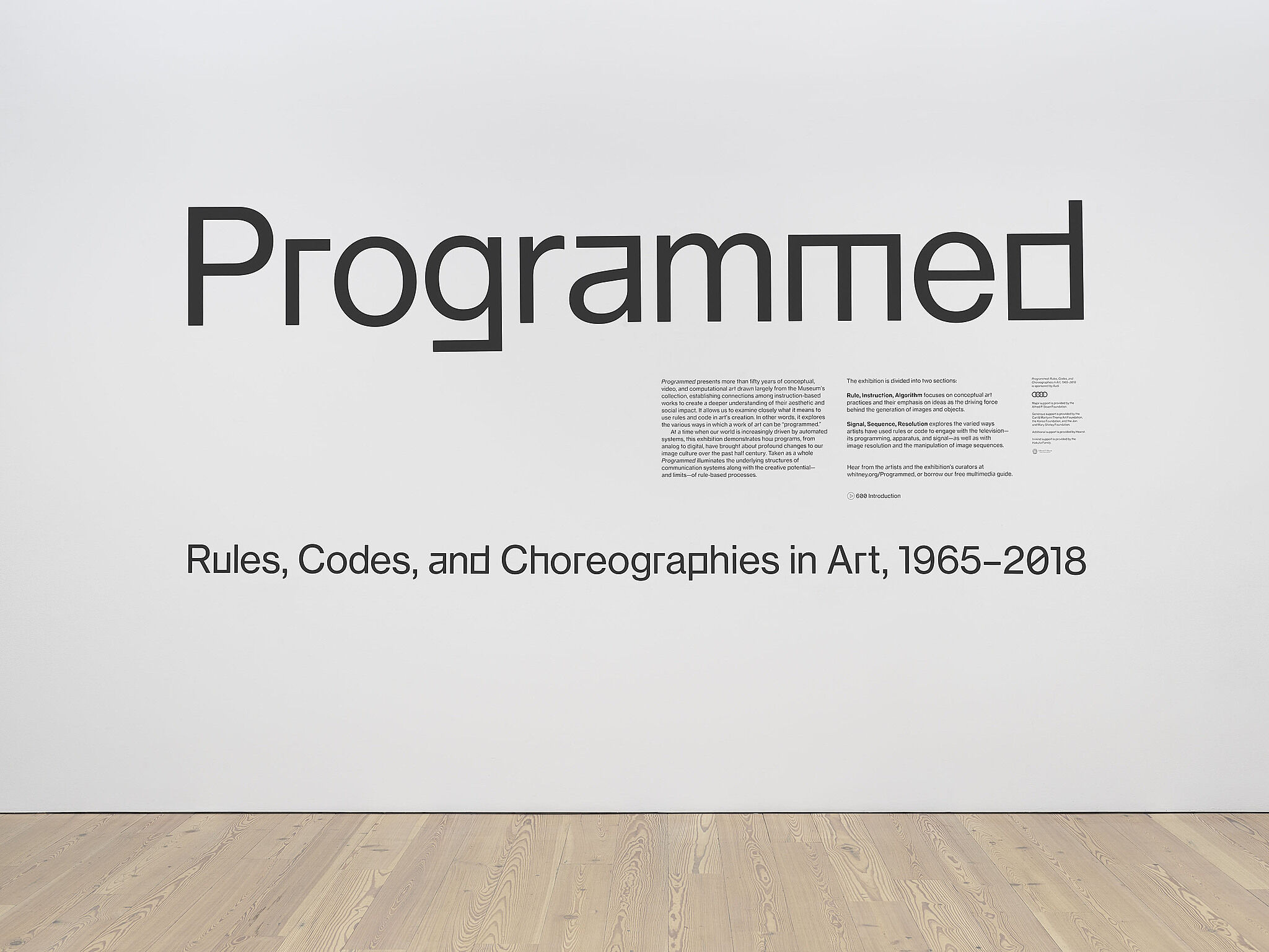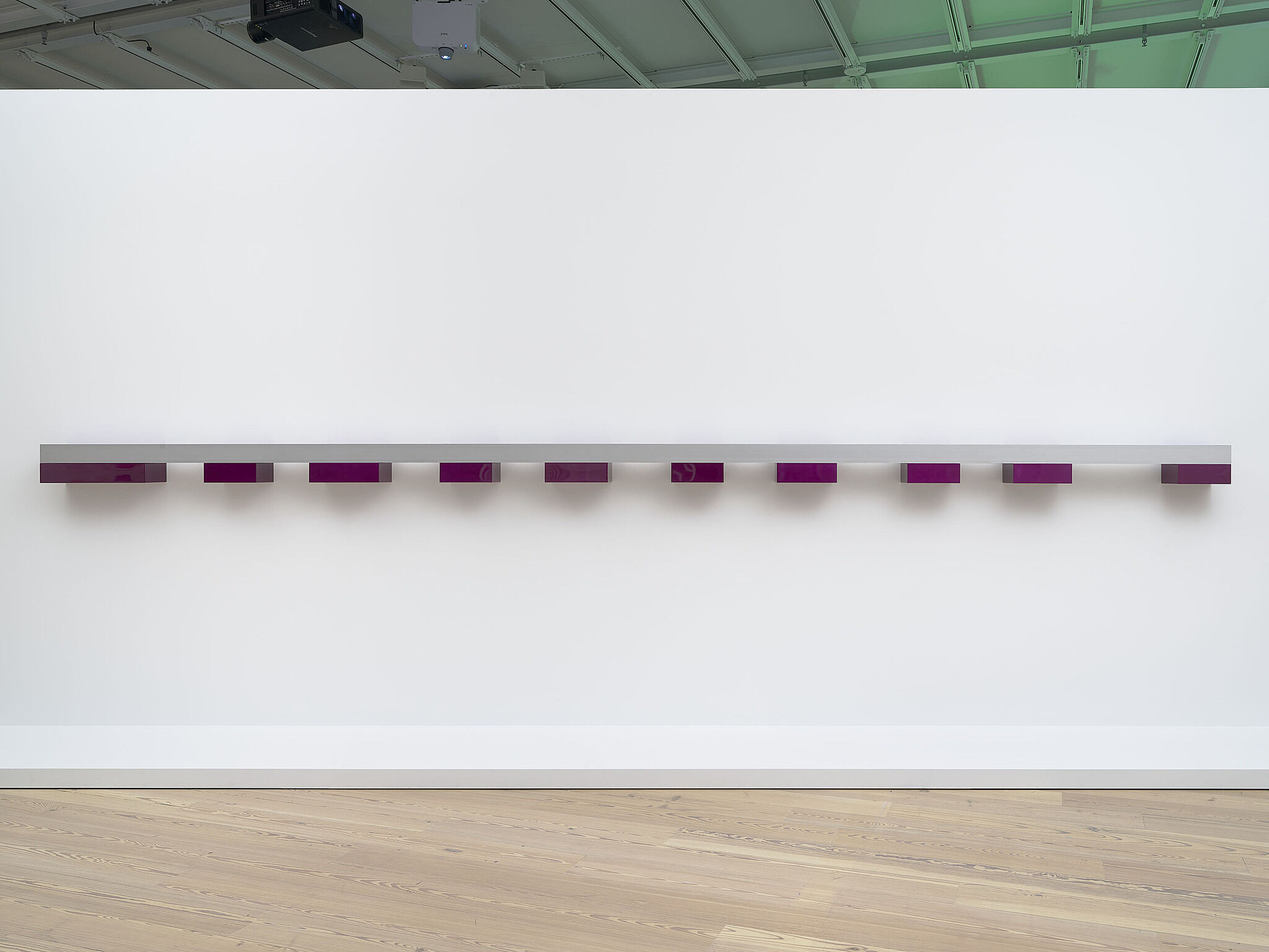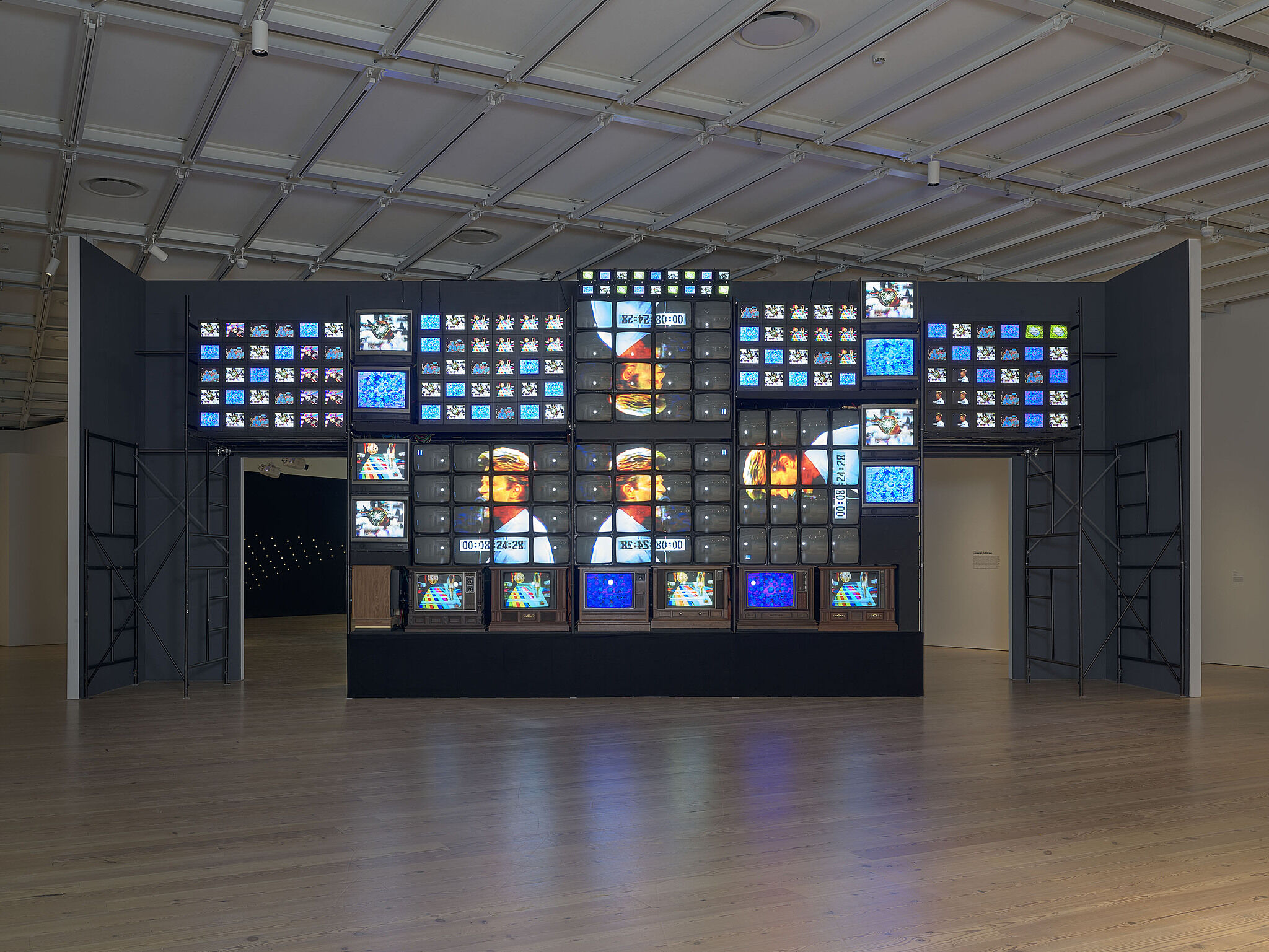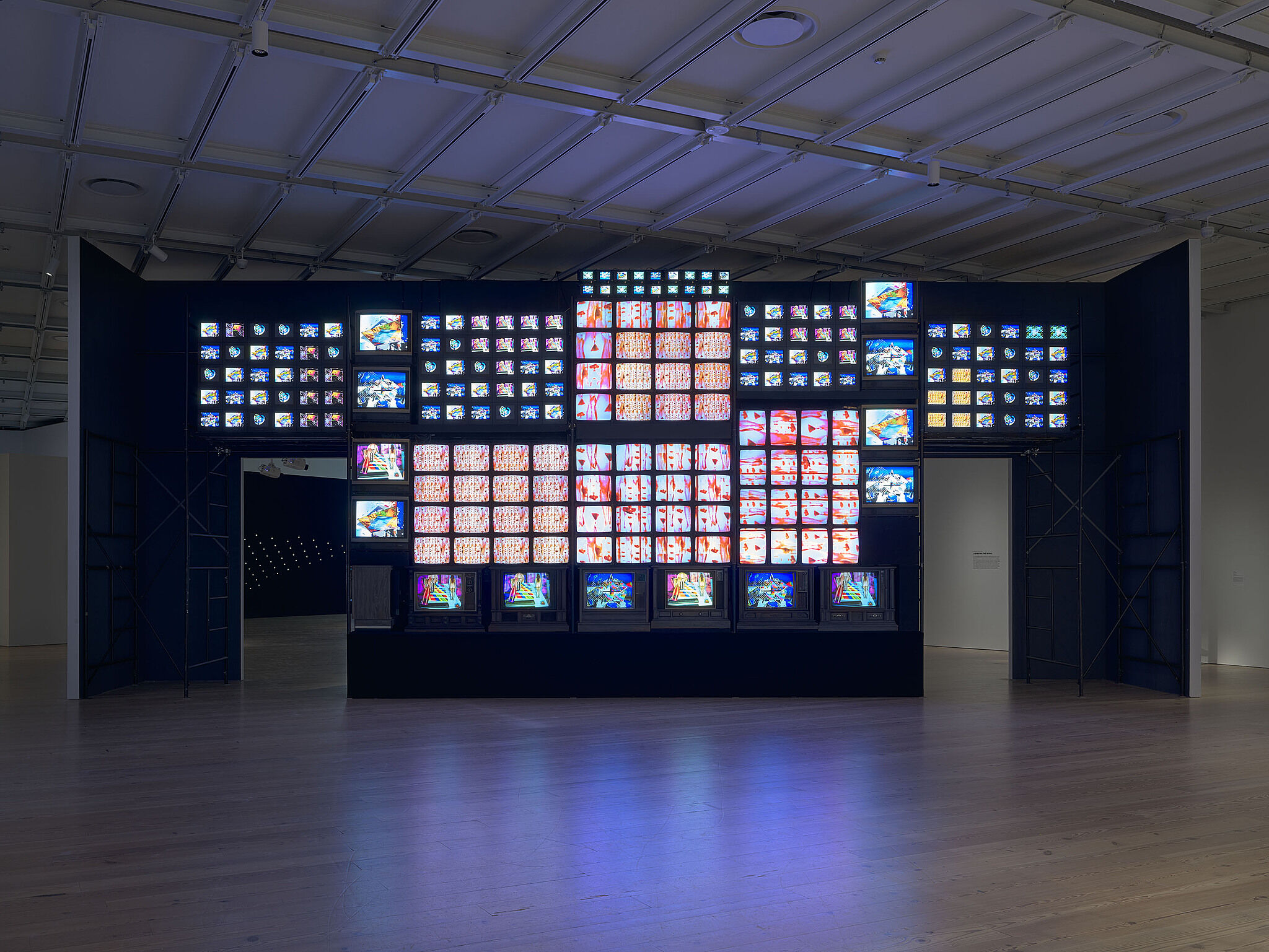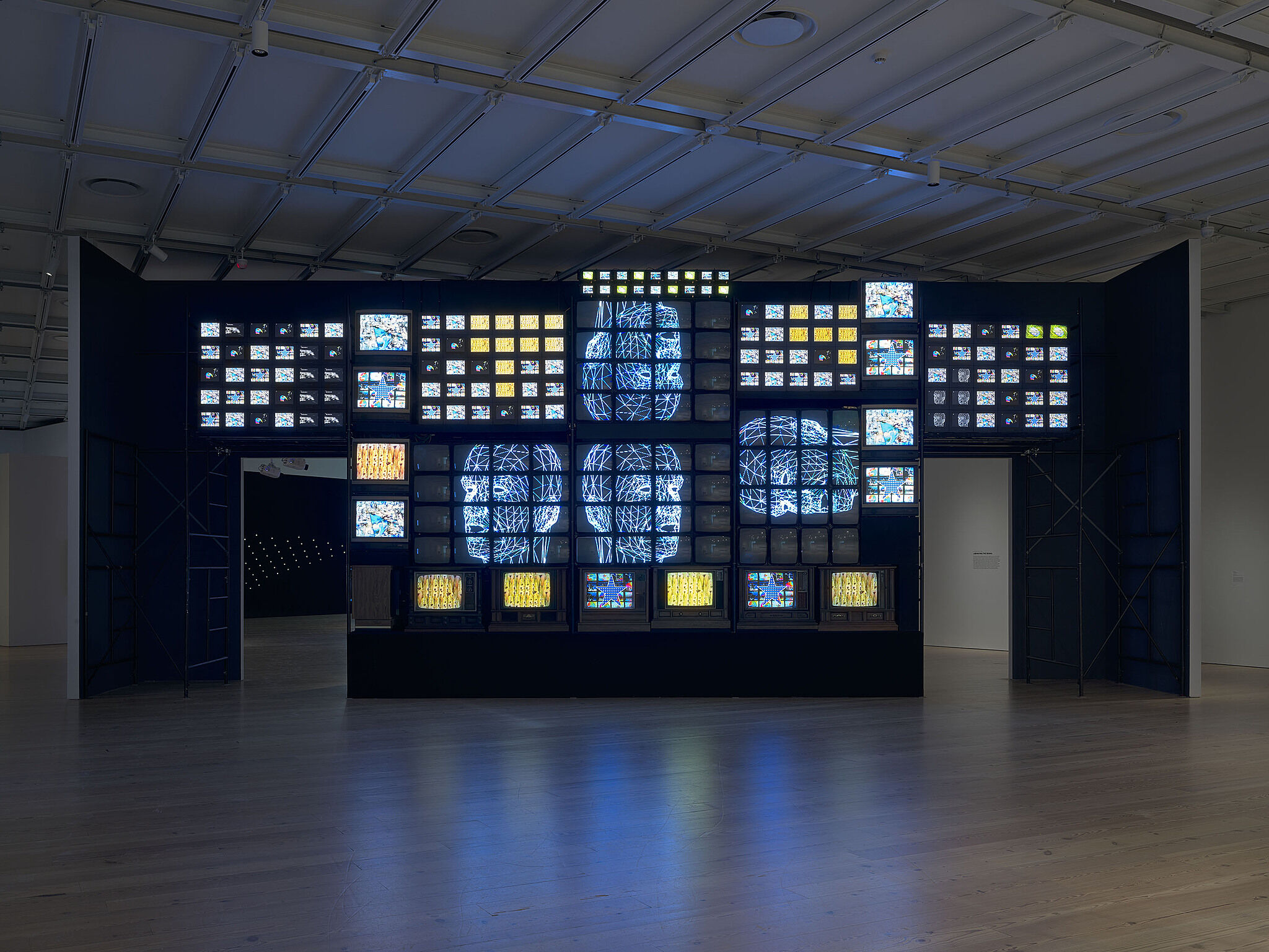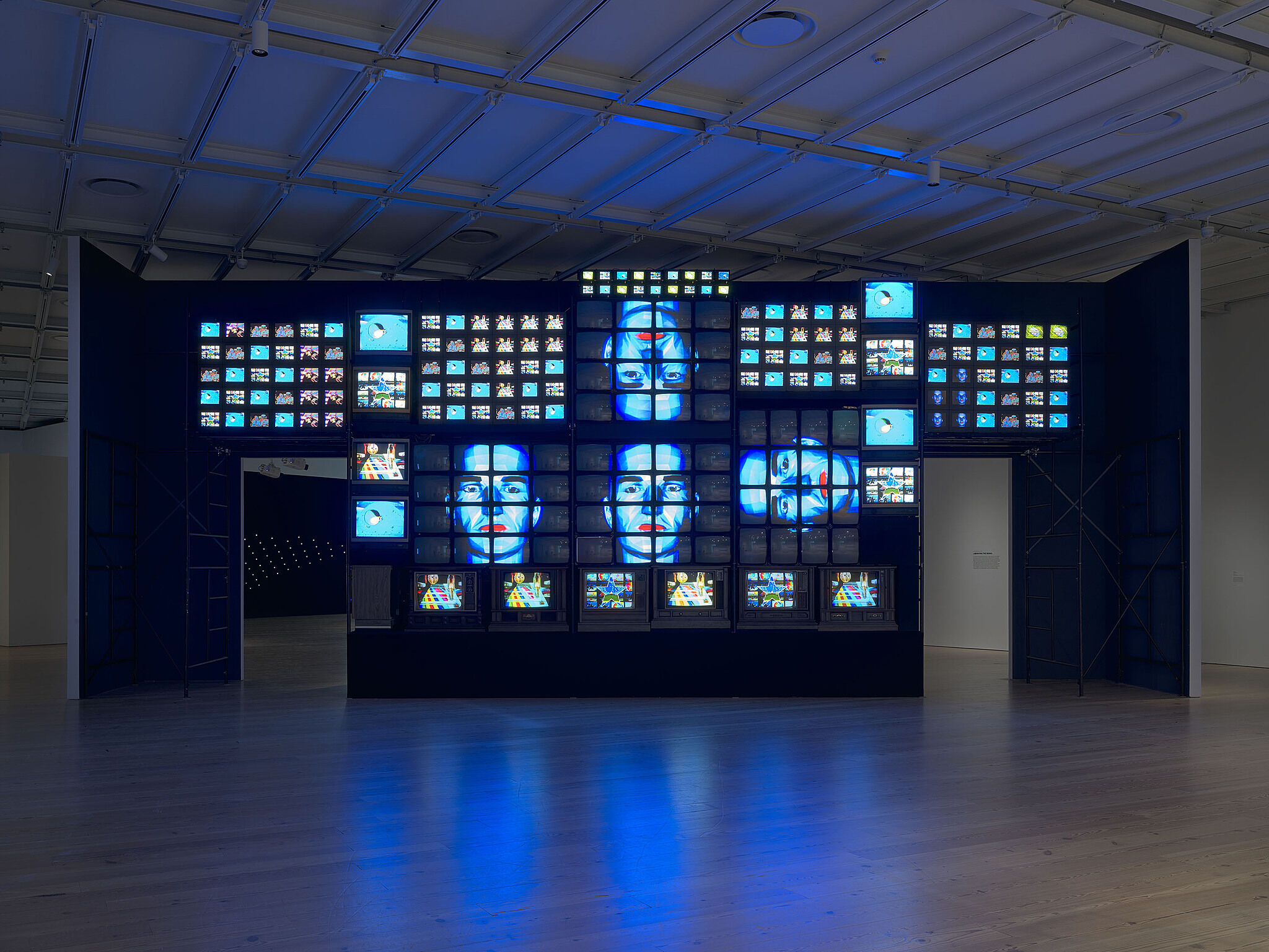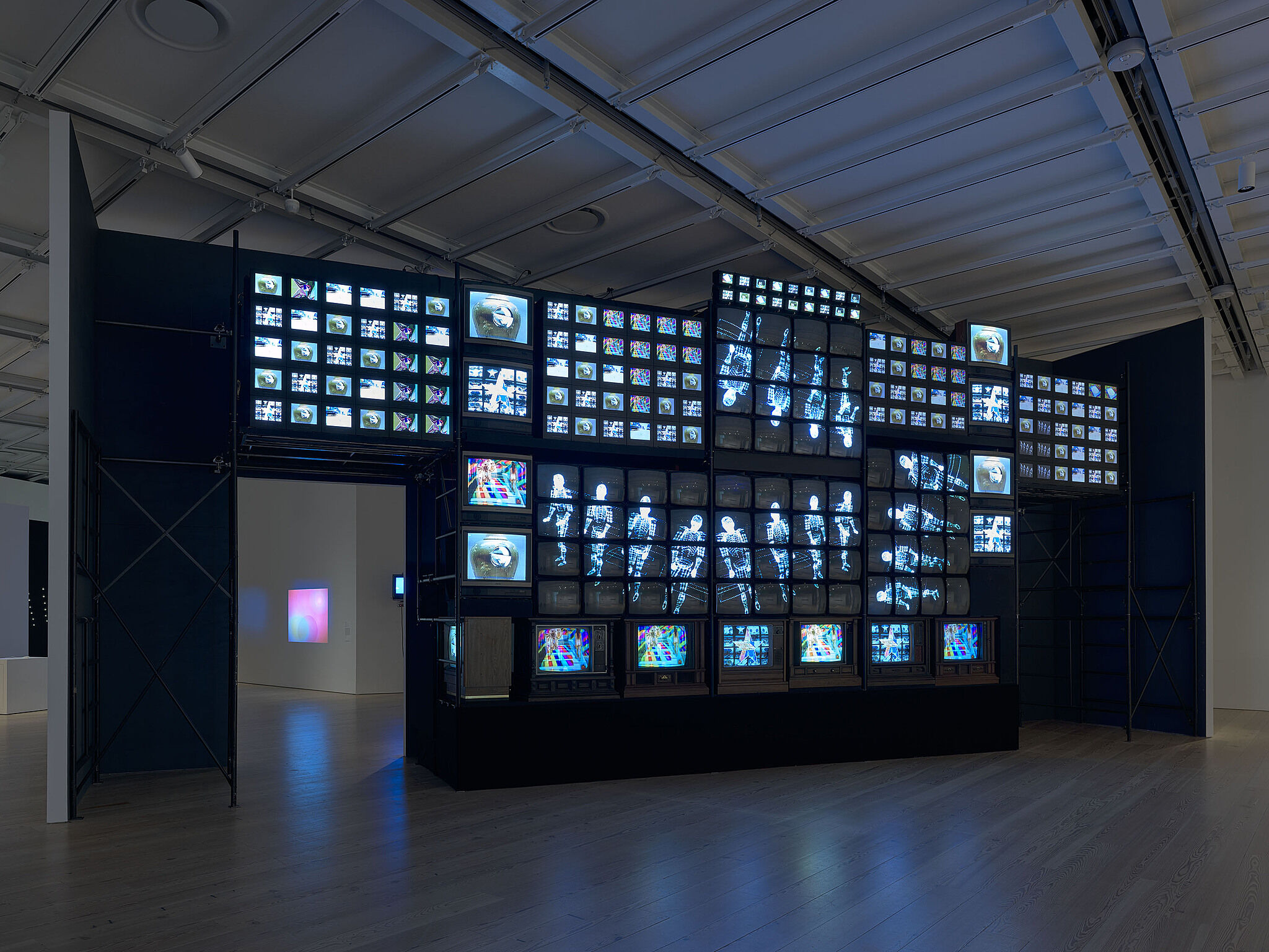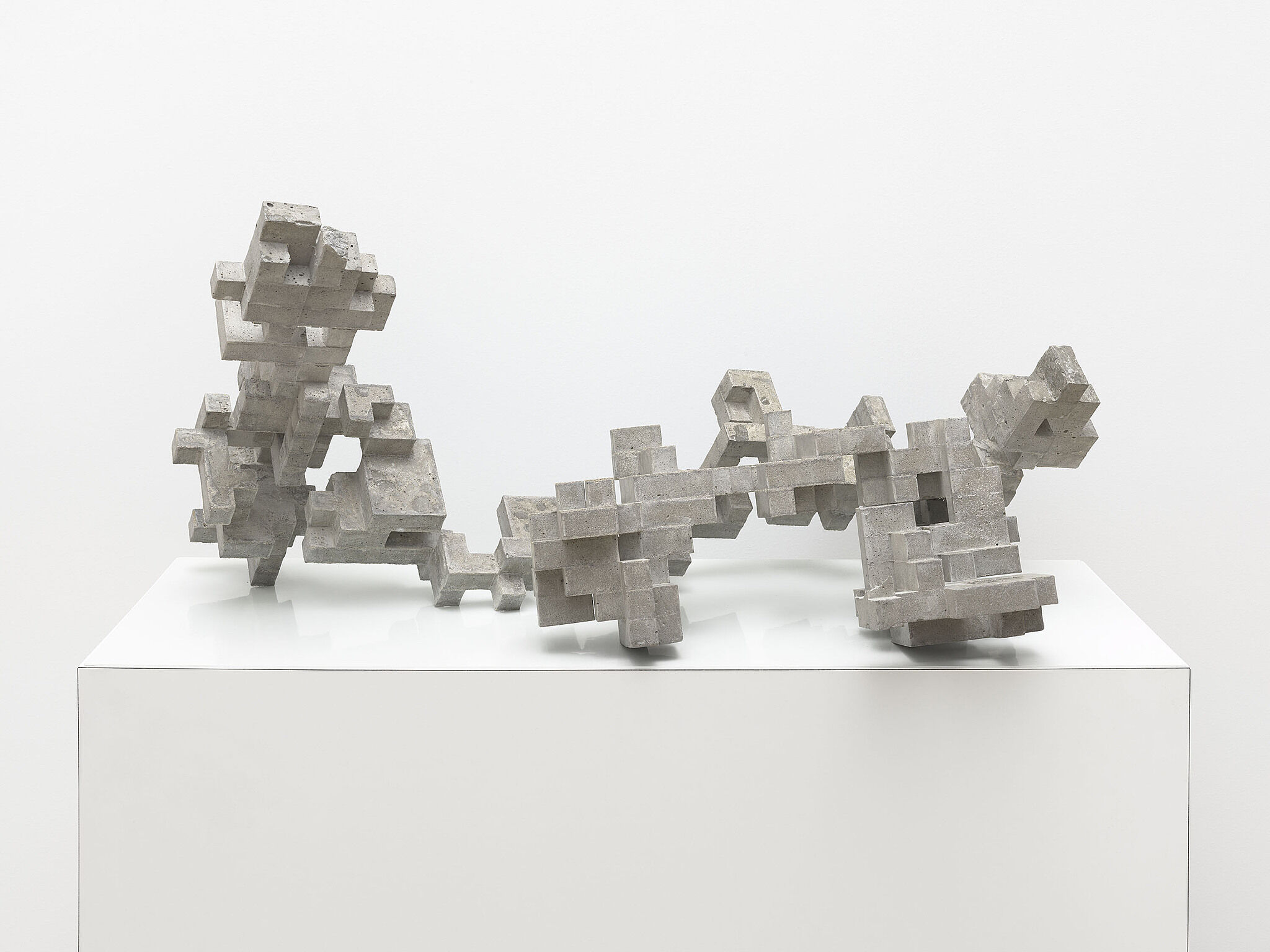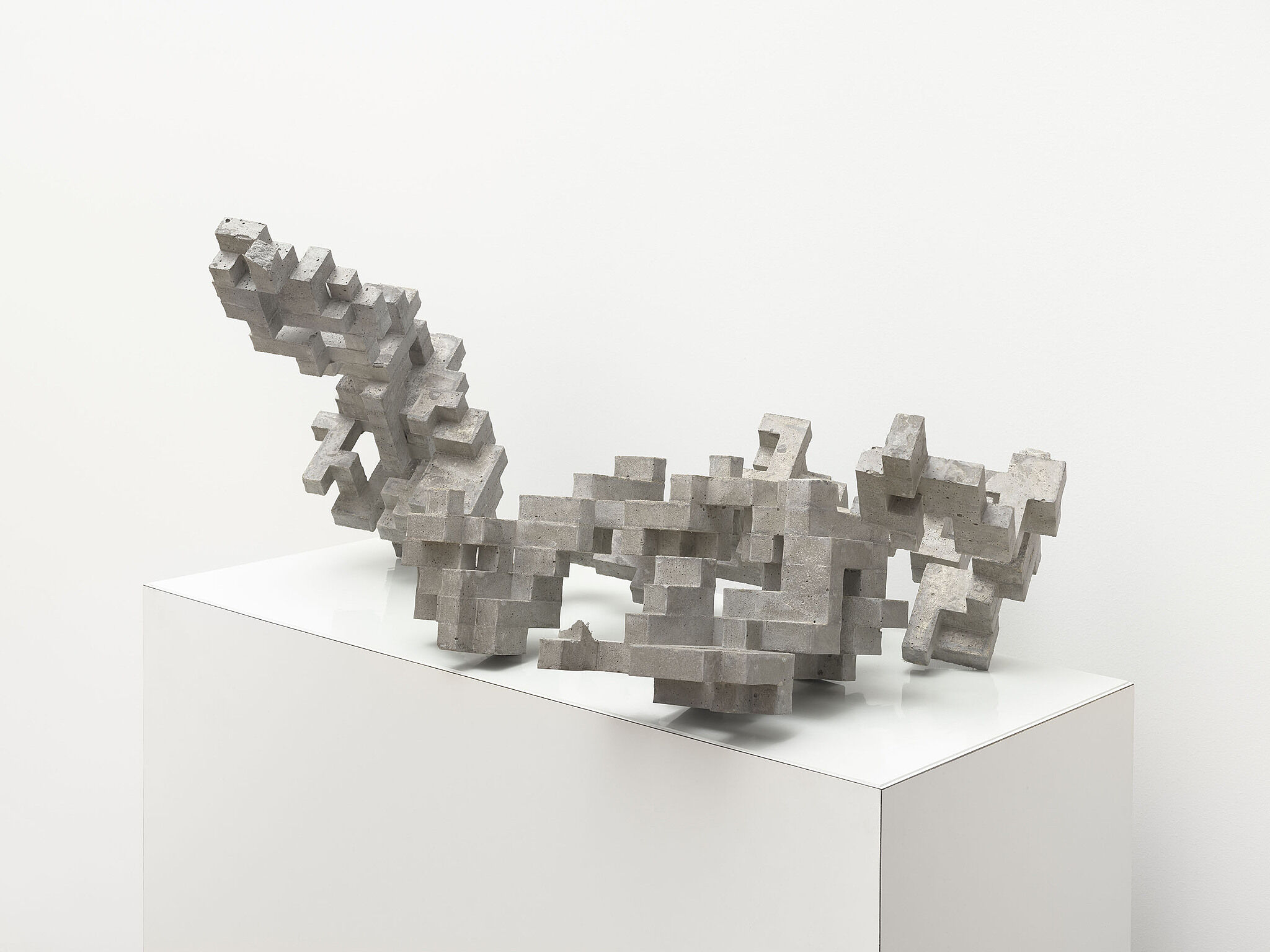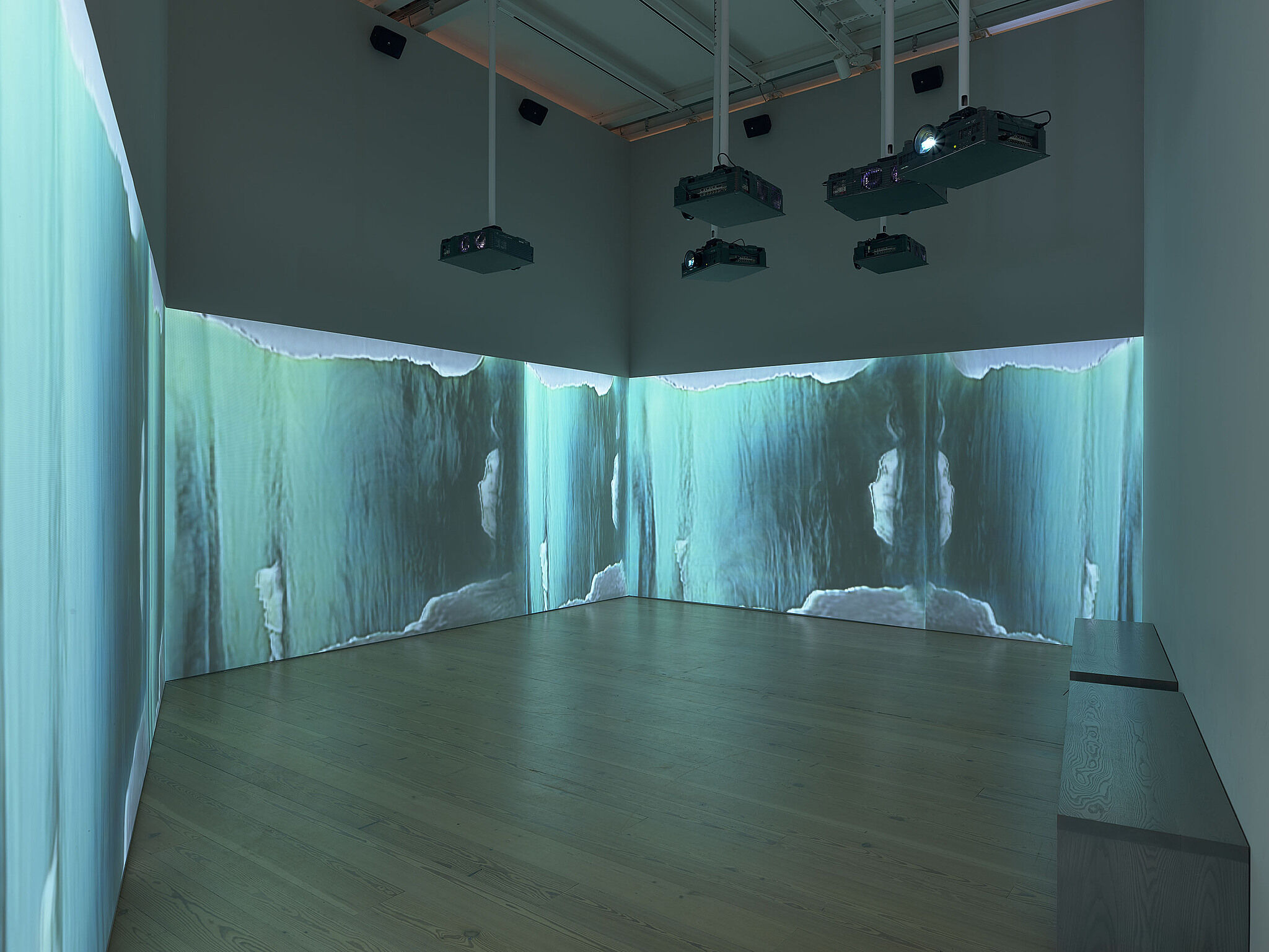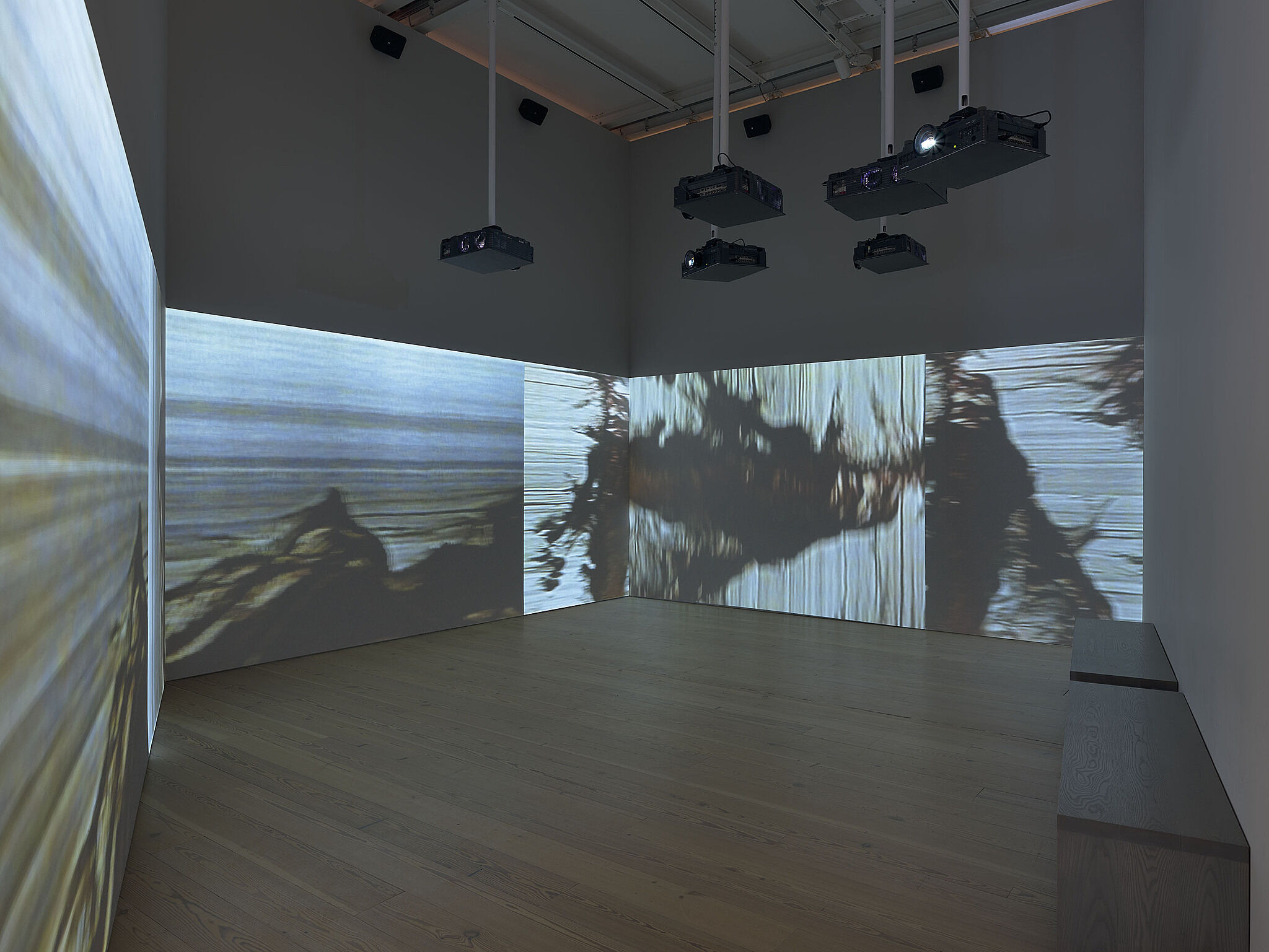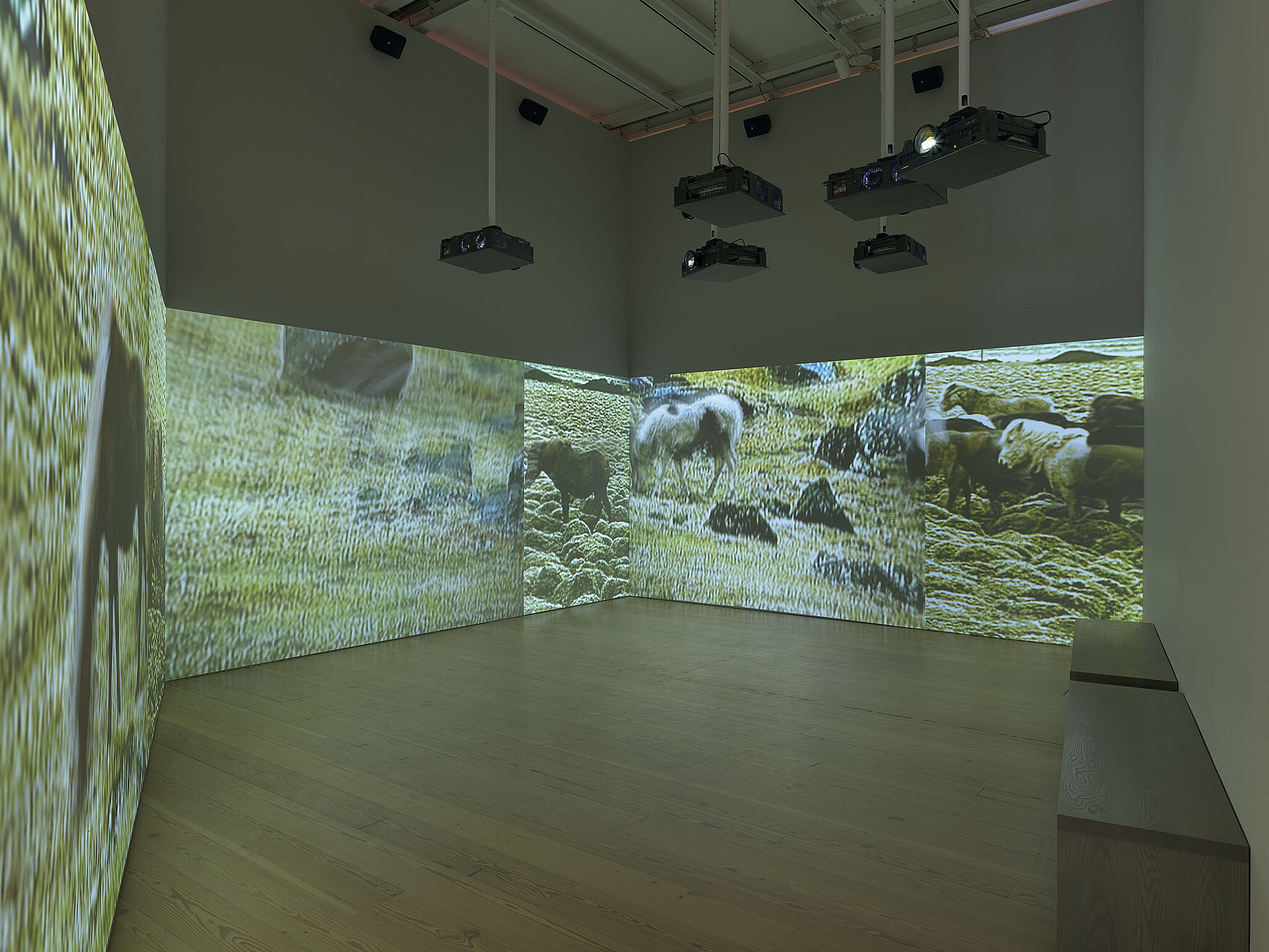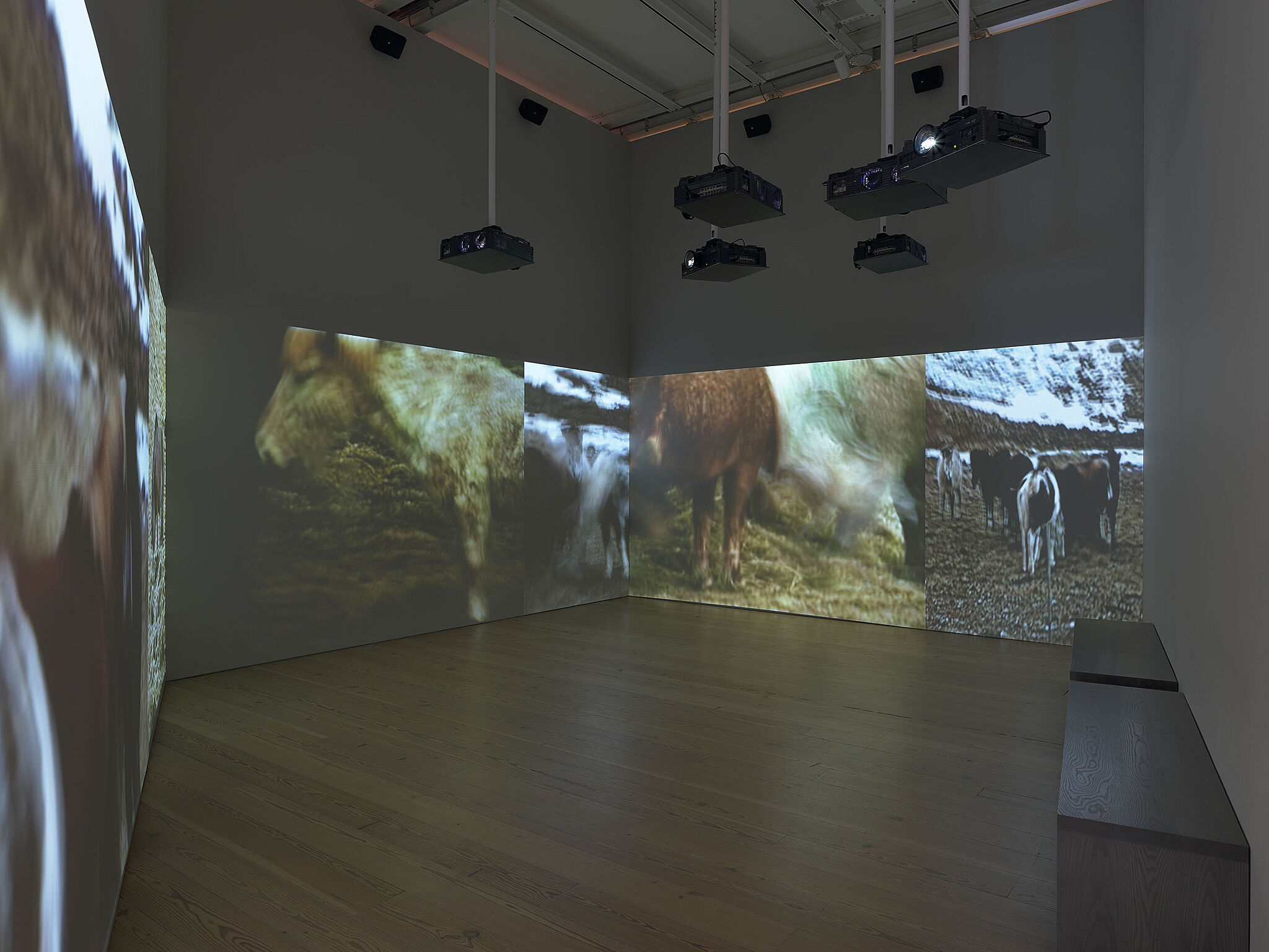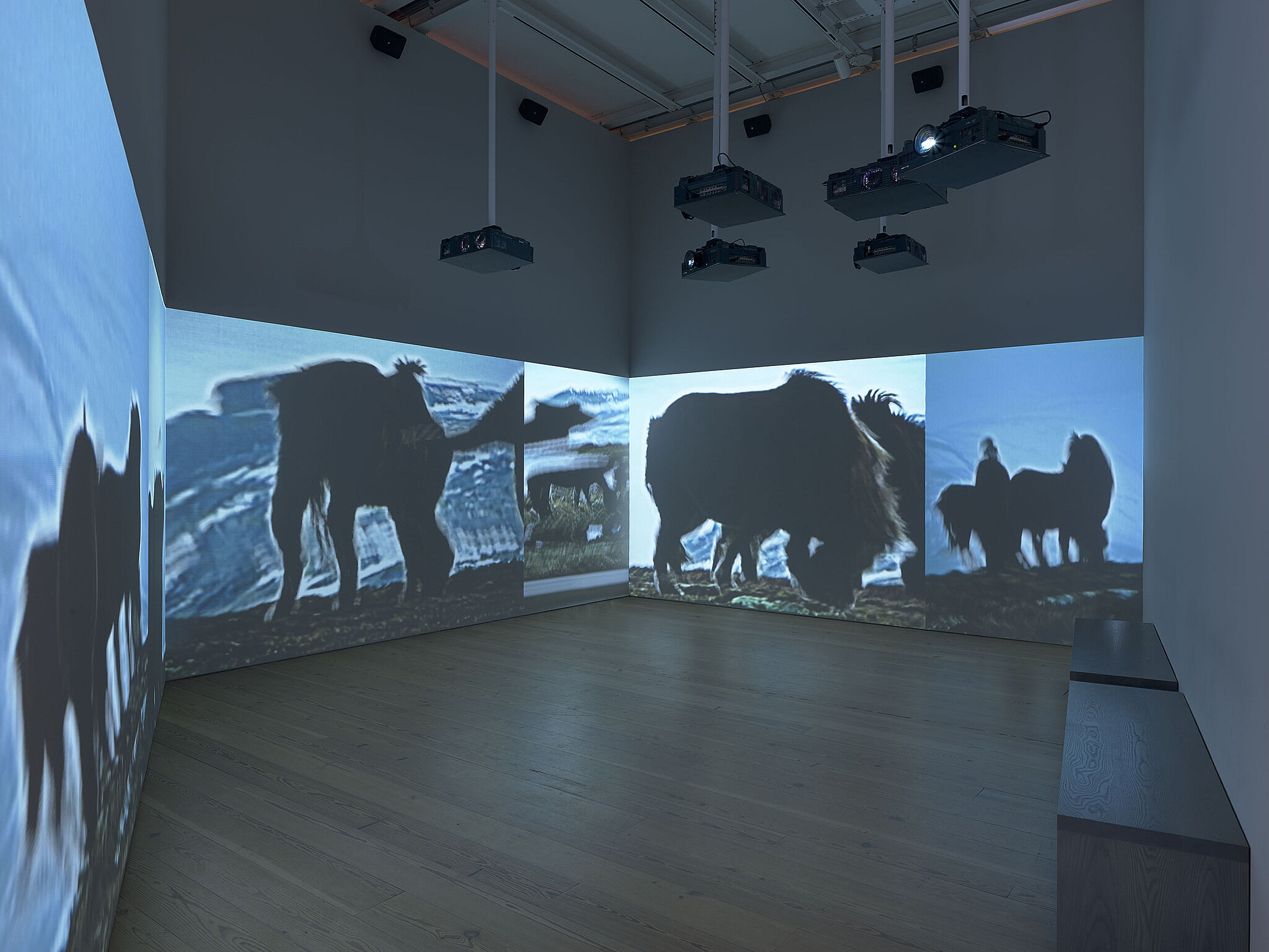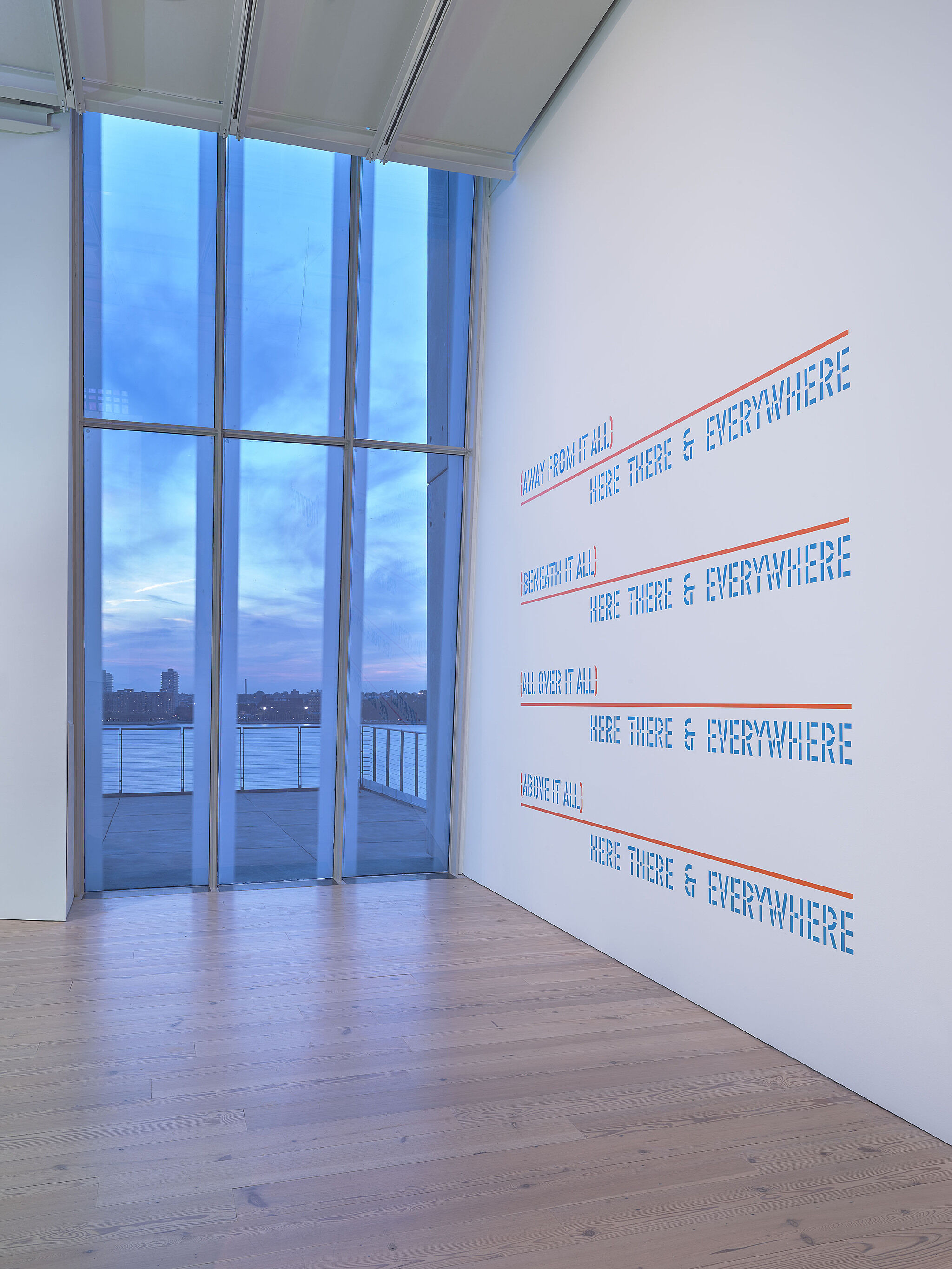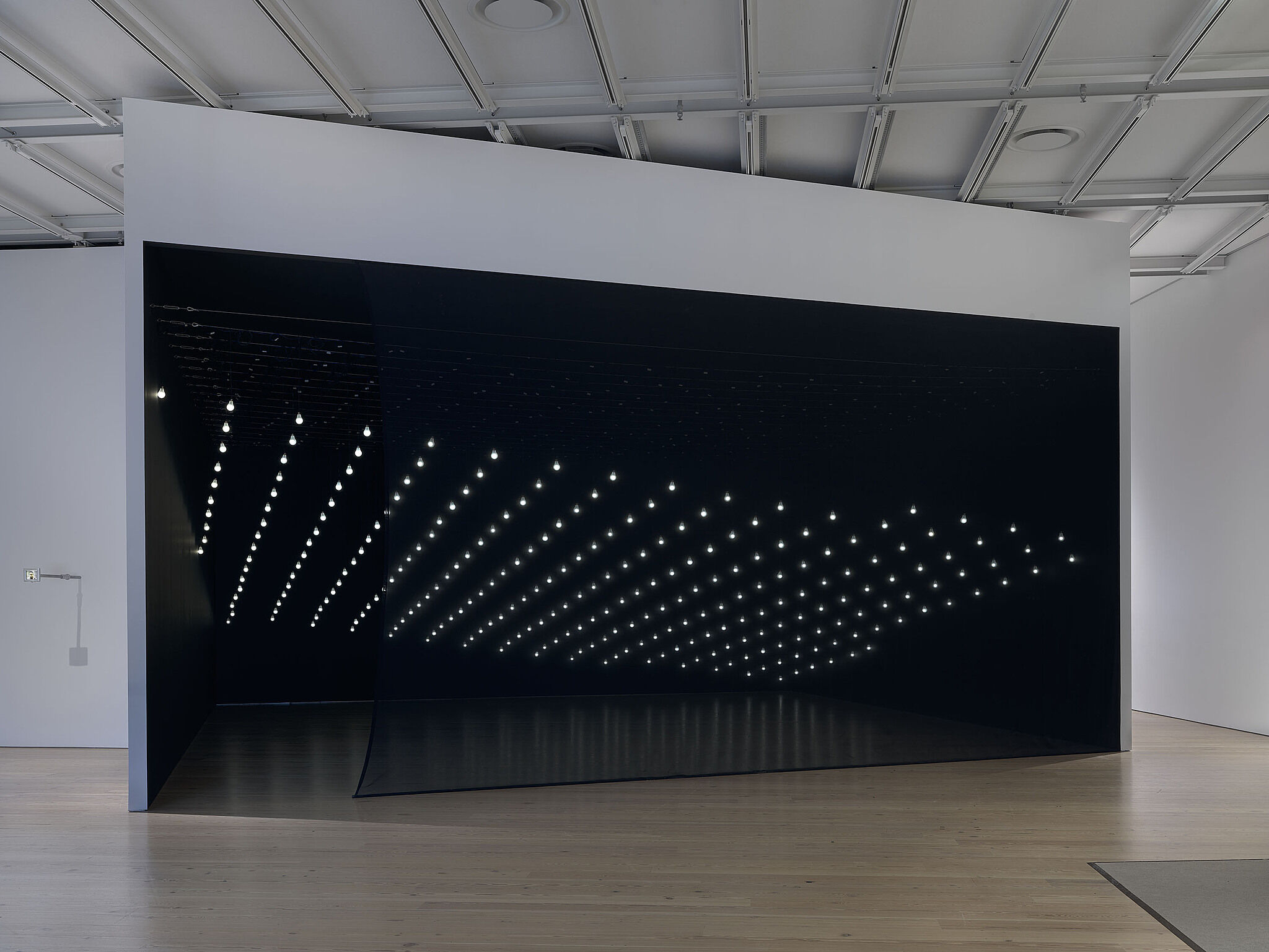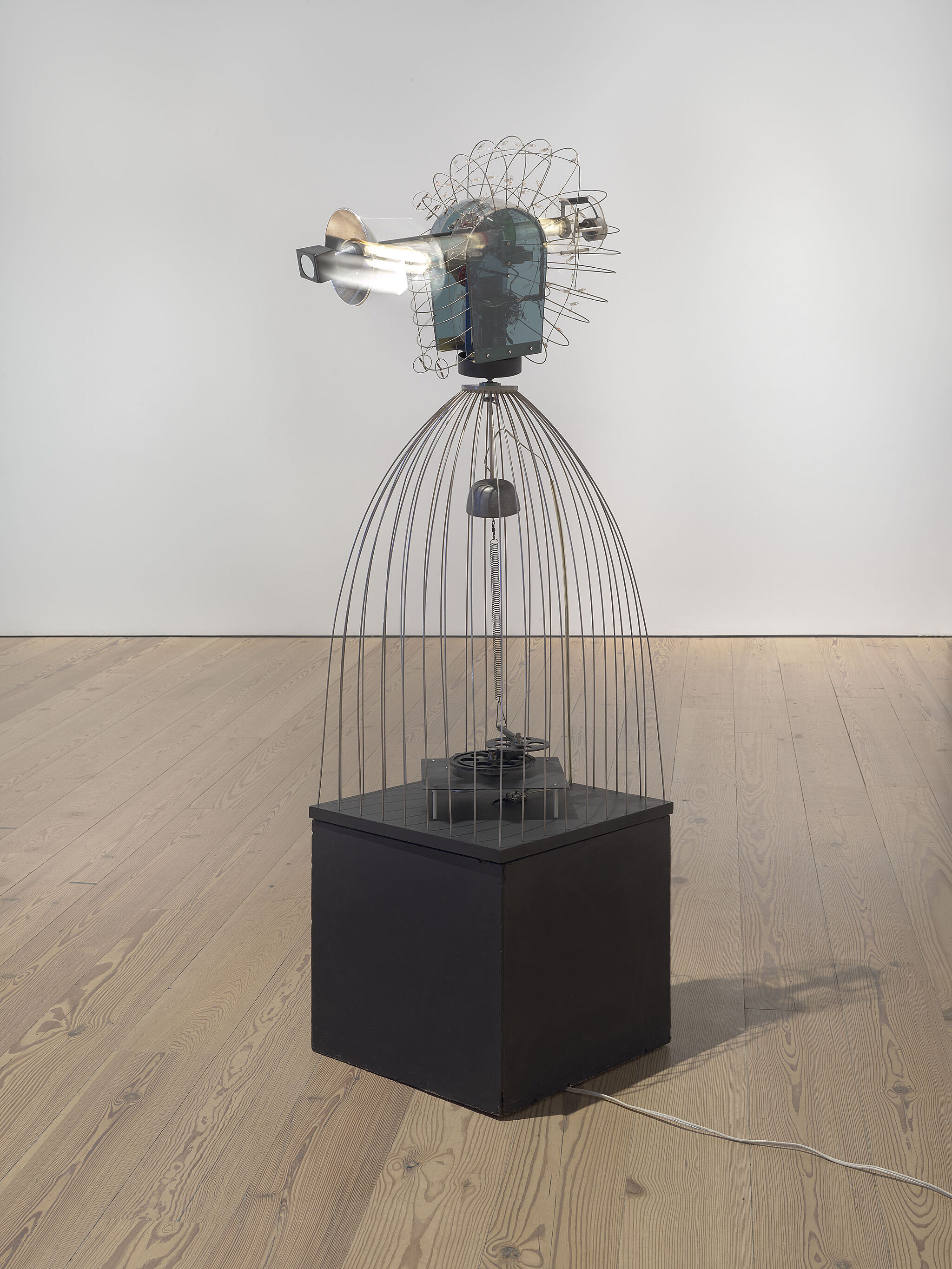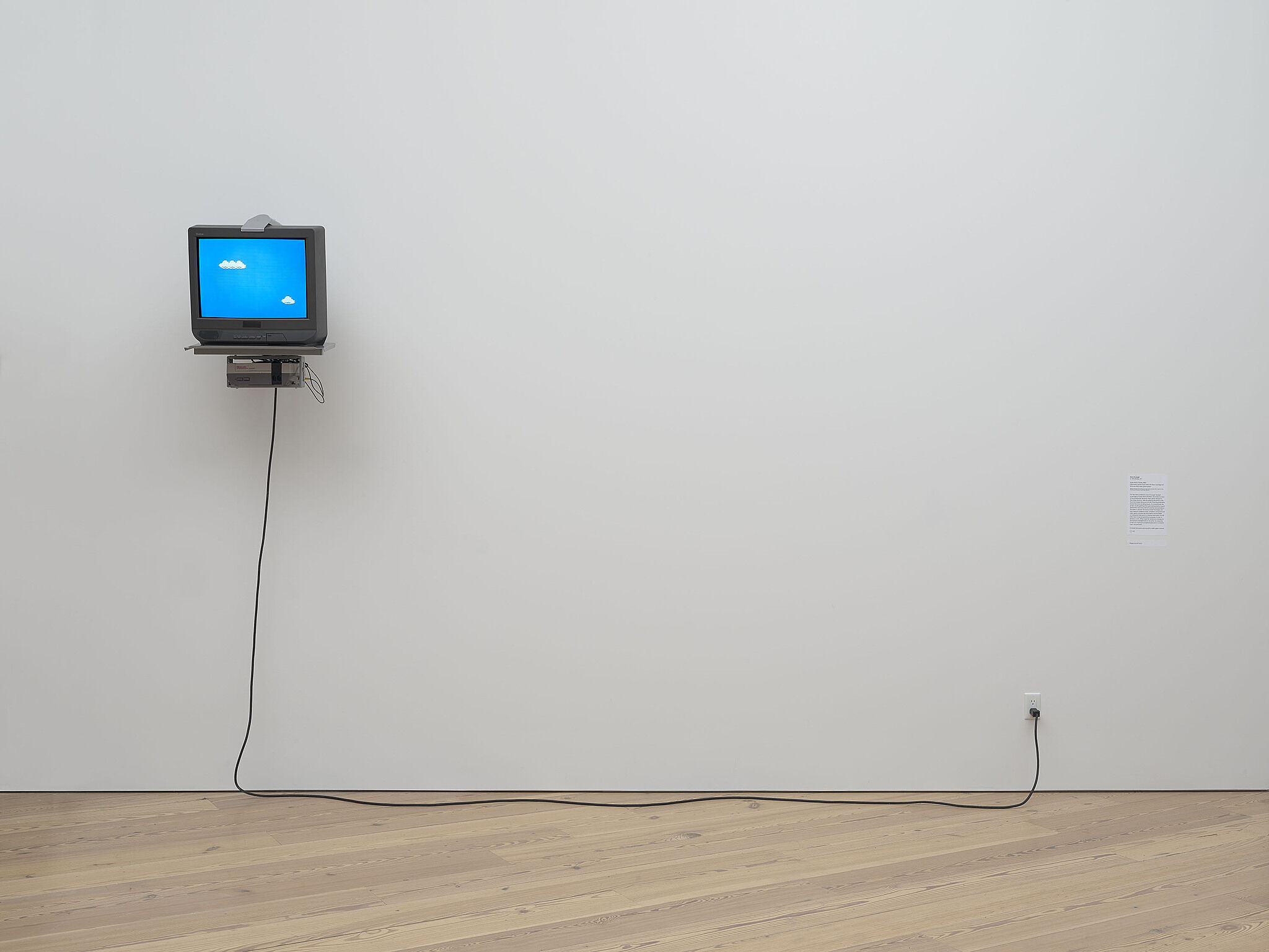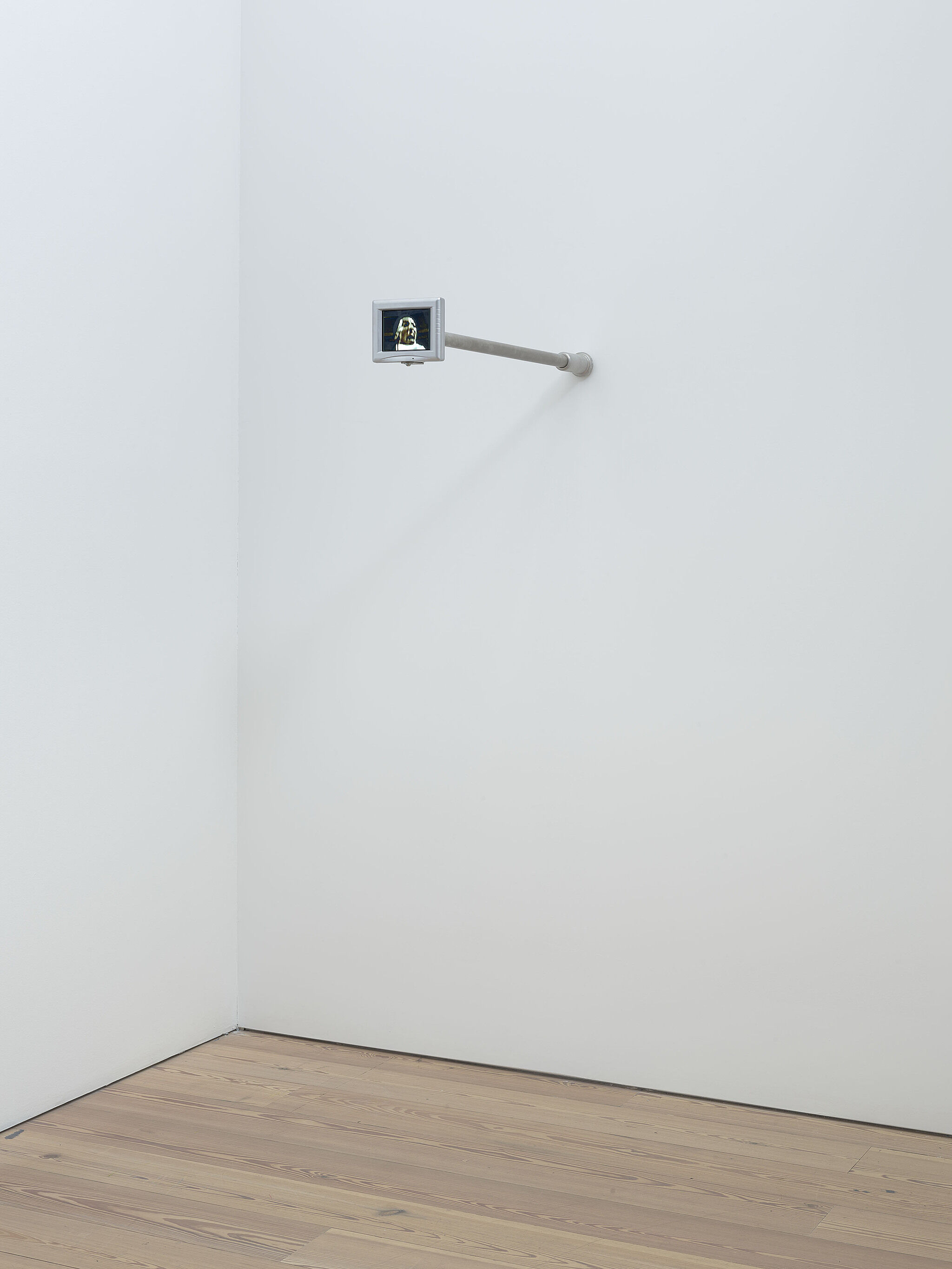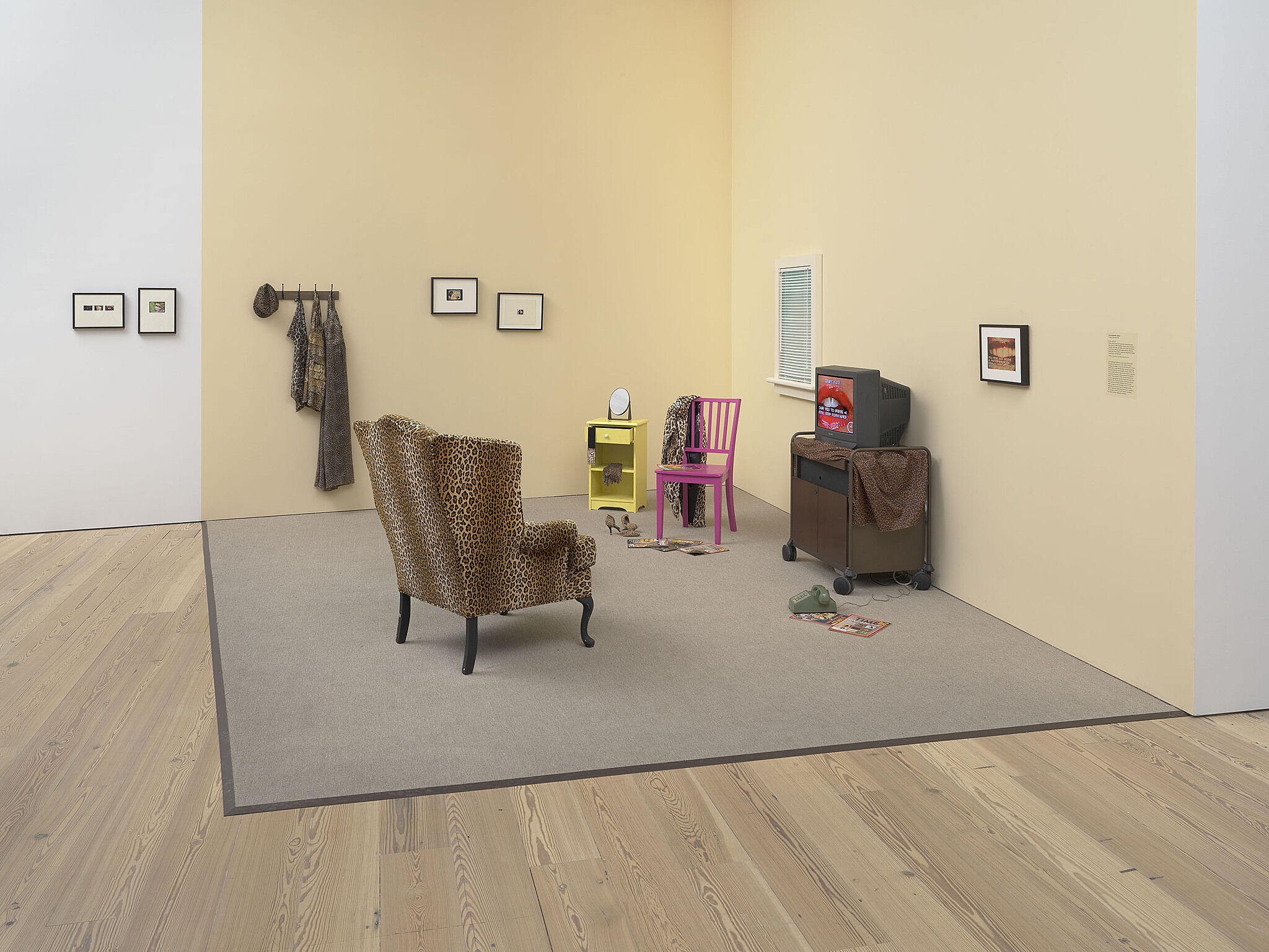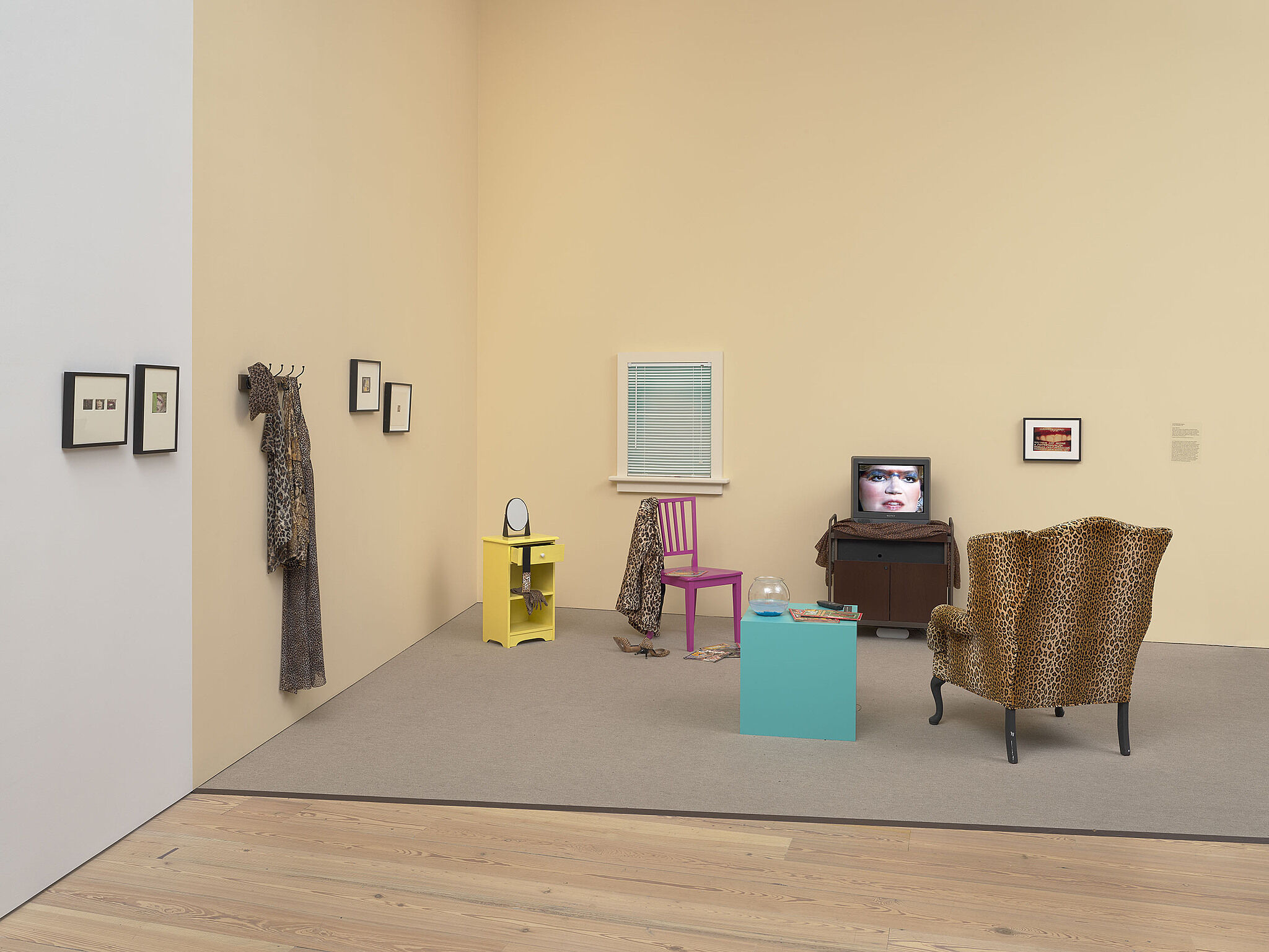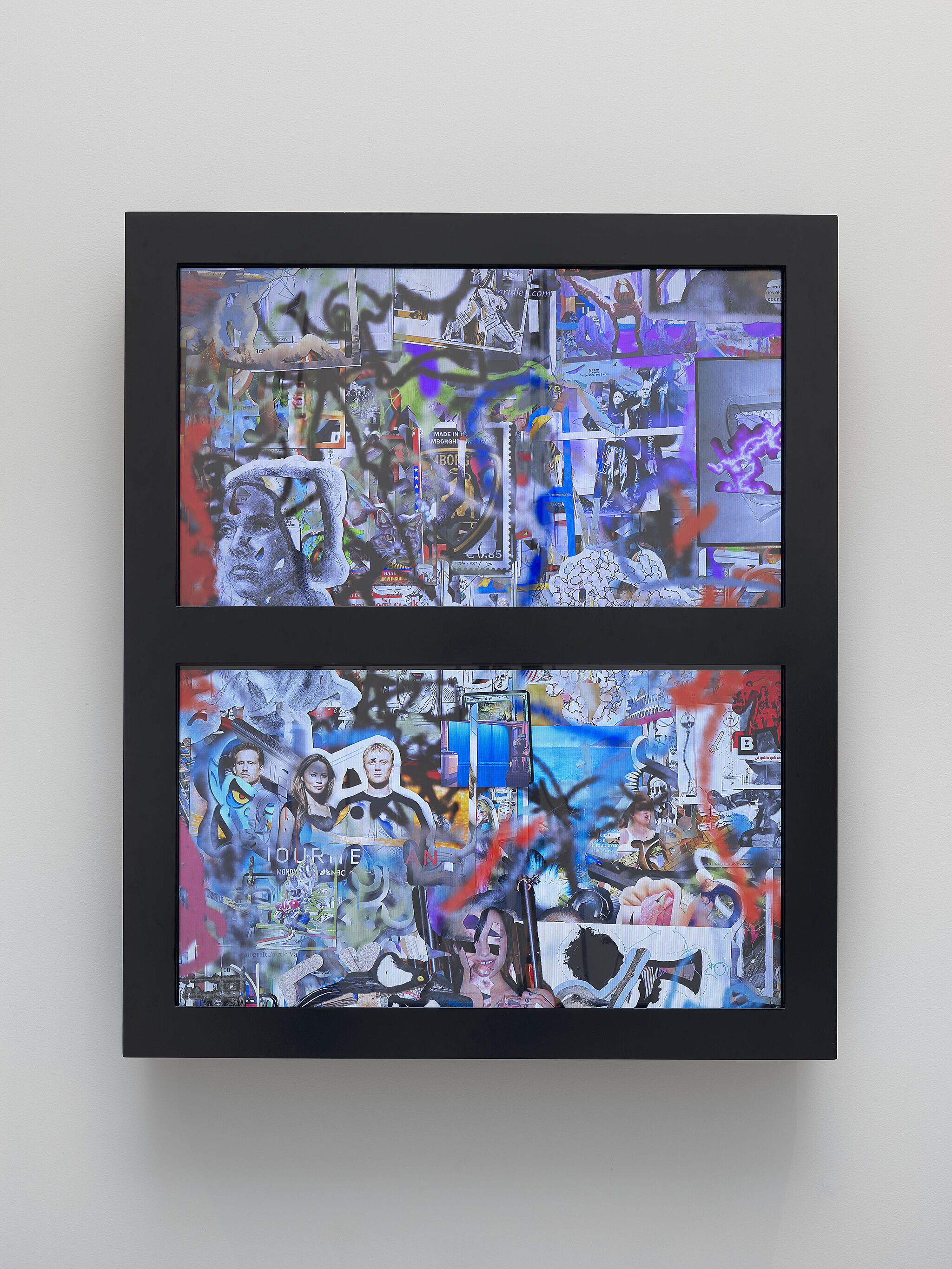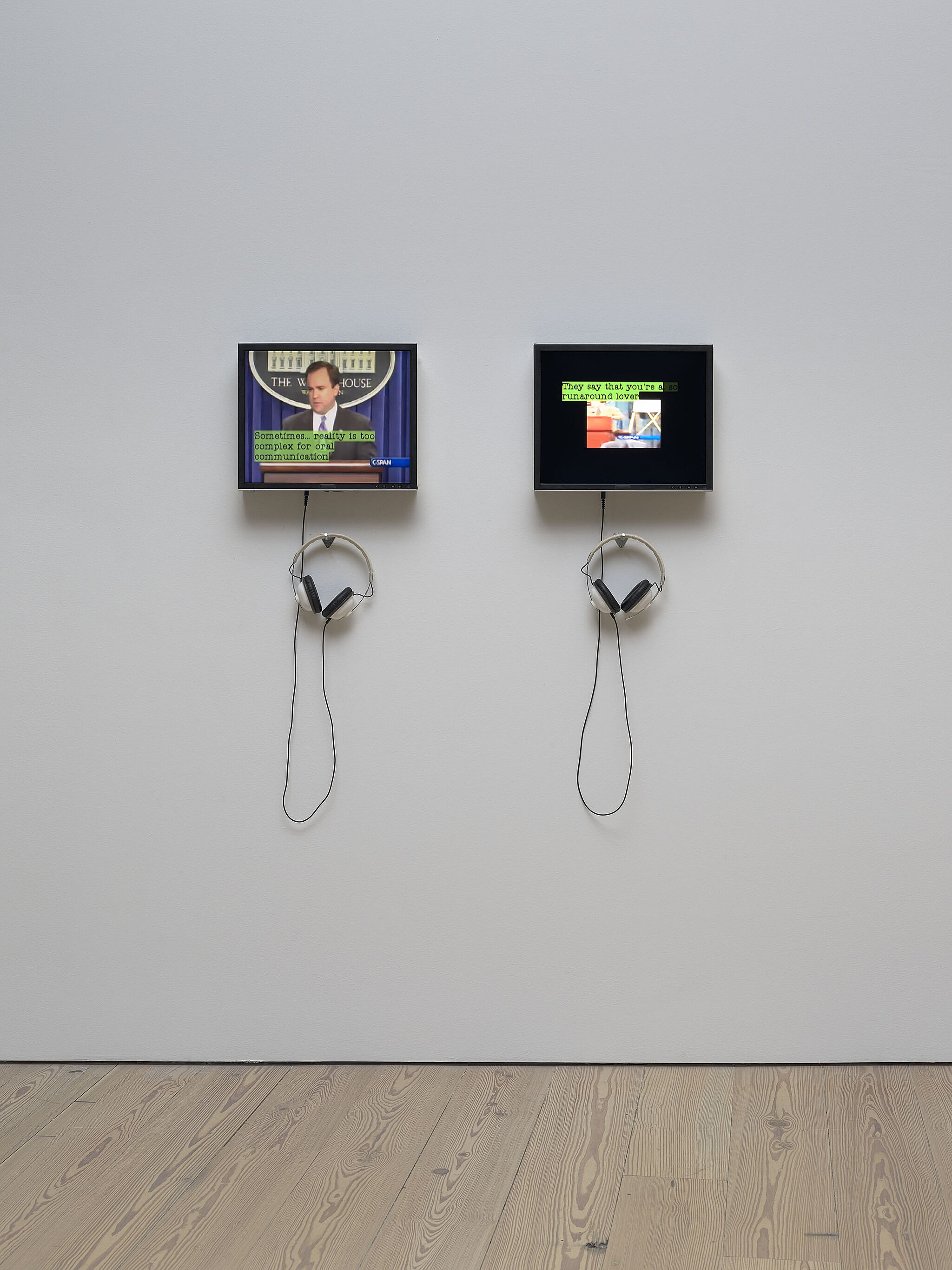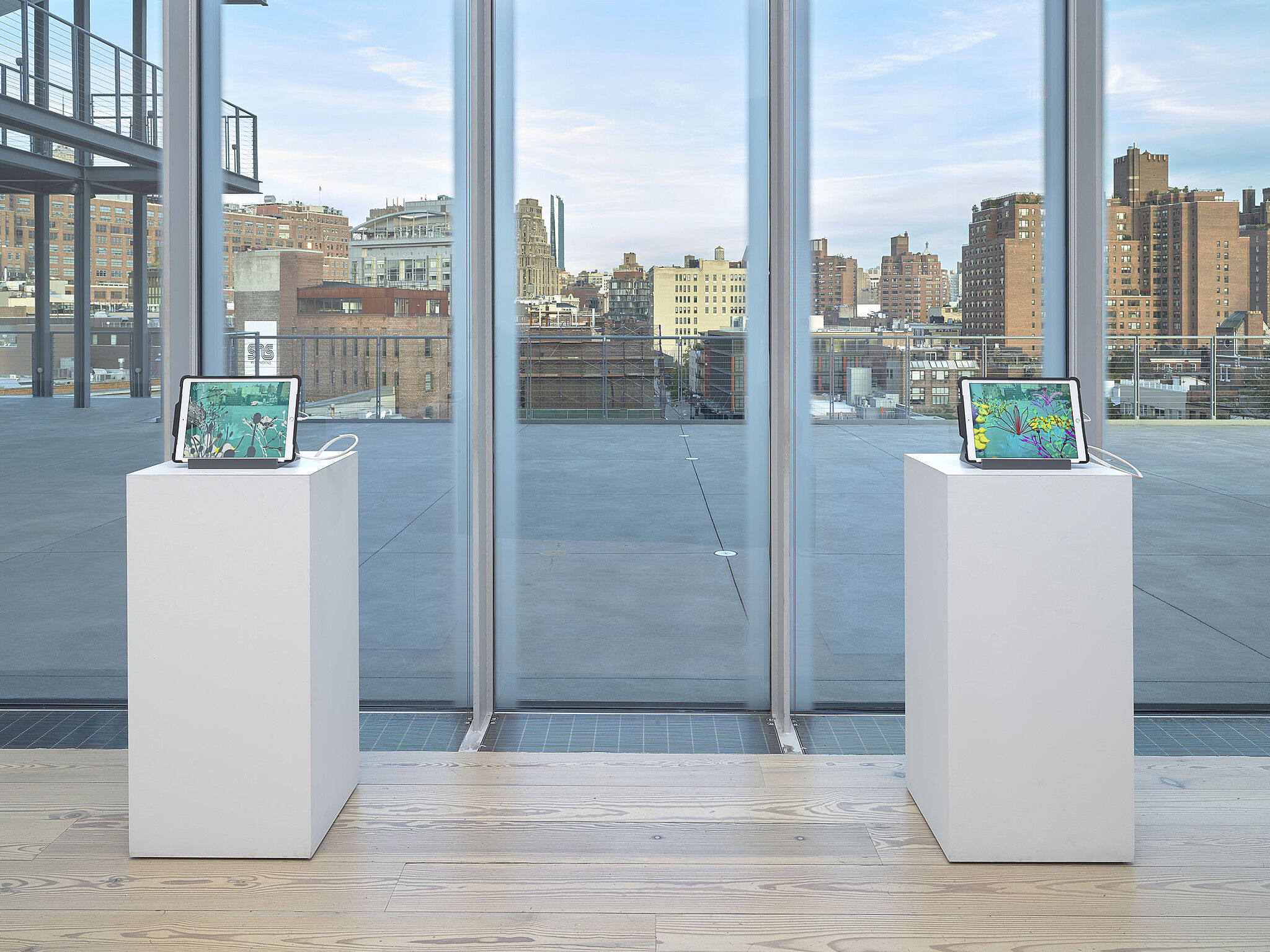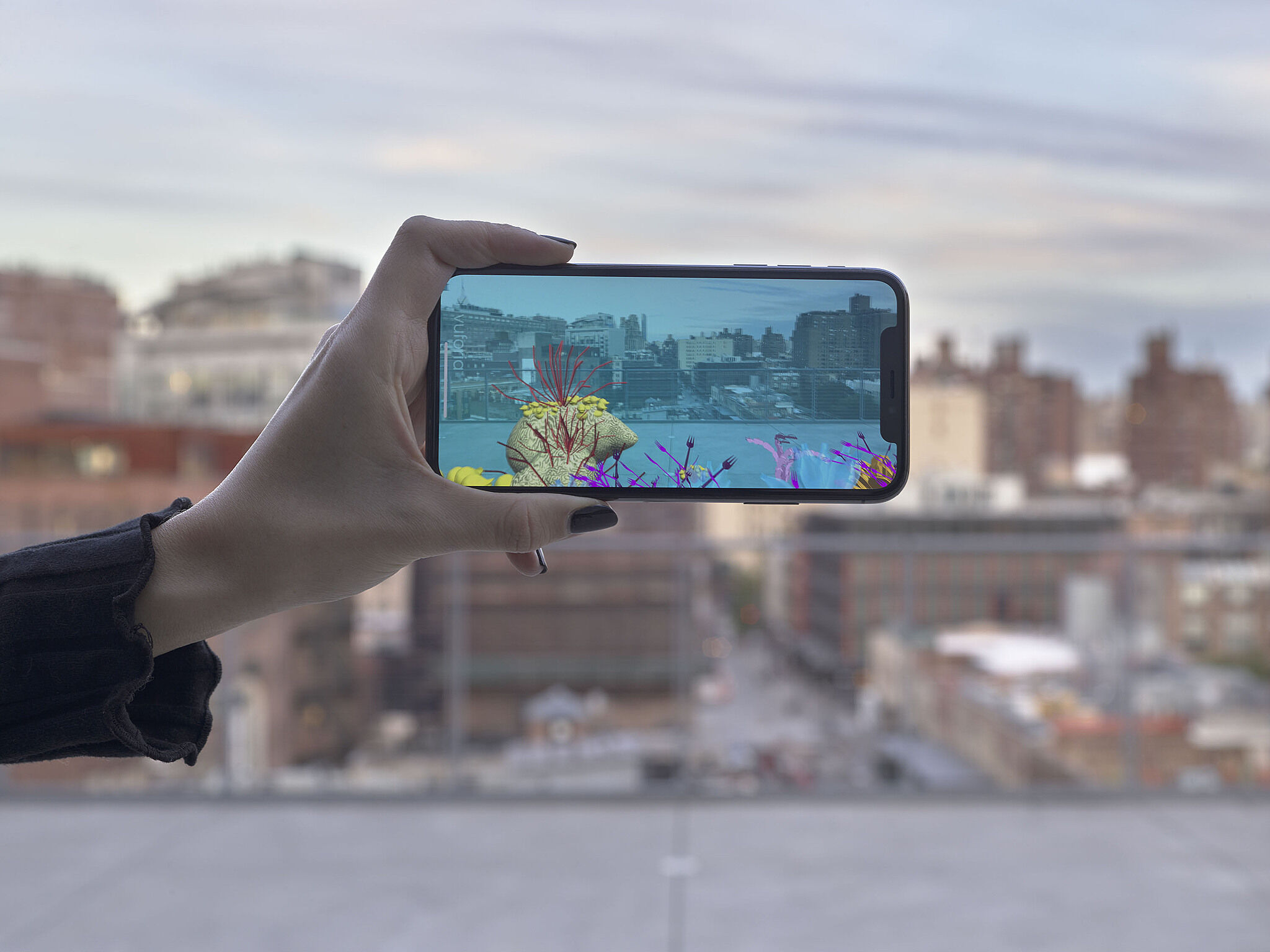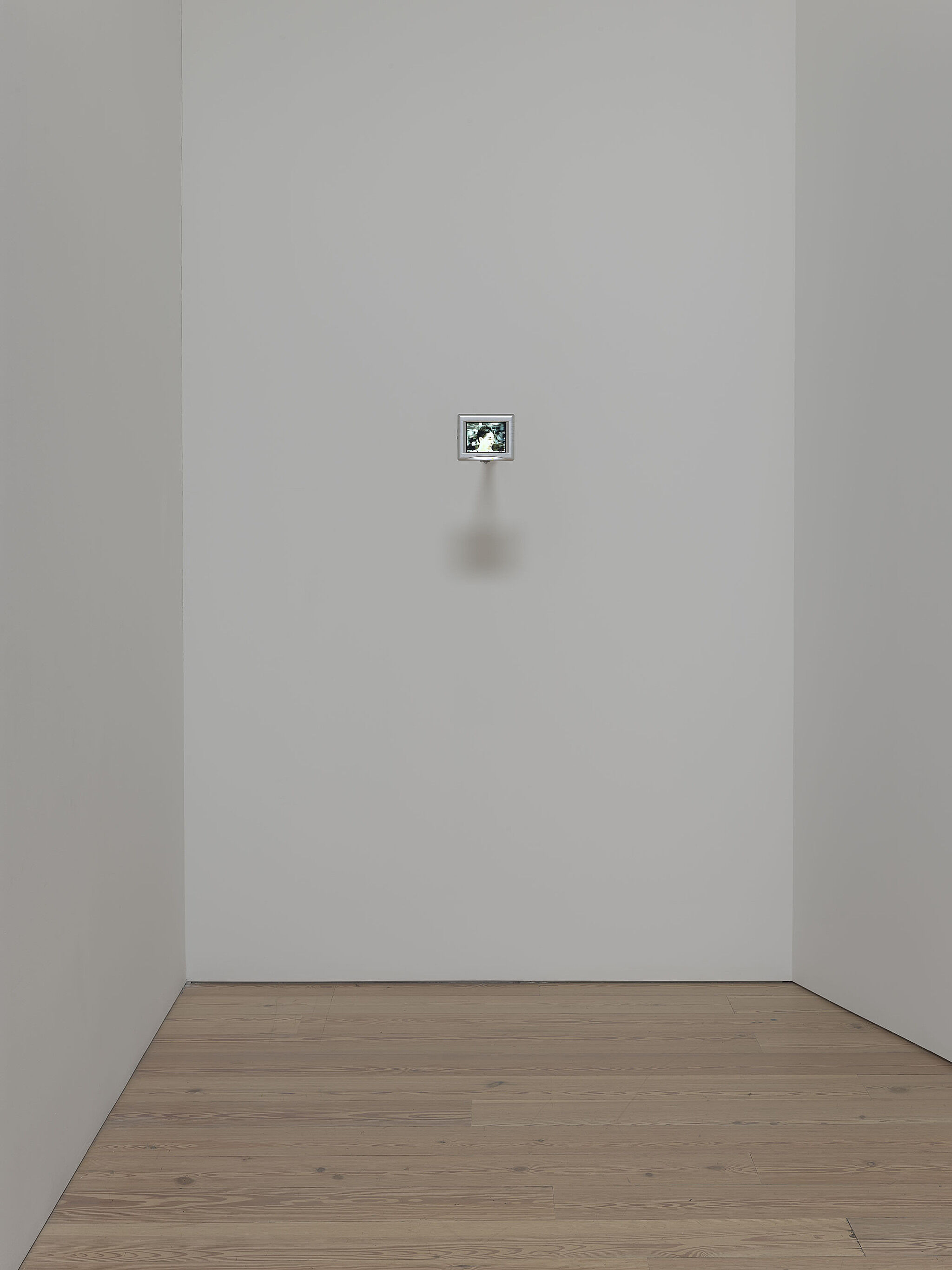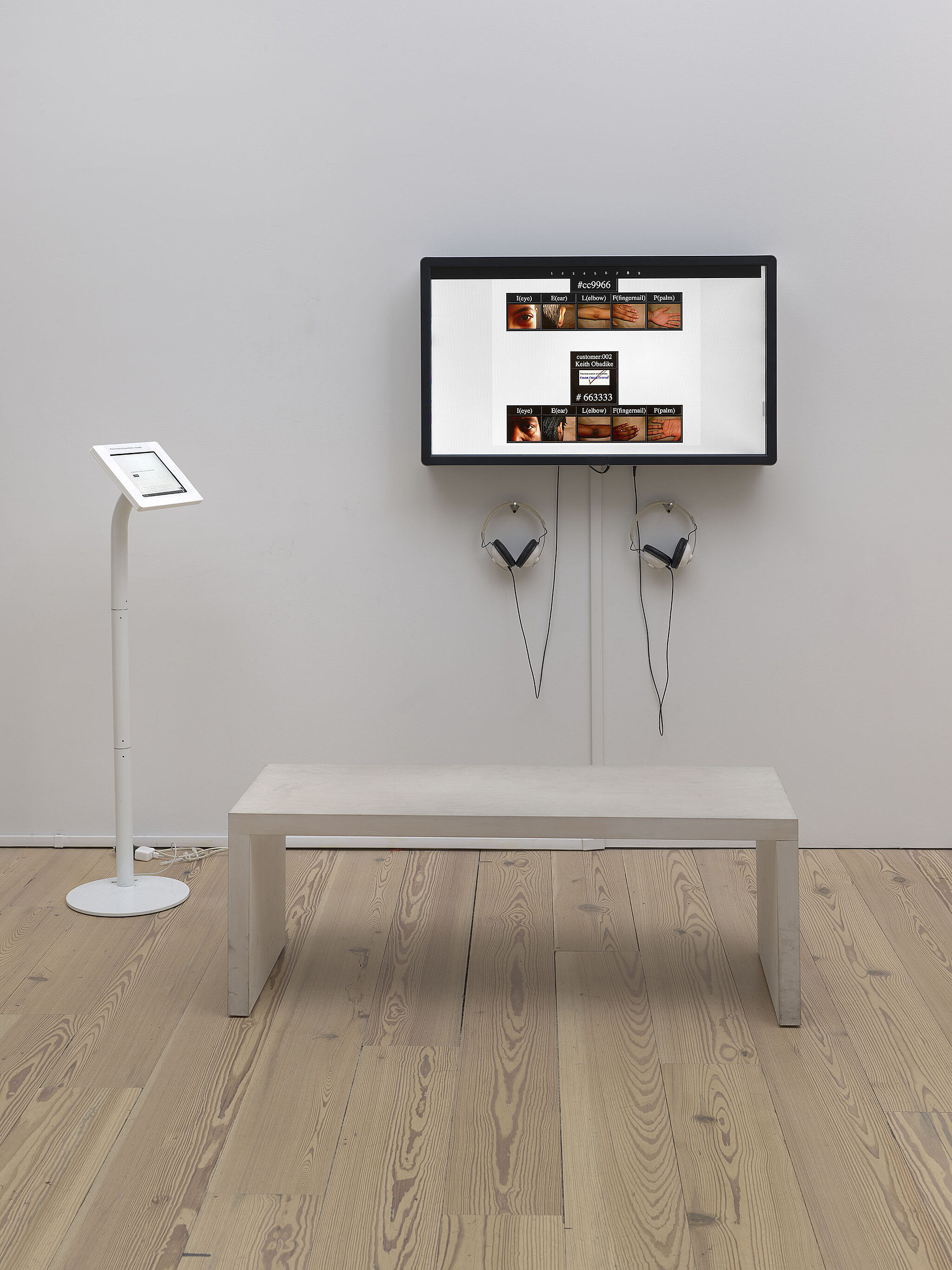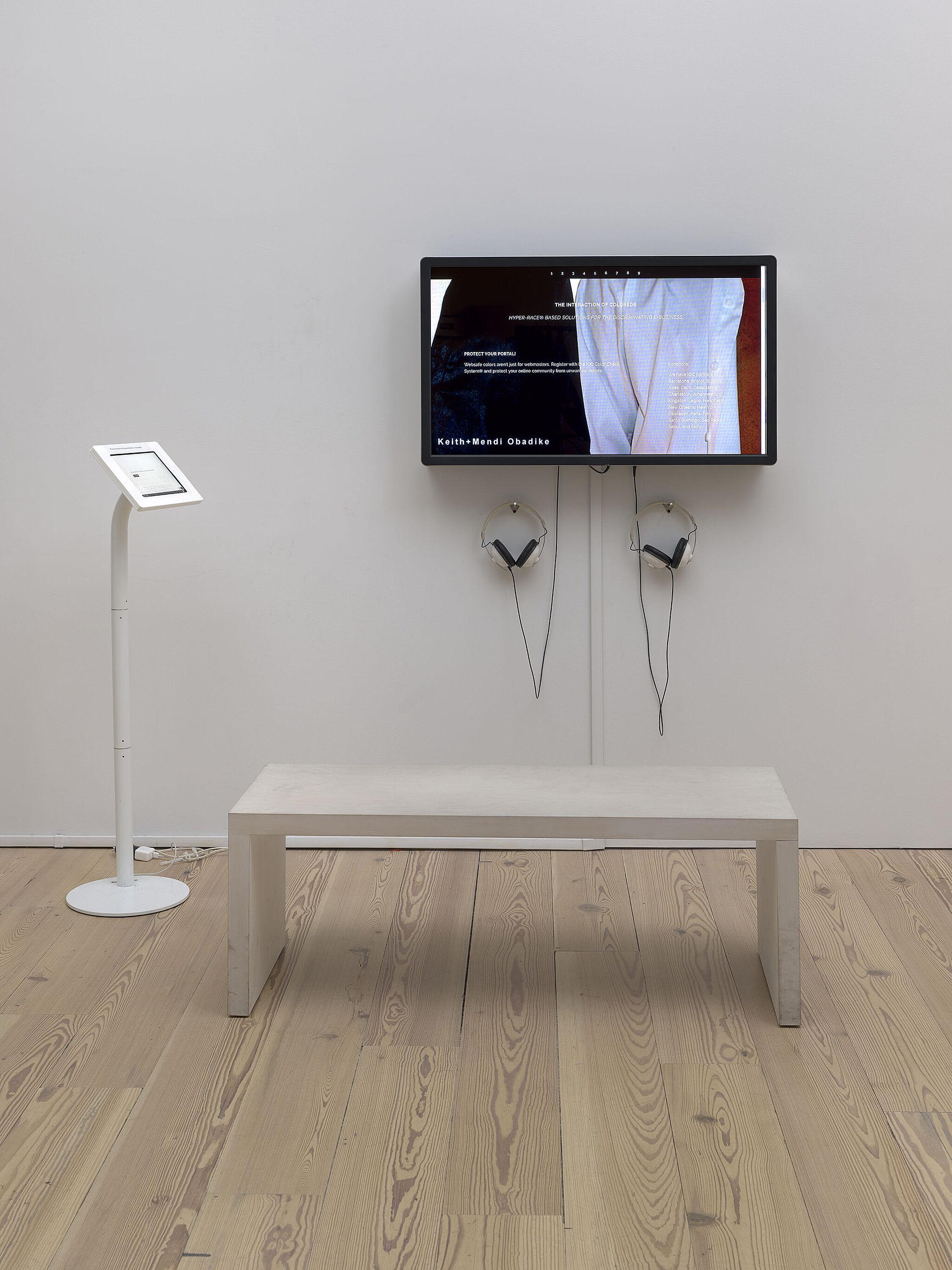Programmed: Rules, Codes, and Choreographies in Art, 1965–2018
Sept 28, 2018–Apr 14, 2019
Programmed: Rules, Codes, and Choreographies in Art, 1965–2018
Programmed: Rules, Codes, and Choreographies in Art, 1965–2018 establishes connections between works of art based on instructions, spanning over fifty years of conceptual, video, and computational art. The pieces in the exhibition are all “programmed” using instructions, sets of rules, and code, but they also address the use of programming in their creation. The exhibition links two strands of artistic exploration: the first examines the program as instructions, rules, and algorithms with a focus on conceptual art practices and their emphasis on ideas as the driving force behind the art; the second strand engages with the use of instructions and algorithms to manipulate the TV program, its apparatus, and signals or image sequences. Featuring works drawn from the Whitney’s collection, Programmed looks back at predecessors of computational art and shows how the ideas addressed in those earlier works have evolved in contemporary artistic practices. At a time when our world is increasingly driven by automated systems, Programmed traces how rules and instructions in art have both responded to and been shaped by technologies, resulting in profound changes to our image culture.
The exhibition is organized by Christiane Paul, Adjunct Curator of Digital Art, and Carol Mancusi-Ungaro, Melva Bucksbaum Associate Director for Conservation and Research, with Clémence White, curatorial assistant.
Please be warned this exhibition includes video and projection with a flashing light effect.
Programmed: Rules, Codes, and Choreographies in Art, 1965–2018 is sponsored by Audi
Major support is provided by the Alfred P. Sloan Foundation.
Generous support is provided by the Carl & Marilynn Thoma Art Foundation, the Korea Foundation and the Jon and Mary Shirley Foundation.
Additional support is provided by Hearst.
In-kind support is provided by the Hakuta Family.

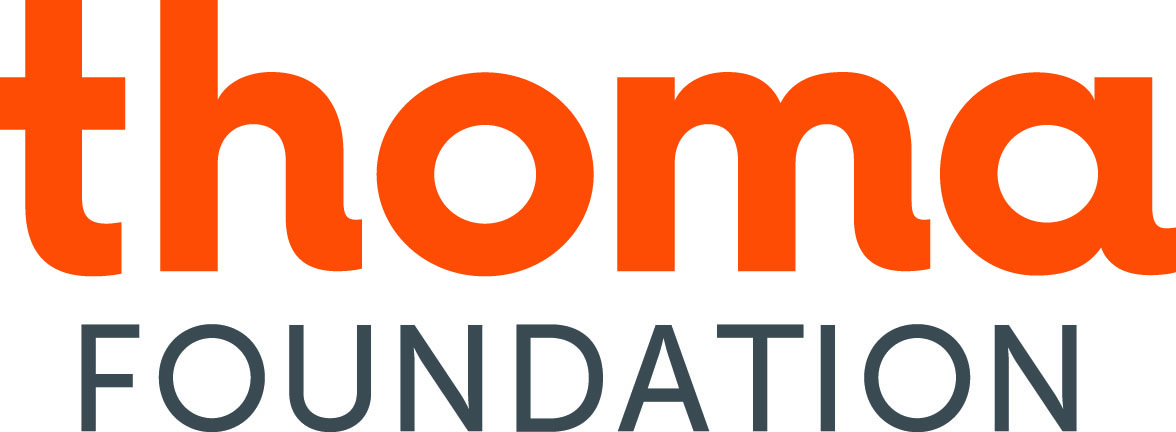
Events
View all-
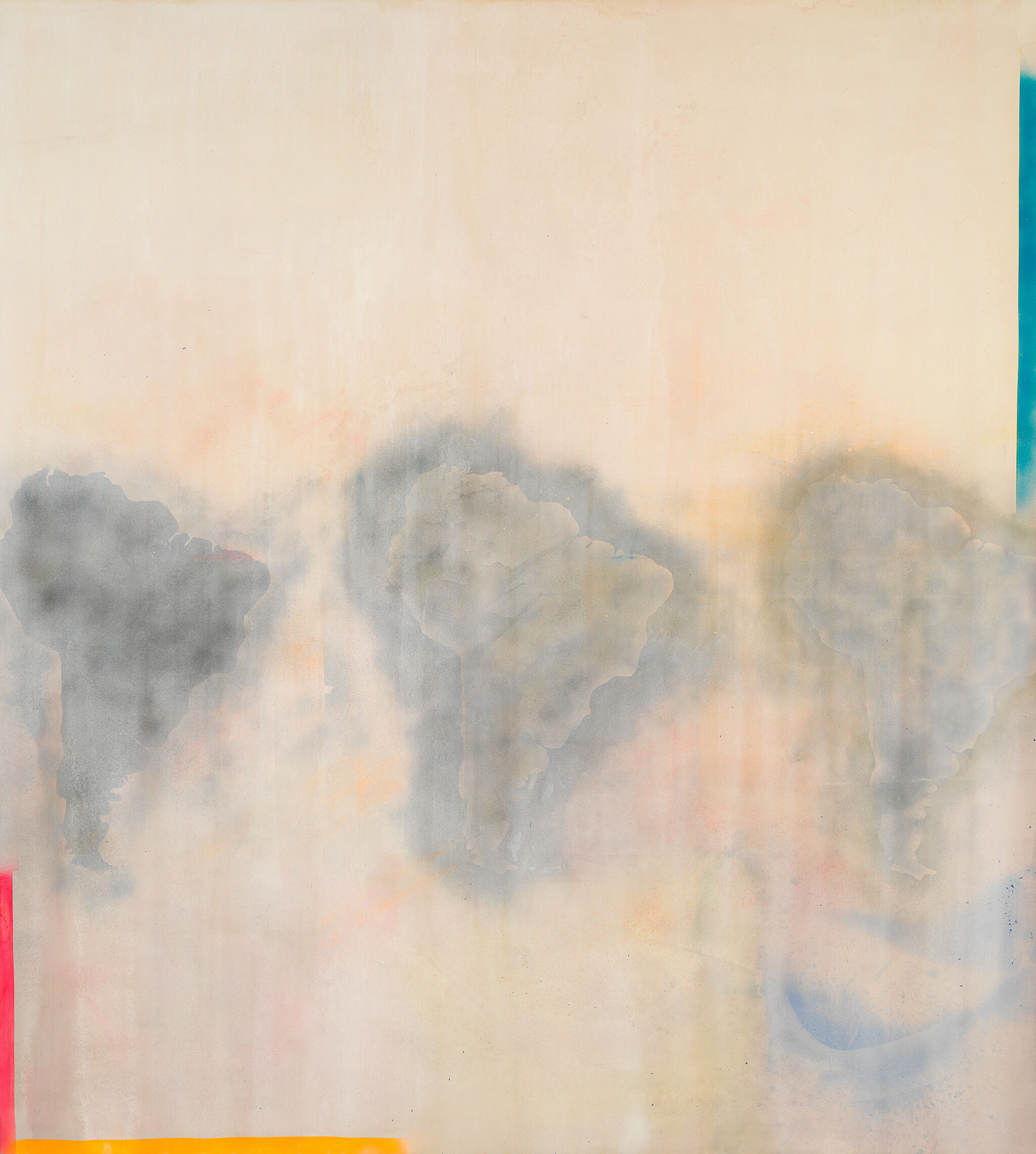
Ethics of Looking
Saturday, April 27, 2019
4:30 pm -
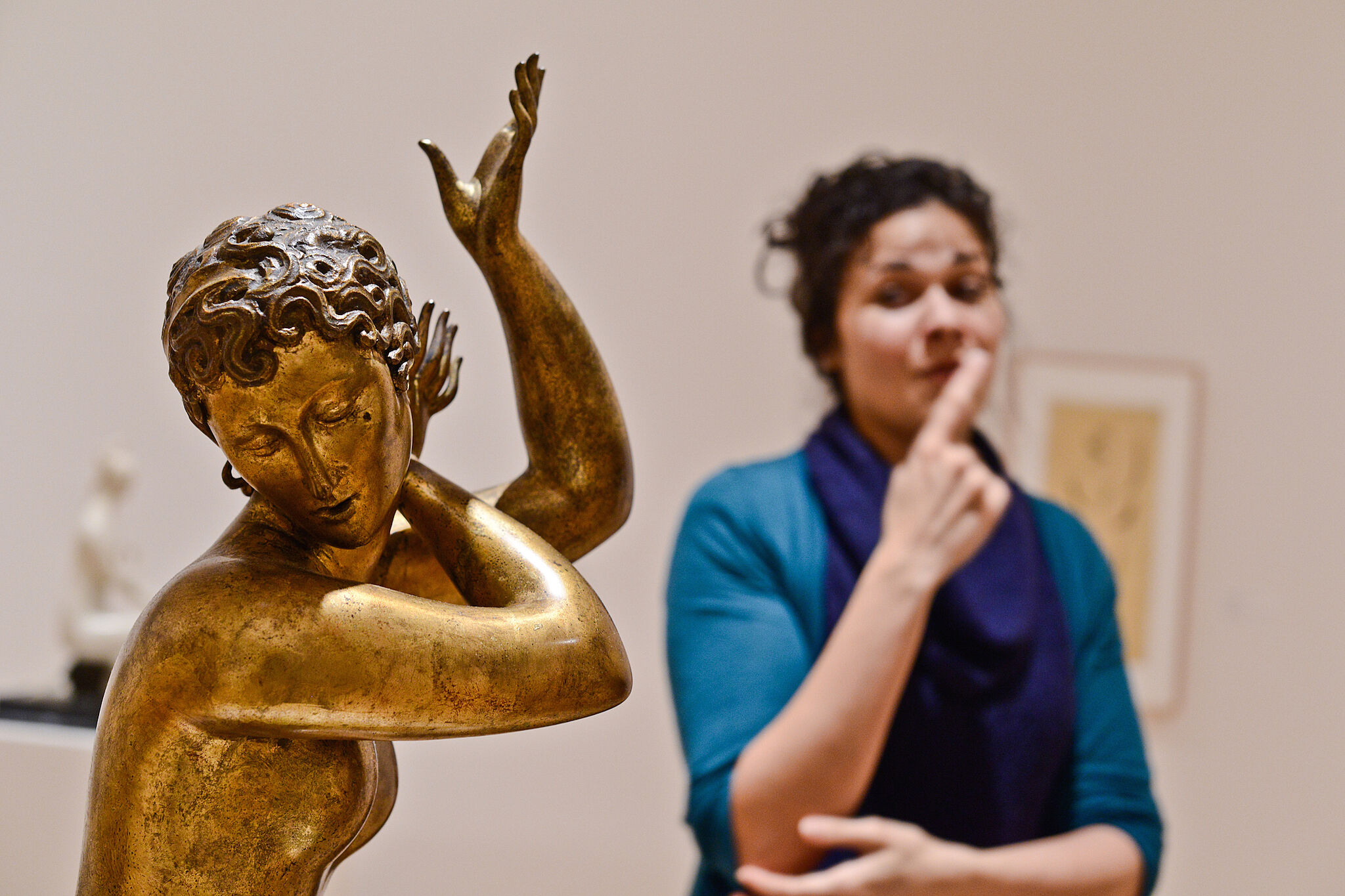
Whitney Signs: Programmed: Rules, Codes, and Choreographies in Art, 1965–2018
Saturday, April 6, 2019
4–6 pm -
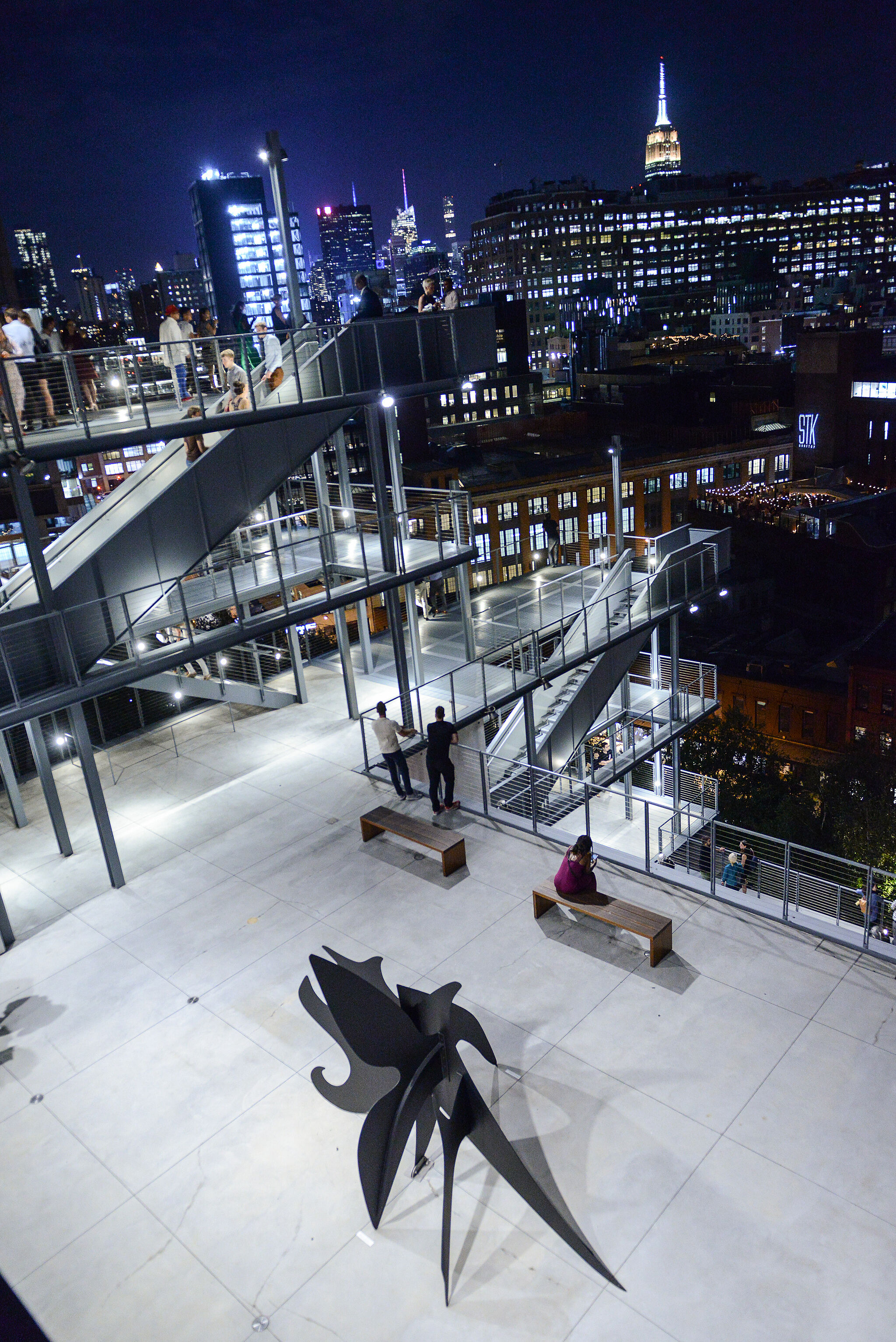
Member Night
Thursday, March 28, 2019
7:30–10 pm -
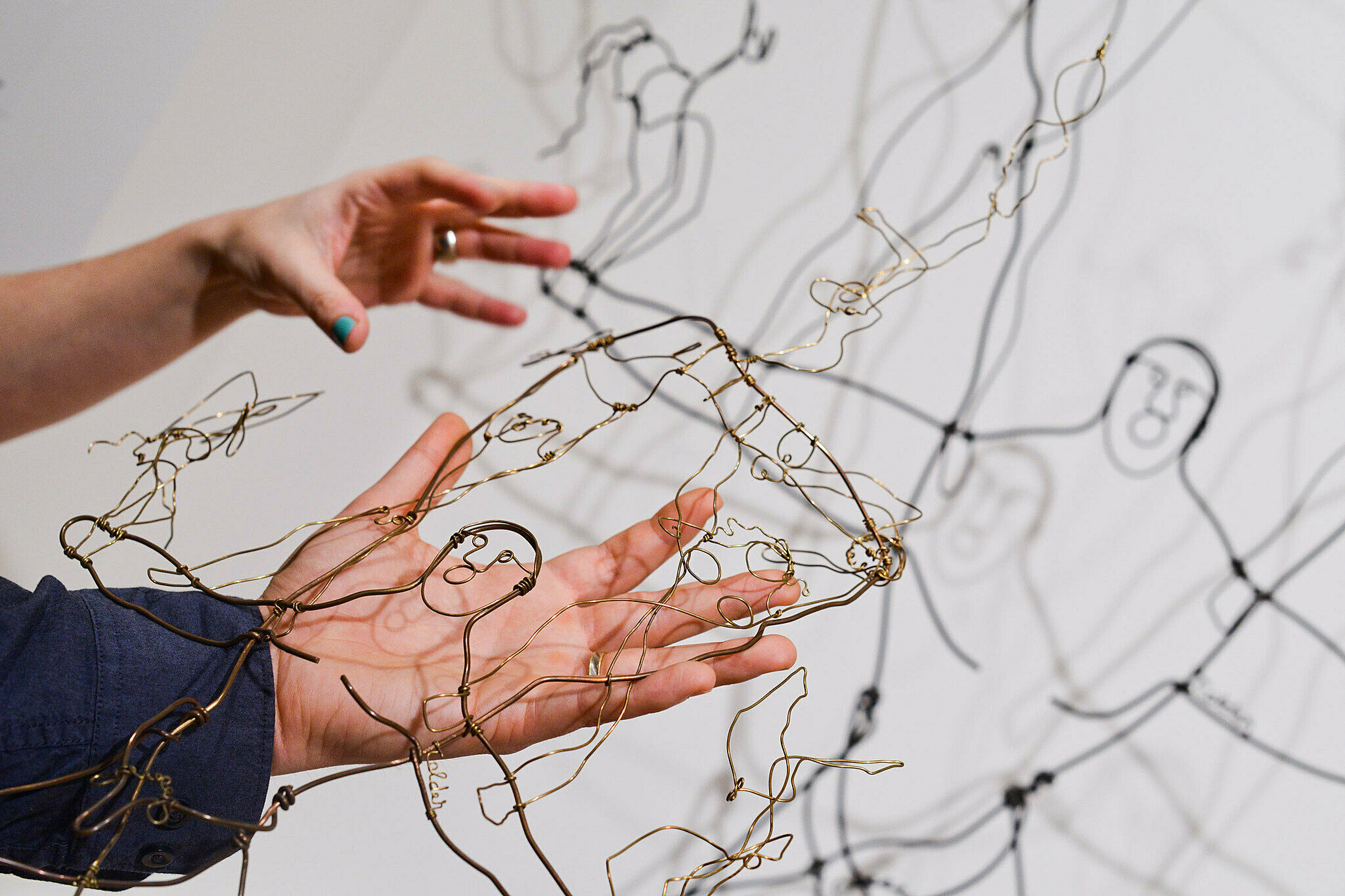
Verbal Description and Touch Tour: Programmed: Rules, Codes, and Choreographies in Art, 1965–2018
Friday, March 22, 2019
10–11:30 am
Installation photography
-
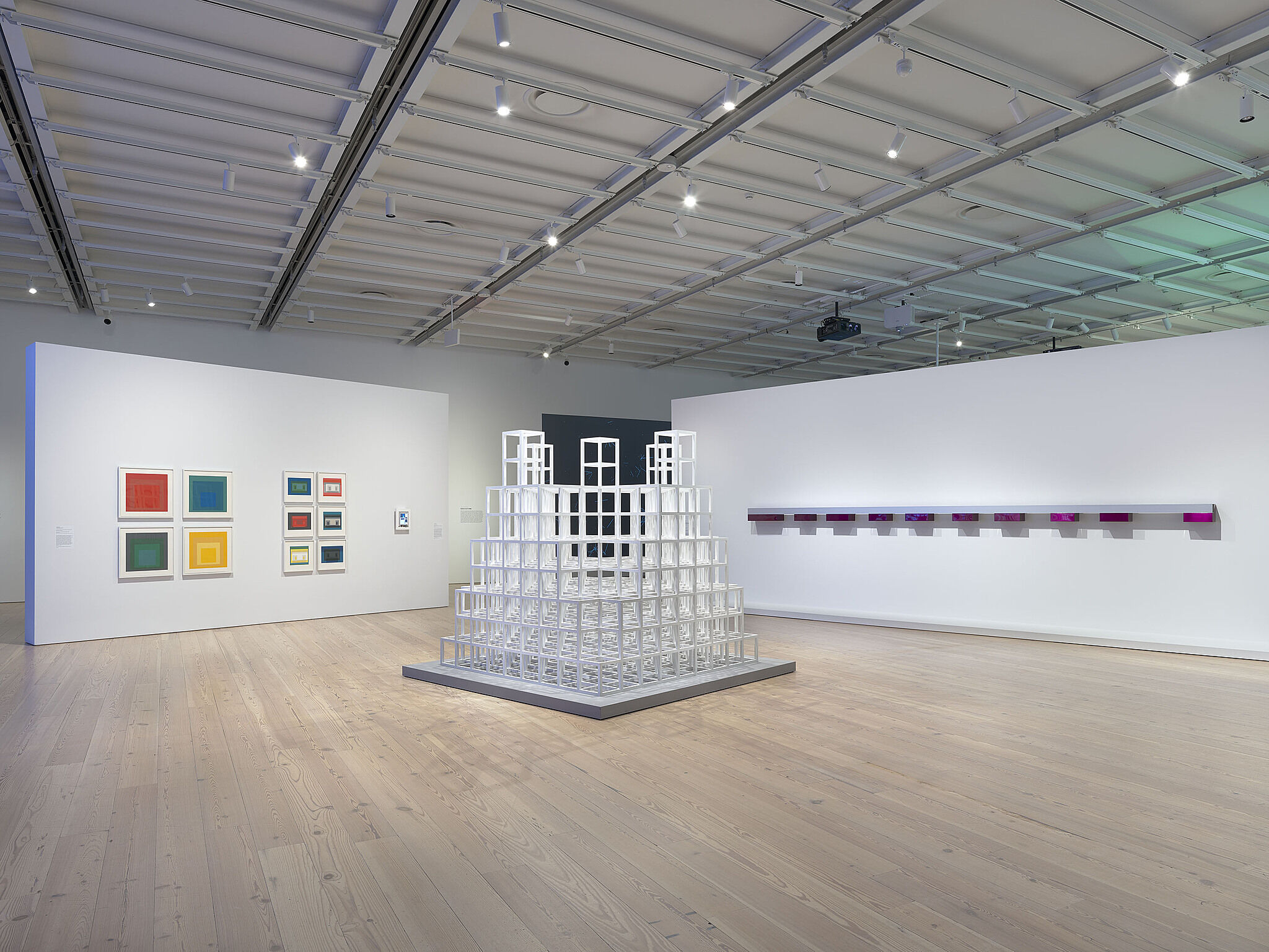

Installation view of Programmed: Rules, Codes, and Choreographies in Art, 1965–2018 (Whitney Museum of American Art, New York, September 28, 2018–April 14, 2019). From left to right, top to bottom: Josef Albers, Homage to the Square V, 1967; Josef Albers, Homage to the Square IX, 1967; Josef Albers, Homage to the Square XII, 1967; Josef Albers, Homage to the Square X, 1967; Josef Albers, Variant V, 1966; Josef Albers, Variant VI, 1966; Josef Albers, Variant X, 1966; Josef Albers, Variant IV, 1966; Josef Albers, Variant II, 1966; Josef Albers, Variant VII, 1966; John F. Simon Jr., Color Panel v1.0, 1999; Sol LeWitt, Five Towers, 1986; Casey Reas, {Software} Structure #003 A, 2004 and 2016; Donald Judd, Untitled, 1965. Photograph by Ron Amstutz
-
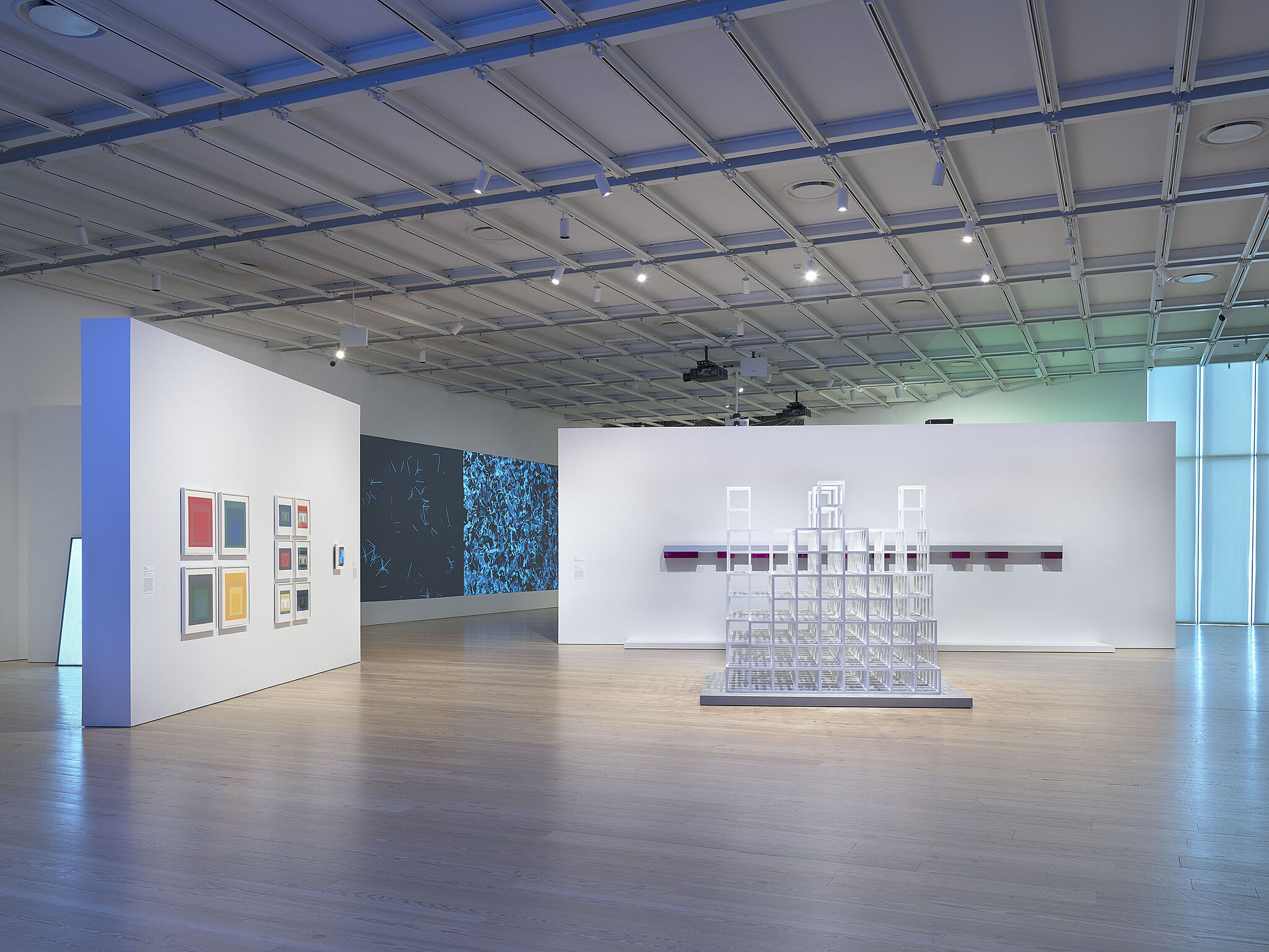

Installation view of Programmed: Rules, Codes, and Choreographies in Art, 1965–2018 (Whitney Museum of American Art, New York, September 28, 2018–April 14, 2019). From left to right, top to bottom: Ian Cheng, Baby feat. Ikaria, 2013; Josef Albers, Homage to the Square V, 1967; Josef Albers, Homage to the Square IX, 1967; Josef Albers, Homage to the Square XII, 1967; Josef Albers, Homage to the Square X, 1967; Josef Albers, Variant V, 1966; Josef Albers, Variant VI, 1966; Josef Albers, Variant X, 1966; Josef Albers, Variant IV, 1966; Josef Albers, Variant II, 1966; Josef Albers, Variant VII, 1966; John F. Simon Jr., Color Panel v1.0, 1999; Casey Reas, {Software} Structure #003 A, 2004 and 2016; Casey Reas, {Software} Structure #003 B, 2004 and 2016; Donald Judd, Untitled, 1965; Sol LeWitt, Five Towers, 1986. Photograph by Ron Amstutz
-
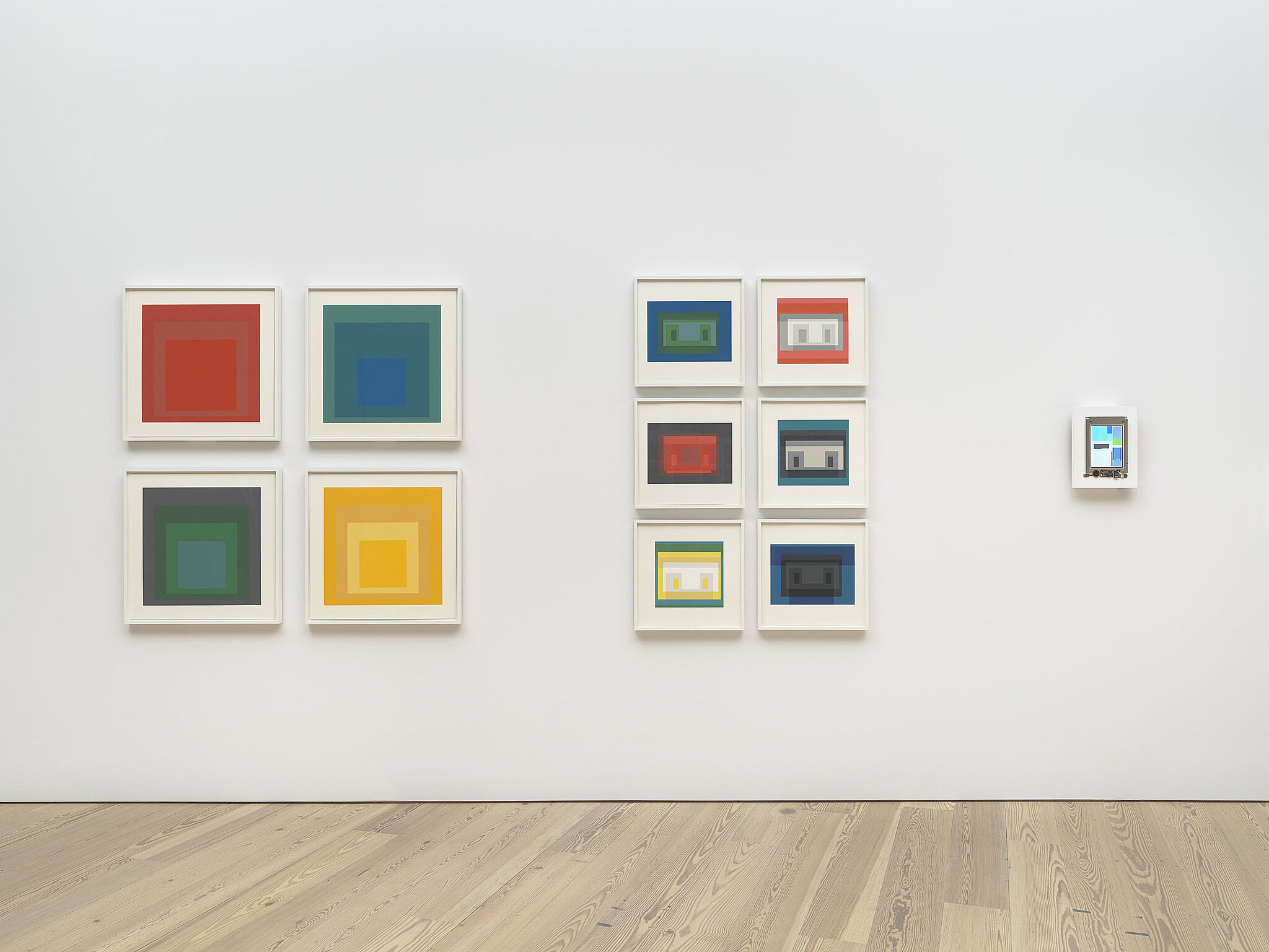

Installation view of Programmed: Rules, Codes, and Choreographies in Art, 1965–2018 (Whitney Museum of American Art, New York, September 28, 2018–April 14, 2019). From left to right, top to bottom: Josef Albers, Homage to the Square V, 1967; Josef Albers, Homage to the Square IX, 1967; Josef Albers, Homage to the Square XII, 1967; Josef Albers, Homage to the Square X, 1967; Josef Albers, Variant V, 1966; Josef Albers, Variant VI, 1966; Josef Albers, Variant X, 1966; Josef Albers, Variant IV, 1966; Josef Albers, Variant II, 1966; Josef Albers, Variant VII, 1966; John F. Simon Jr., Color Panel v1.0, 1999. Photograph by Ron Amstutz
-
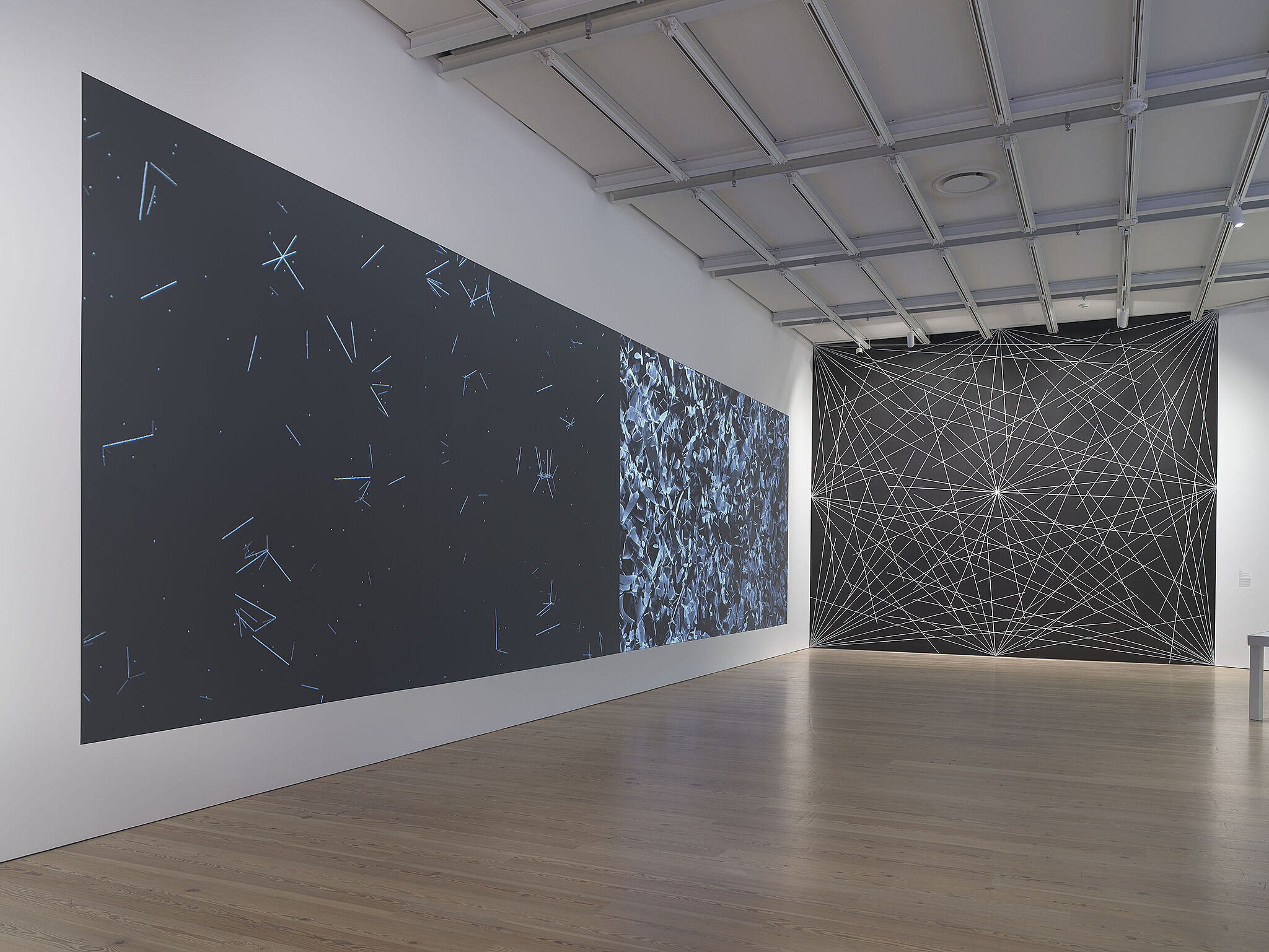

Installation view of Programmed: Rules, Codes, and Choreographies in Art, 1965–2018 (Whitney Museum of American Art, New York, September 28, 2018–April 14, 2019). From left to right: Casey Reas, {Software} Structure #003 A, 2004 and 2016; Casey Reas, {Software} Structure #003 B, 2004 and 2016; Sol LeWitt, 4th Wall: 24 lines from the center, 12 lines from the midpoint of each of the sides, 12 lines from each corner, 1976. Photograph by Ron Amstutz
-
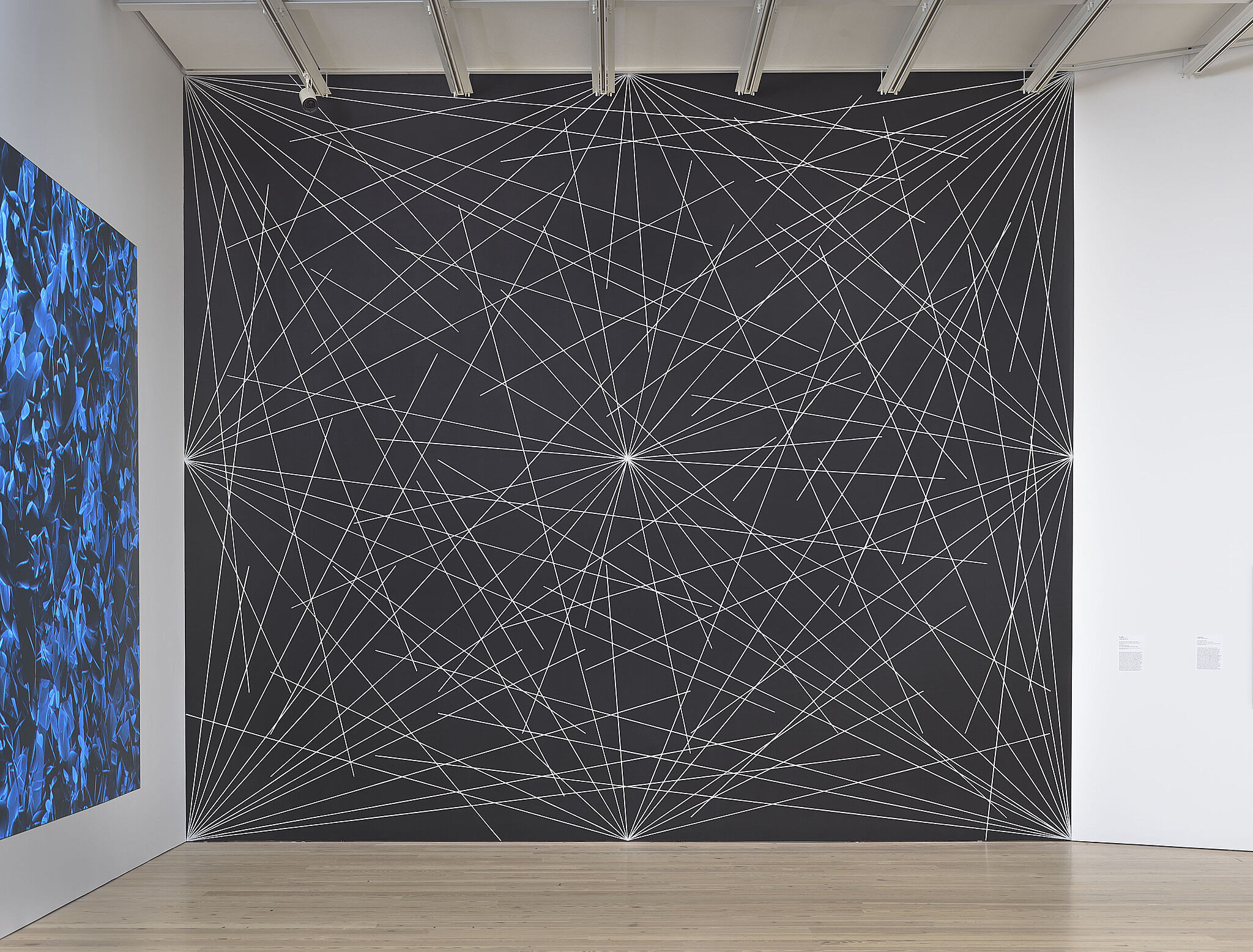

Installation view of Programmed: Rules, Codes, and Choreographies in Art, 1965–2018 (Whitney Museum of American Art, New York, September 28, 2018–April 14, 2019). Sol LeWitt, 4th wall: 24 lines from the center, 12 lines from the midpoint of each of the sides, 12 lines from each corner, 1976, from Wall Drawing #289. Photograph by Ron Amstutz. © 2020 Sol LeWitt/Artists Rights Society (ARS), New York. Photograph by Ron Amstutz
-
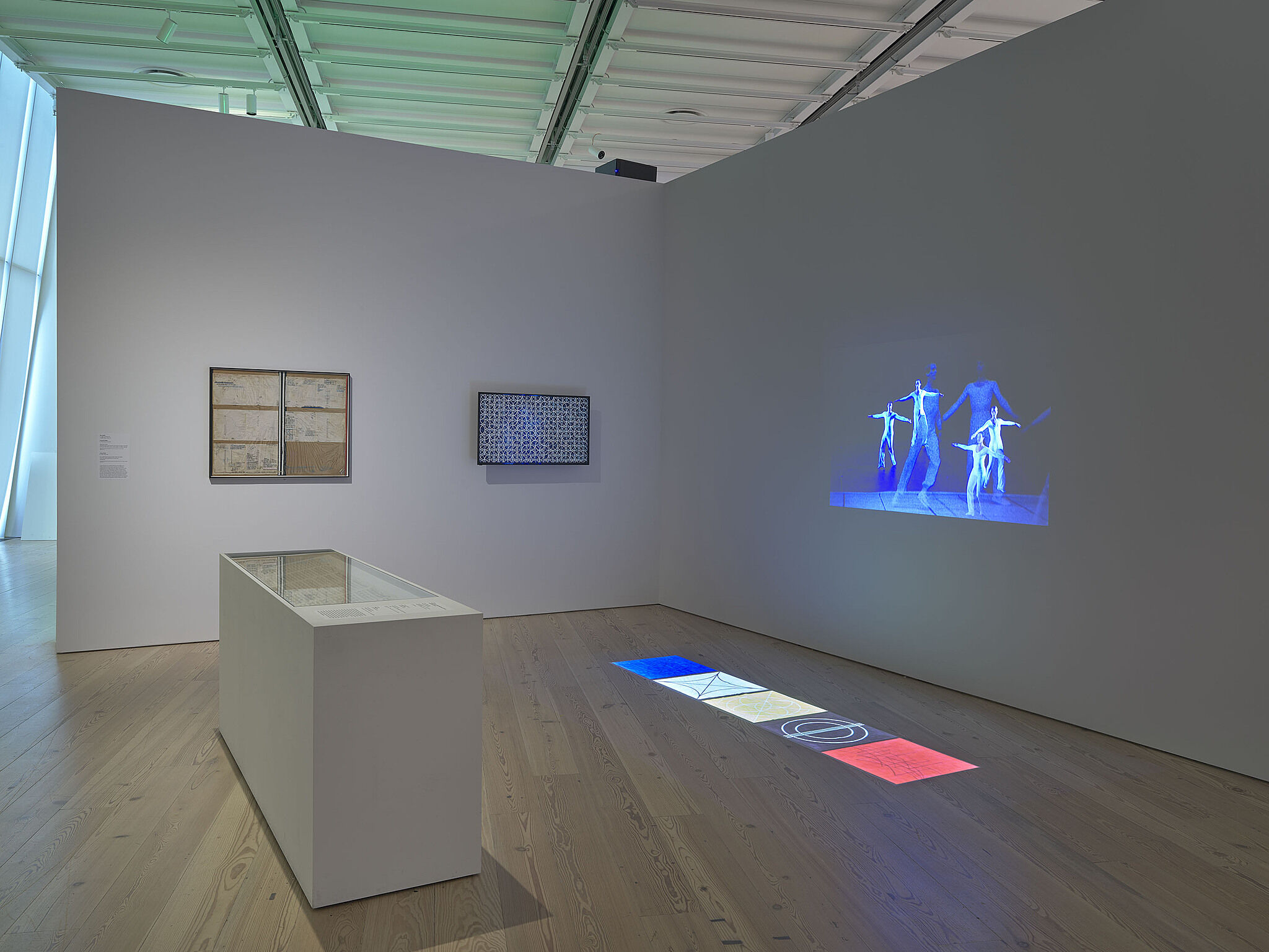

Installation view of Programmed: Rules, Codes, and Choreographies in Art, 1965–2018 (Whitney Museum of American Art, New York, September 28, 2018–April 14, 2019). From left to right: Sol LeWitt and Lucinda Childs, Dance #4, 1979; Casey Reas, Sol LeWitt Wall Drawing #358, 2004 and 2016; Lucinda Childs, Philip Glass, and Sol LeWitt, Dance, 1979 and 2014. On floor, left to right: Lucinda Childs, Dance #1, 1979; Lucinda Childs, Dance #2, 1979; Lucinda Childs, Dance #3, 1979; Lucinda Childs, Dance #4, 1979; Lucinda Childs, Dance #5, 1979. Photograph by Ron Amstutz
-
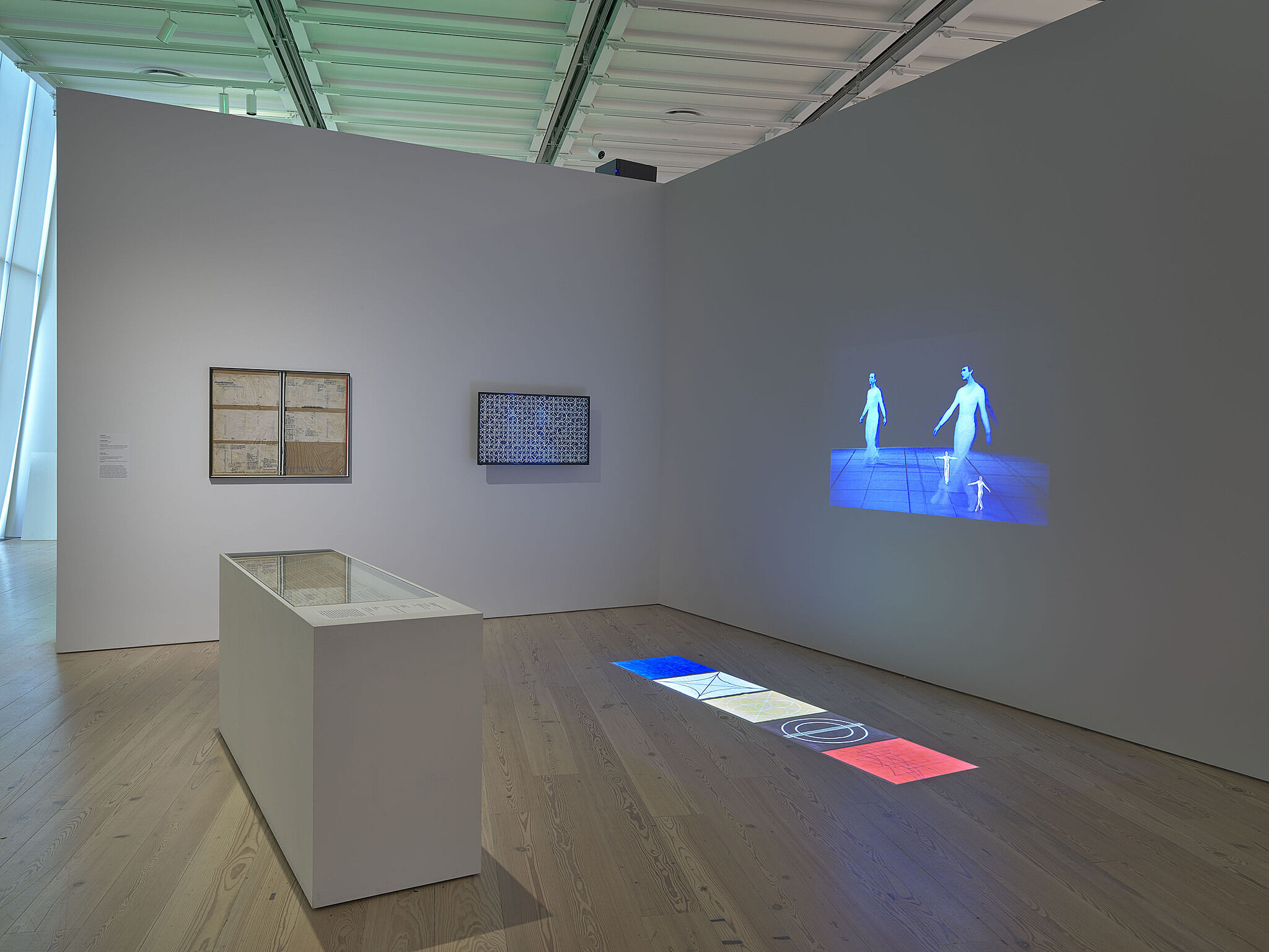

Installation view of Programmed: Rules, Codes, and Choreographies in Art, 1965–2018 (Whitney Museum of American Art, New York, September 28, 2018–April 14, 2019). From left to right: Sol LeWitt and Lucinda Childs, Dance #4, 1979; Casey Reas, Sol LeWitt Wall Drawing #358, 2004 and 2016; Lucinda Childs, Philip Glass, and Sol LeWitt, Dance, 1979 and 2014. On floor, left to right: Lucinda Childs, Dance #1, 1979; Lucinda Childs, Dance #2, 1979; Lucinda Childs, Dance #3, 1979; Lucinda Childs, Dance #4, 1979; Lucinda Childs, Dance #5, 1979. Photograph by Ron Amstutz
-
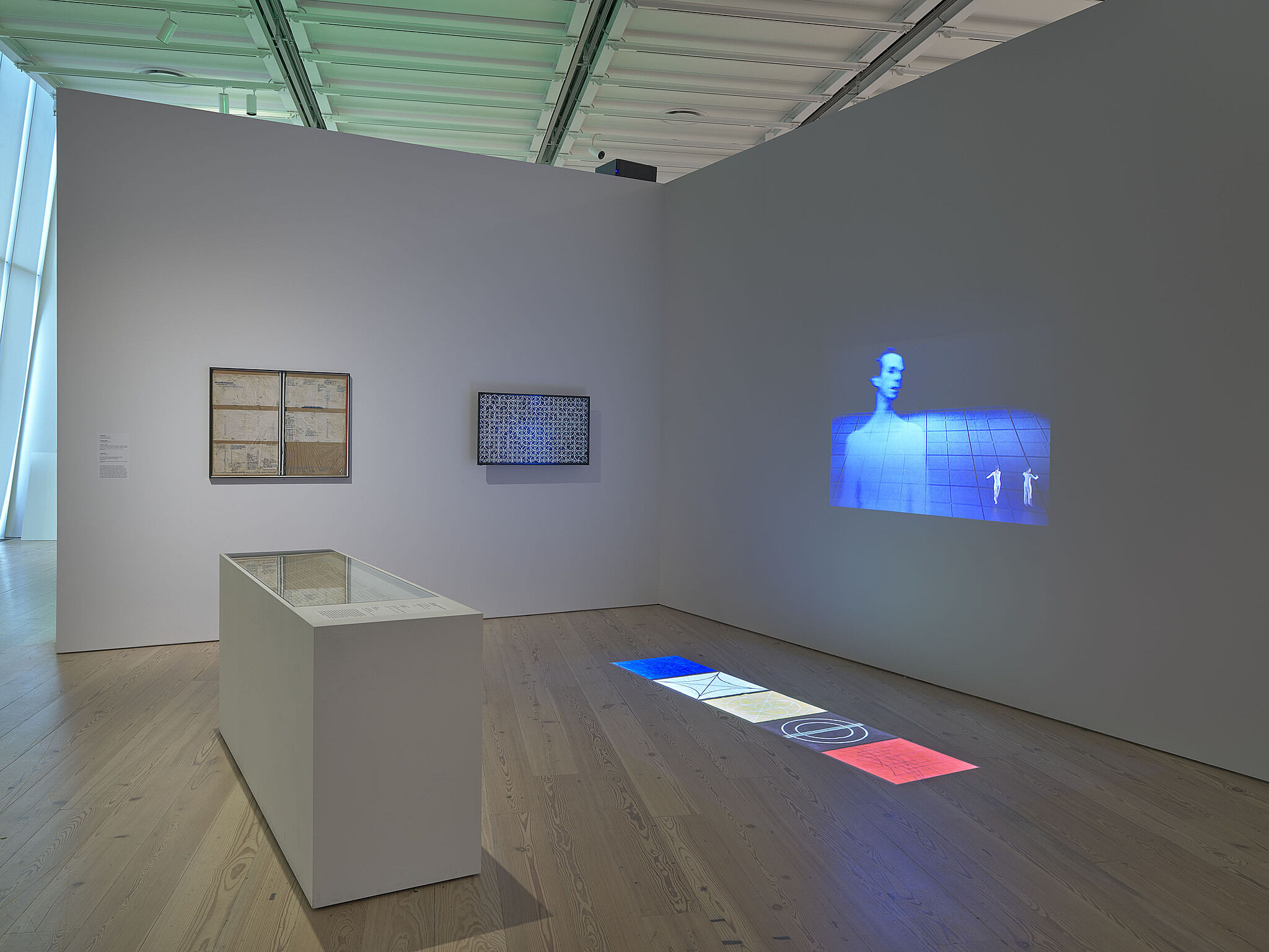

Installation view of Programmed: Rules, Codes, and Choreographies in Art, 1965–2018 (Whitney Museum of American Art, New York, September 28, 2018–April 14, 2019). From left to right: Sol LeWitt and Lucinda Childs, Dance #4, 1979; Casey Reas, Sol LeWitt Wall Drawing #358, 2004 and 2016; Lucinda Childs, Philip Glass, and Sol LeWitt, Dance, 1979 and 2014. On floor, left to right: Lucinda Childs, Dance #1, 1979; Lucinda Childs, Dance #2, 1979; Lucinda Childs, Dance #3, 1979; Lucinda Childs, Dance #4, 1979; Lucinda Childs, Dance #5, 1979. Photograph by Ron Amstutz
-
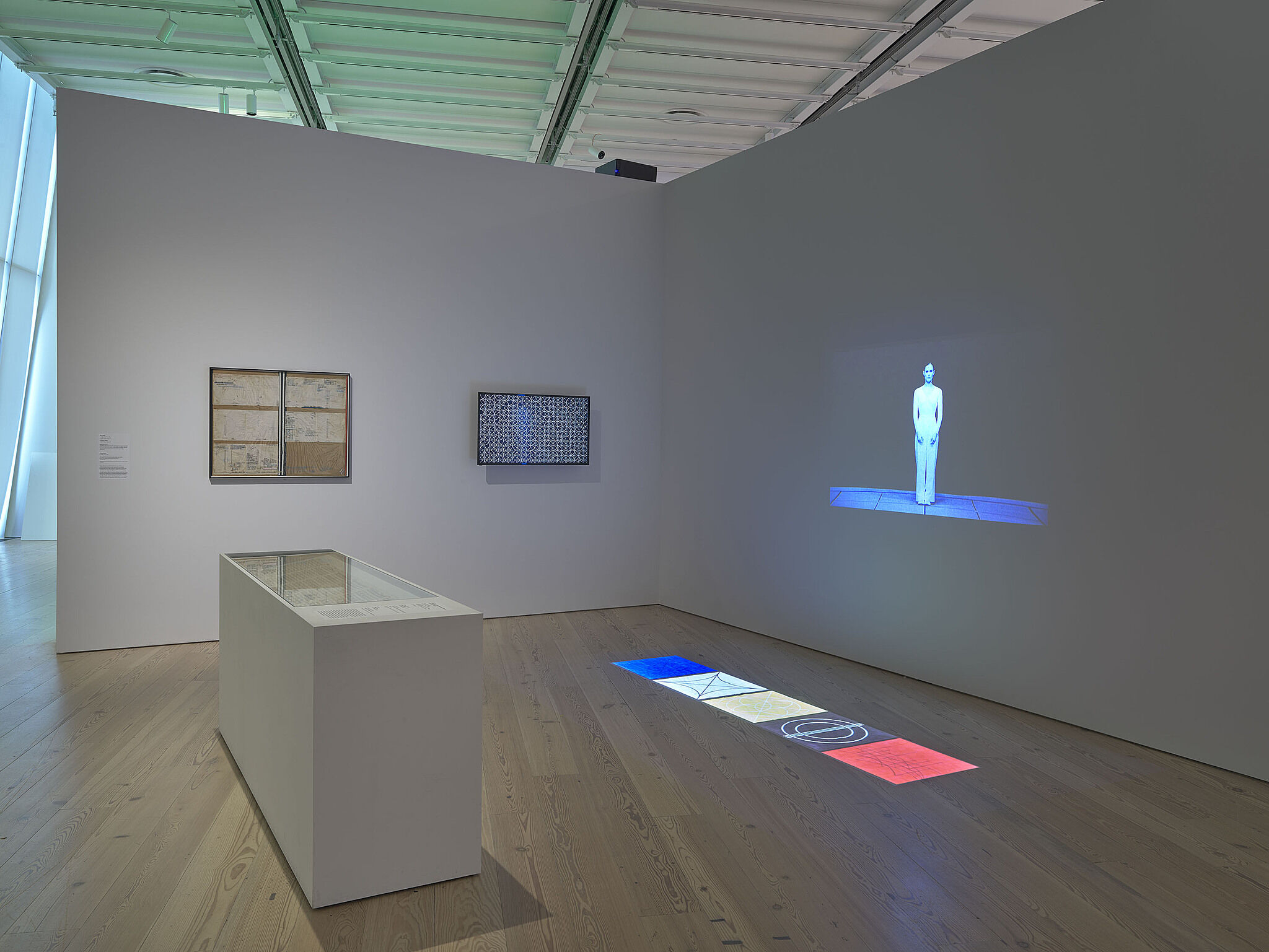

Installation view of Programmed: Rules, Codes, and Choreographies in Art, 1965–2018 (Whitney Museum of American Art, New York, September 28, 2018–April 14, 2019). From left to right: Sol LeWitt and Lucinda Childs, Dance #4, 1979; Casey Reas, Sol LeWitt Wall Drawing #358, 2004 and 2016; Lucinda Childs, Philip Glass, and Sol LeWitt, Dance, 1979 and 2014. On floor, left to right: Lucinda Childs, Dance #1, 1979; Lucinda Childs, Dance #2, 1979; Lucinda Childs, Dance #3, 1979; Lucinda Childs, Dance #4, 1979; Lucinda Childs, Dance #5, 1979. Photograph by Ron Amstutz
-
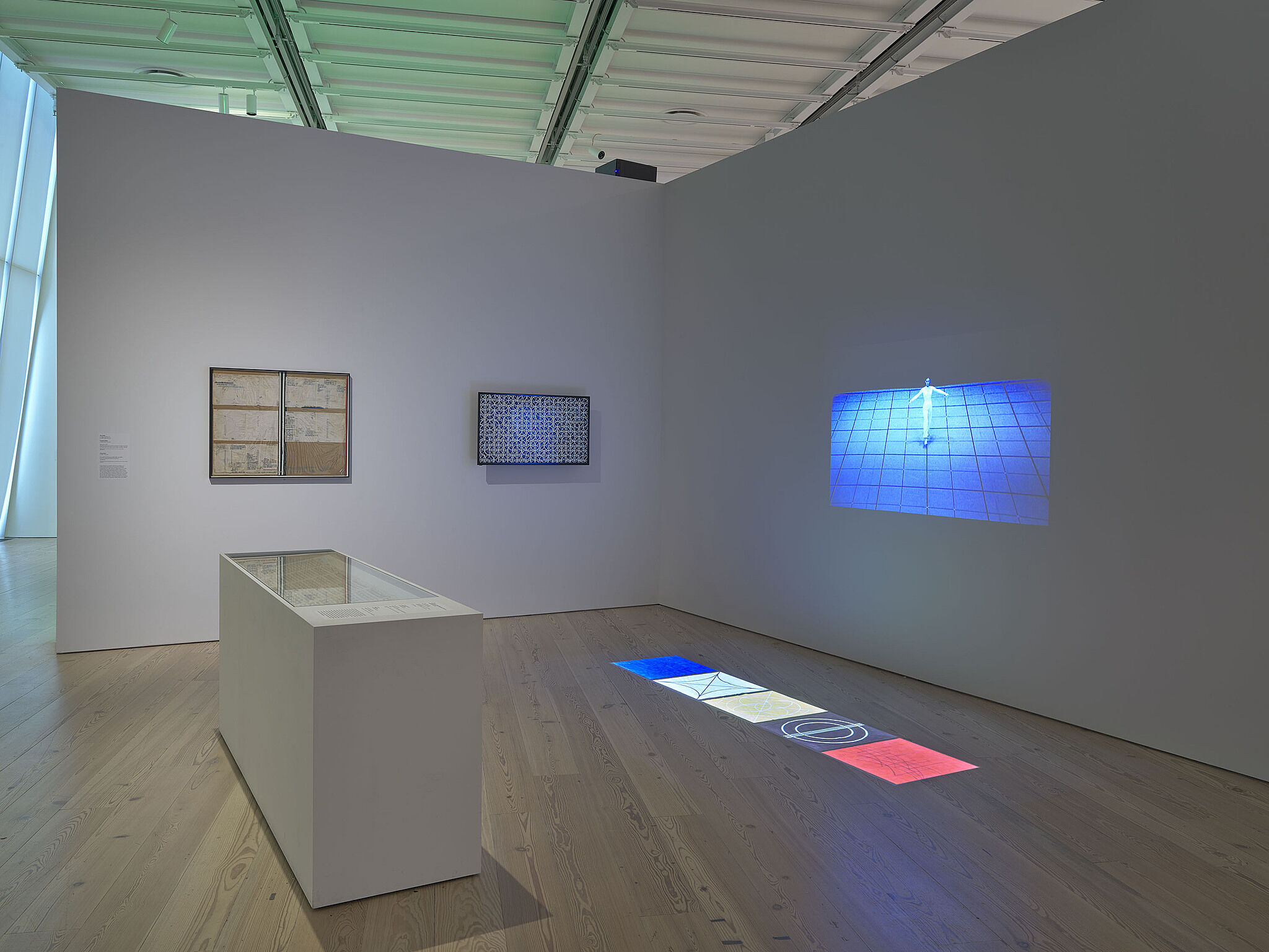

Installation view of Programmed: Rules, Codes, and Choreographies in Art, 1965–2018 (Whitney Museum of American Art, New York, September 28, 2018–April 14, 2019). From left to right: Sol LeWitt and Lucinda Childs, Dance #4, 1979; Casey Reas, Sol LeWitt Wall Drawing #358, 2004 and 2016; Lucinda Childs, Philip Glass, and Sol LeWitt, Dance, 1979 and 2014. On floor, left to right: Lucinda Childs, Dance #1, 1979; Lucinda Childs, Dance #2, 1979; Lucinda Childs, Dance #3, 1979; Lucinda Childs, Dance #4, 1979; Lucinda Childs, Dance #5, 1979. Photograph by Ron Amstutz
-
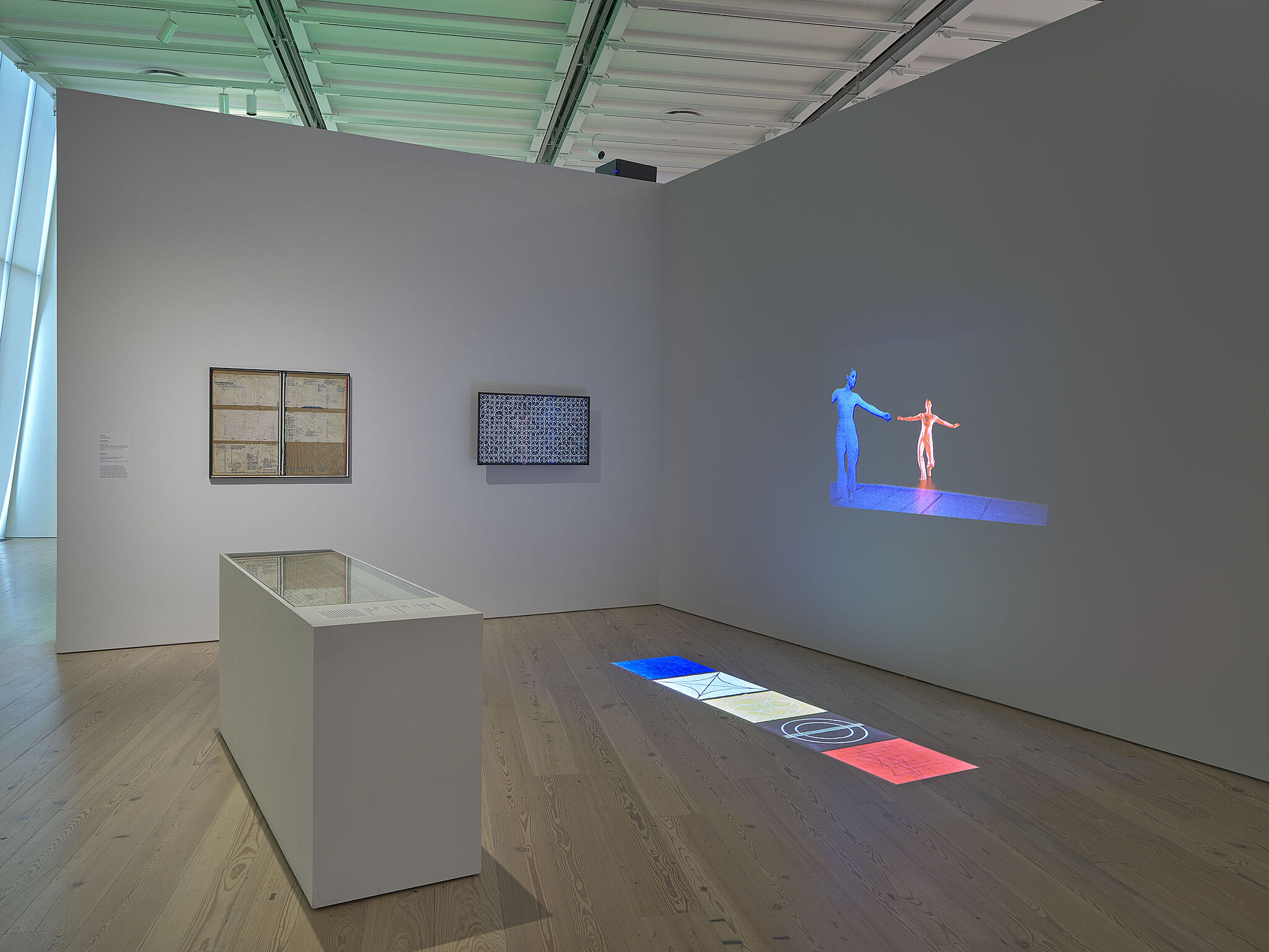

Installation view of Programmed: Rules, Codes, and Choreographies in Art, 1965–2018 (Whitney Museum of American Art, New York, September 28, 2018–April 14, 2019). From left to right: Sol LeWitt and Lucinda Childs, Dance #4, 1979; Casey Reas, Sol LeWitt Wall Drawing #358, 2004 and 2016; Lucinda Childs, Philip Glass, and Sol LeWitt, Dance, 1979 and 2014. On floor, left to right: Lucinda Childs, Dance #1, 1979; Lucinda Childs, Dance #2, 1979; Lucinda Childs, Dance #3, 1979; Lucinda Childs, Dance #4, 1979; Lucinda Childs, Dance #5, 1979. Photograph by Ron Amstutz
-
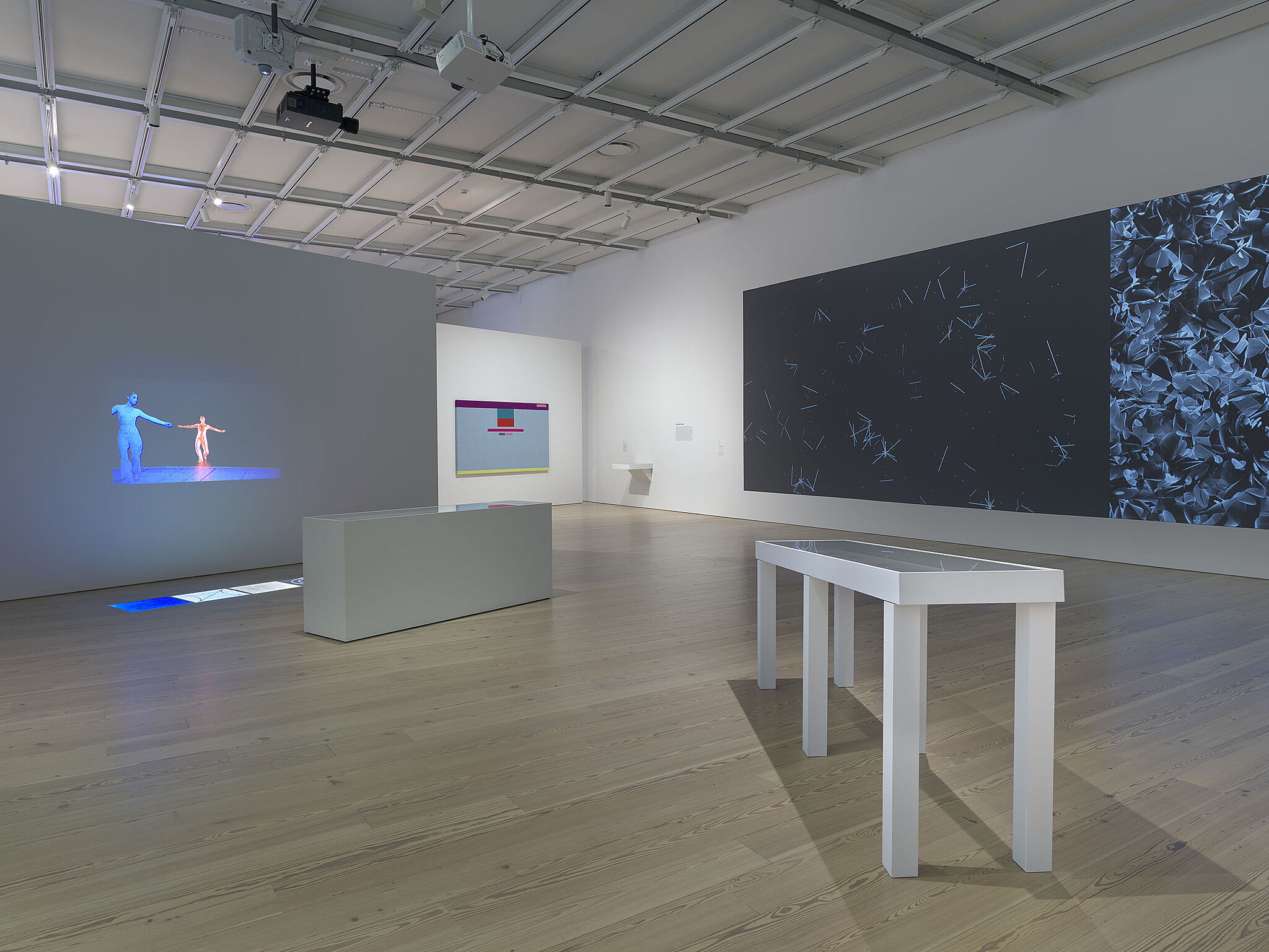

Installation view of Programmed: Rules, Codes, and Choreographies in Art, 1965–2018 (Whitney Museum of American Art, New York, September 28, 2018–April 14, 2019). From left to right: Lucinda Childs, Philip Glass, and Sol LeWitt, Dance, 1979 and 2014; Lucinda Childs, Dance #1, 1979; Lucinda Childs, Dance #2, 1979; Lucinda Childs, Dance #3, 1979; Rafaël Rozendaal, Abstract Browsing 17 03 05 (Google), 2017; Casey Reas, {Software} Structure #003 A, 2004 and 2016; Casey Reas, {Software} Structure #003 B, 2004 and 2016. Photograph by Ron Amstutz
-
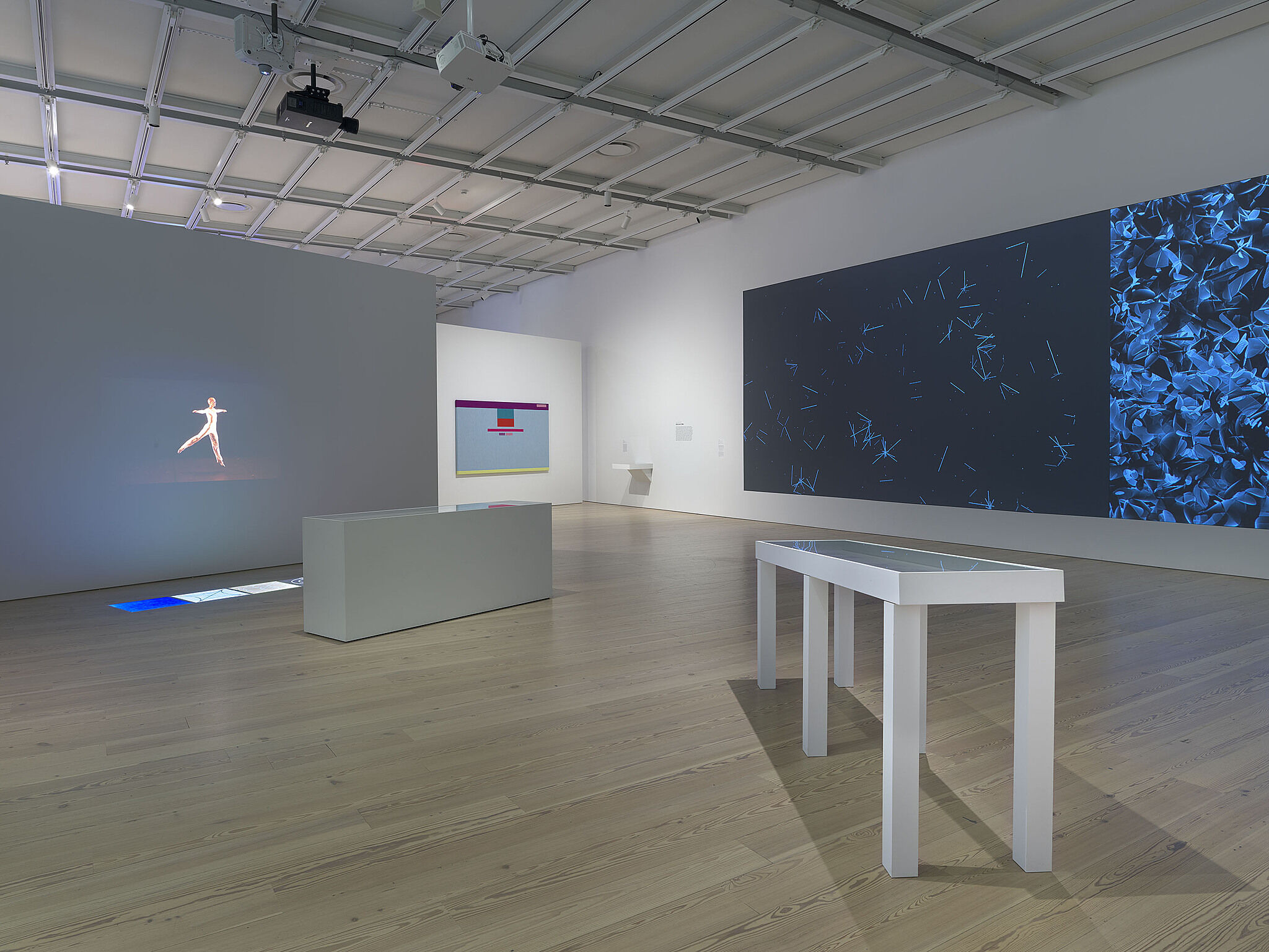

Installation view of Programmed: Rules, Codes, and Choreographies in Art, 1965–2018 (Whitney Museum of American Art, New York, September 28, 2018–April 14, 2019). From left to right: Lucinda Childs, Philip Glass, and Sol LeWitt, Dance, 1979 and 2014; Lucinda Childs, Dance #1, 1979; Lucinda Childs, Dance #2, 1979; Lucinda Childs, Dance #3, 1979; Rafaël Rozendaal, Abstract Browsing 17 03 05 (Google), 2017; Casey Reas, {Software} Structure #003 A, 2004 and 2016; Casey Reas, {Software} Structure #003 B, 2004 and 2016. Photograph by Ron Amstutz
-
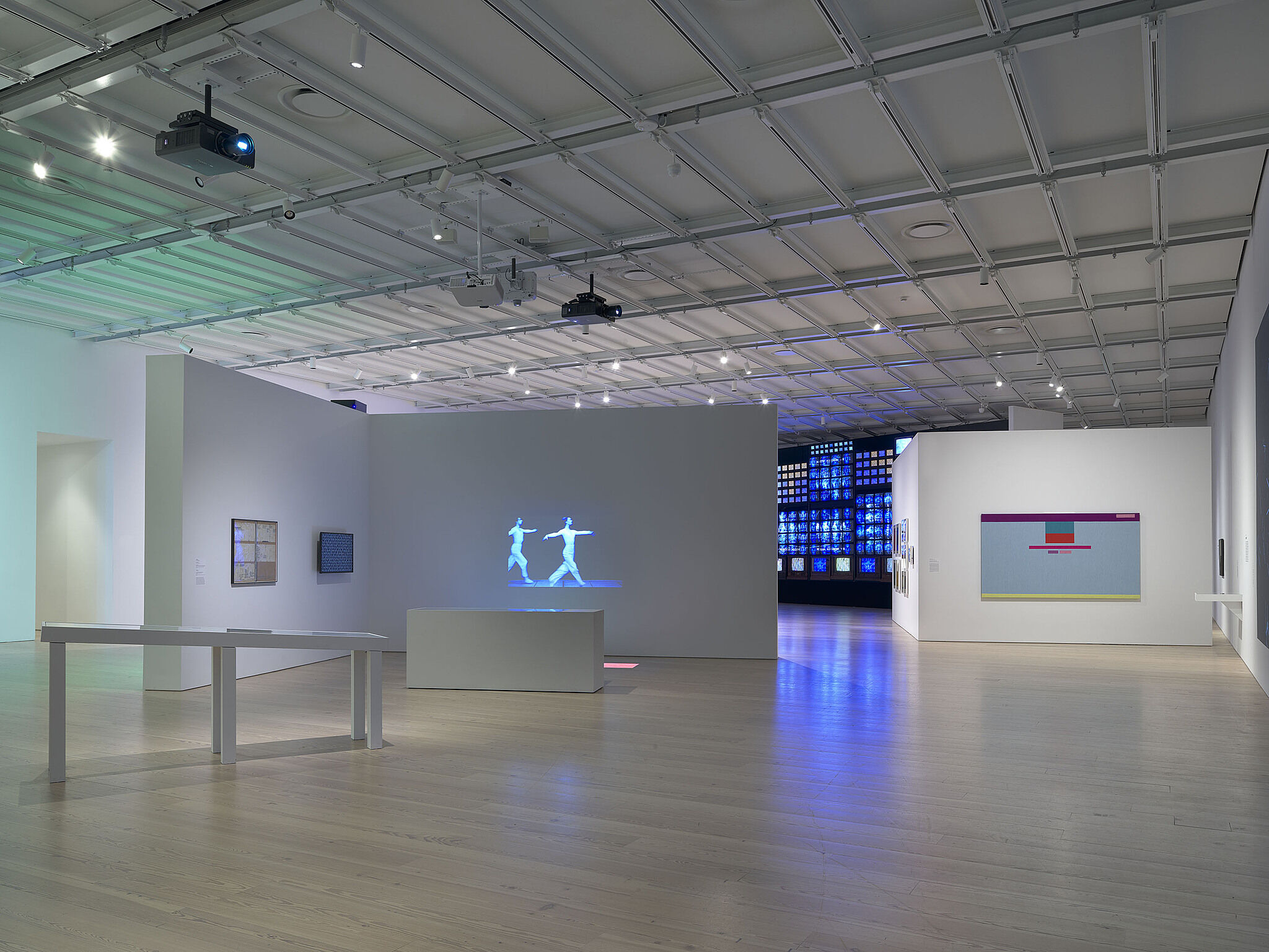

Installation view of Programmed: Rules, Codes, and Choreographies in Art, 1965–2018 (Whitney Museum of American Art, New York, September 28, 2018–April 14, 2019). From left to right: Sol LeWitt and Lucinda Childs, Dance #4, 1979; Casey Reas, Sol LeWitt Wall Drawing #358, 2004 and 2016; Lucinda Childs, Philip Glass, and Sol LeWitt, Dance, 1979 and 2014; Lucinda Childs, Dance #5, 1979; Nam June Paik, Fin de Siècle II, 1989 (partially restored, 2018); Rafaël Rozendaal, Abstract Browsing 17 03 05 (Google), 2017. Photograph by Ron Amstutz
-
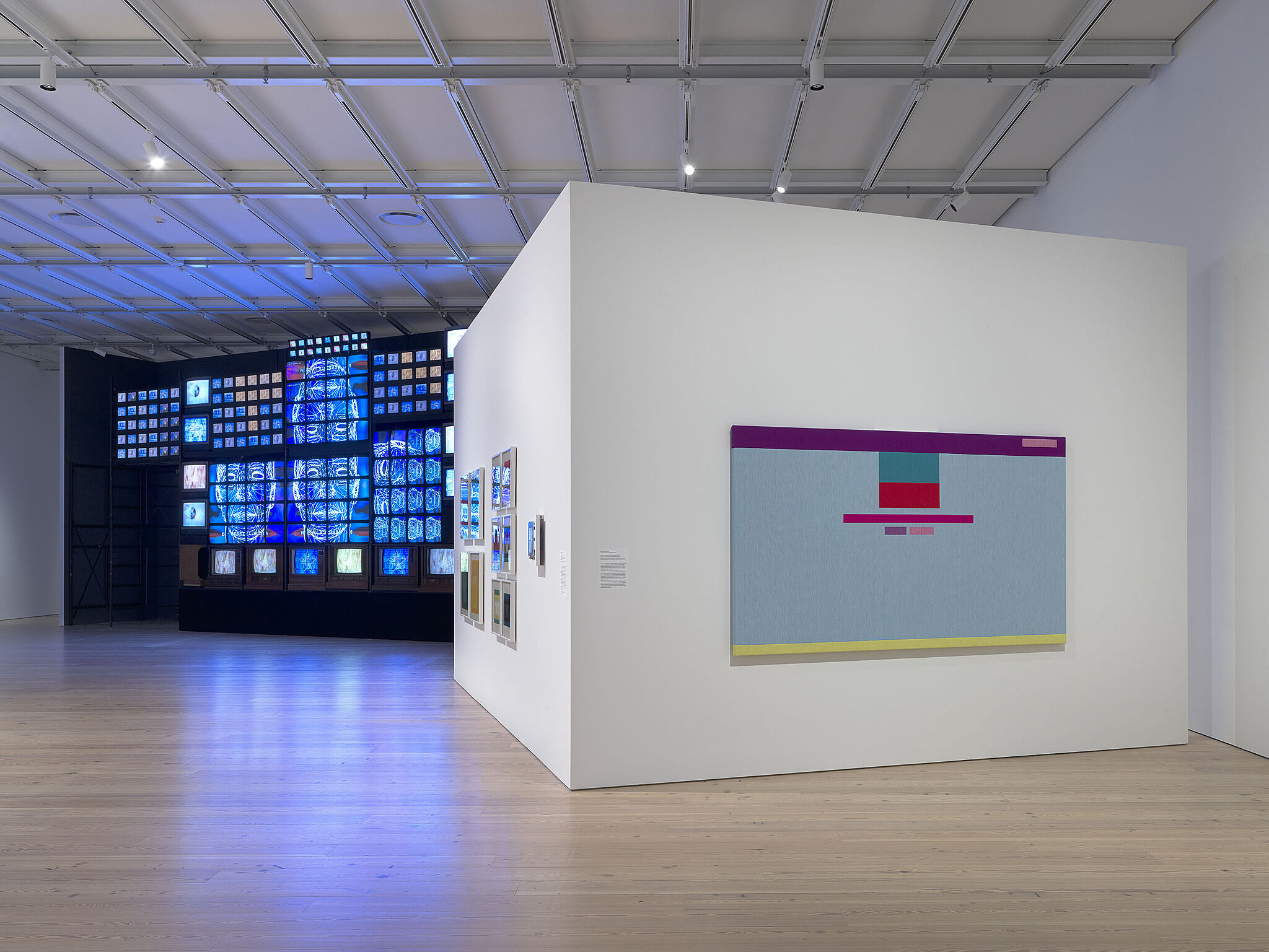

Installation view of Programmed: Rules, Codes, and Choreographies in Art, 1965–2018 (Whitney Museum of American Art, New York, September 28, 2018–April 14, 2019). From left to right, top to bottom: Nam June Paik, Fin de Siècle II, 1989 (partially restored, 2018); Josef Albers, Homage to the Square V, 1967; Josef Albers, Homage to the Square IX, 1967; Josef Albers, Homage to the Square XII, 1967; Josef Albers, Homage to the Square X, 1967; Josef Albers, Variant V, 1966; Josef Albers, Variant VI, 1966; Josef Albers, Variant X, 1966; Josef Albers, Variant IV, 1966; Josef Albers, Variant II, 1966; Josef Albers, Variant VII, 1966; John F. Simon Jr., Color Panel v1.0, 1999; Rafaël Rozendaal, Abstract Browsing 17 03 05 (Google), 2017. Photograph by Ron Amstutz
-
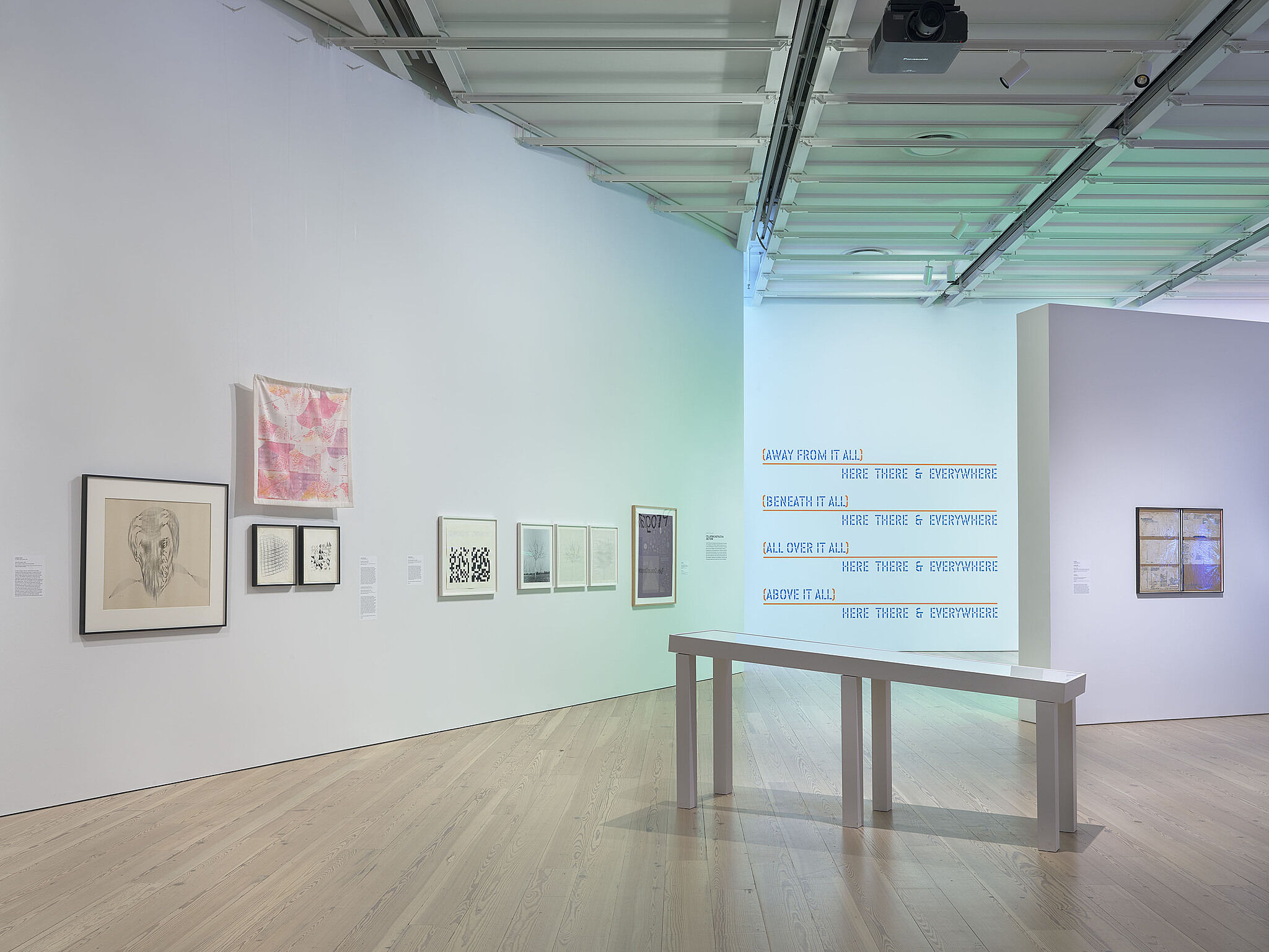

Installation view of Programmed: Rules, Codes, and Choreographies in Art, 1965–2018 (Whitney Museum of American Art, New York, September 28, 2018–April 14, 2019). From left to right, top to bottom: Charles Csuri, Sine Curve Man, 1967; Joan Truckenbrod, Curvilinear Perspective, 1979; Joan Truckenbrod, Coded Algorithmic Drawing (#9), 1975; Joan Truckenbrod, Coded Algorithmic Drawing (#45), 1975; Tauba Auerbach, Binary Uppercase/Lowercase, 2005; Charles Gaines, Walnut Tree Orchard: M1, M2, M3, 1977; Agnes Denes, Dialectic Triangulation: A Visual Philosophy, series #3, 1970; Lawrence Weiner, HERE THERE & EVERYWHERE, 1989; Sol LeWitt and Lucinda Childs, Dance #4, 1979. Photograph by Ron Amstutz
-
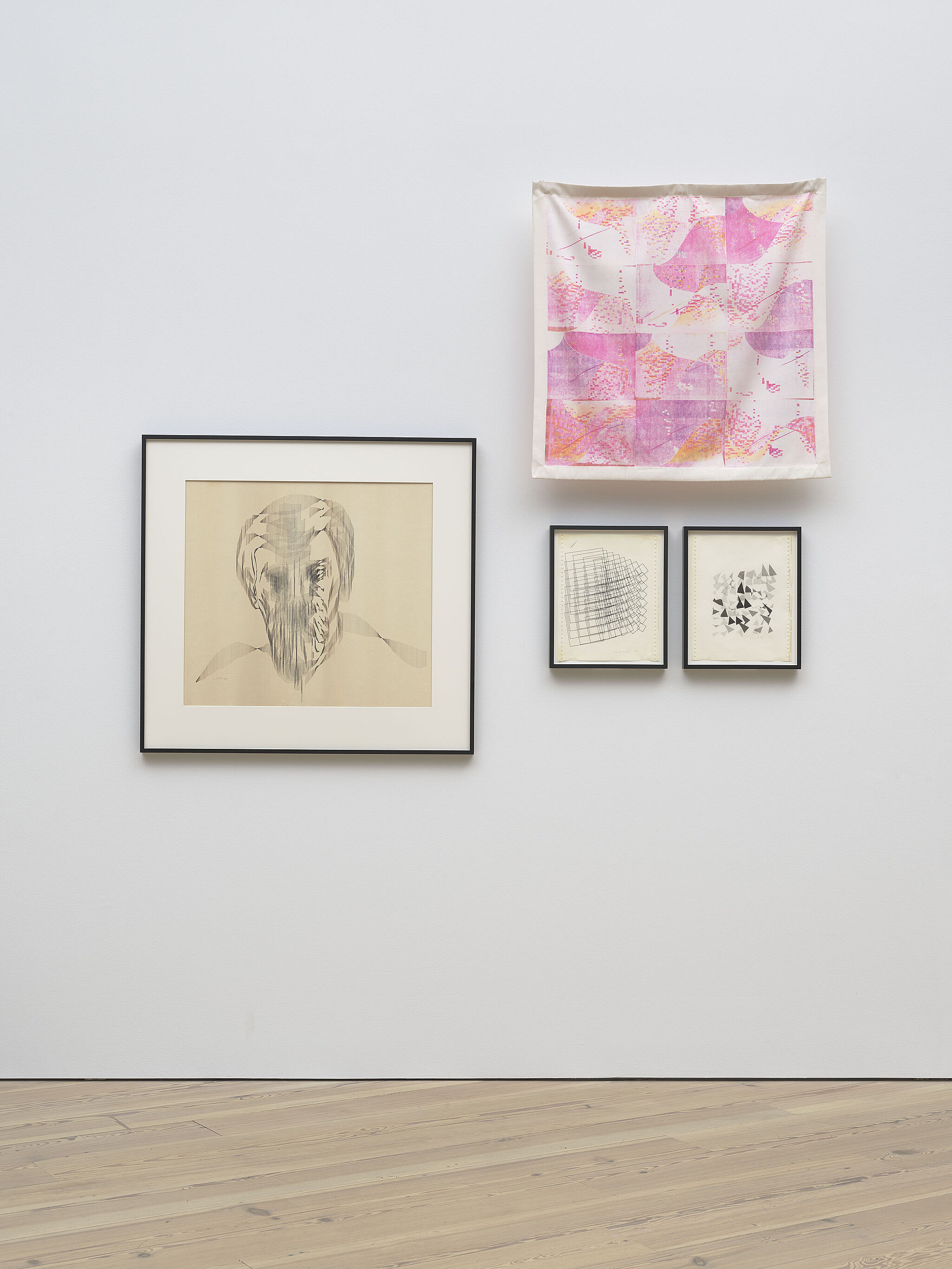

Installation view of Programmed: Rules, Codes, and Choreographies in Art, 1965–2018 (Whitney Museum of American Art, New York, September 28, 2018–April 14, 2019). From left to right, top to bottom: Charles Csuri, Sine Curve Man, 1967; Joan Truckenbrod, Curvilinear Perspective, 1979; Joan Truckenbrod, Coded Algorithmic Drawing (#9), 1975; Joan Truckenbrod, Coded Algorithmic Drawing (#45), 1975. Photograph by Ron Amstutz
-
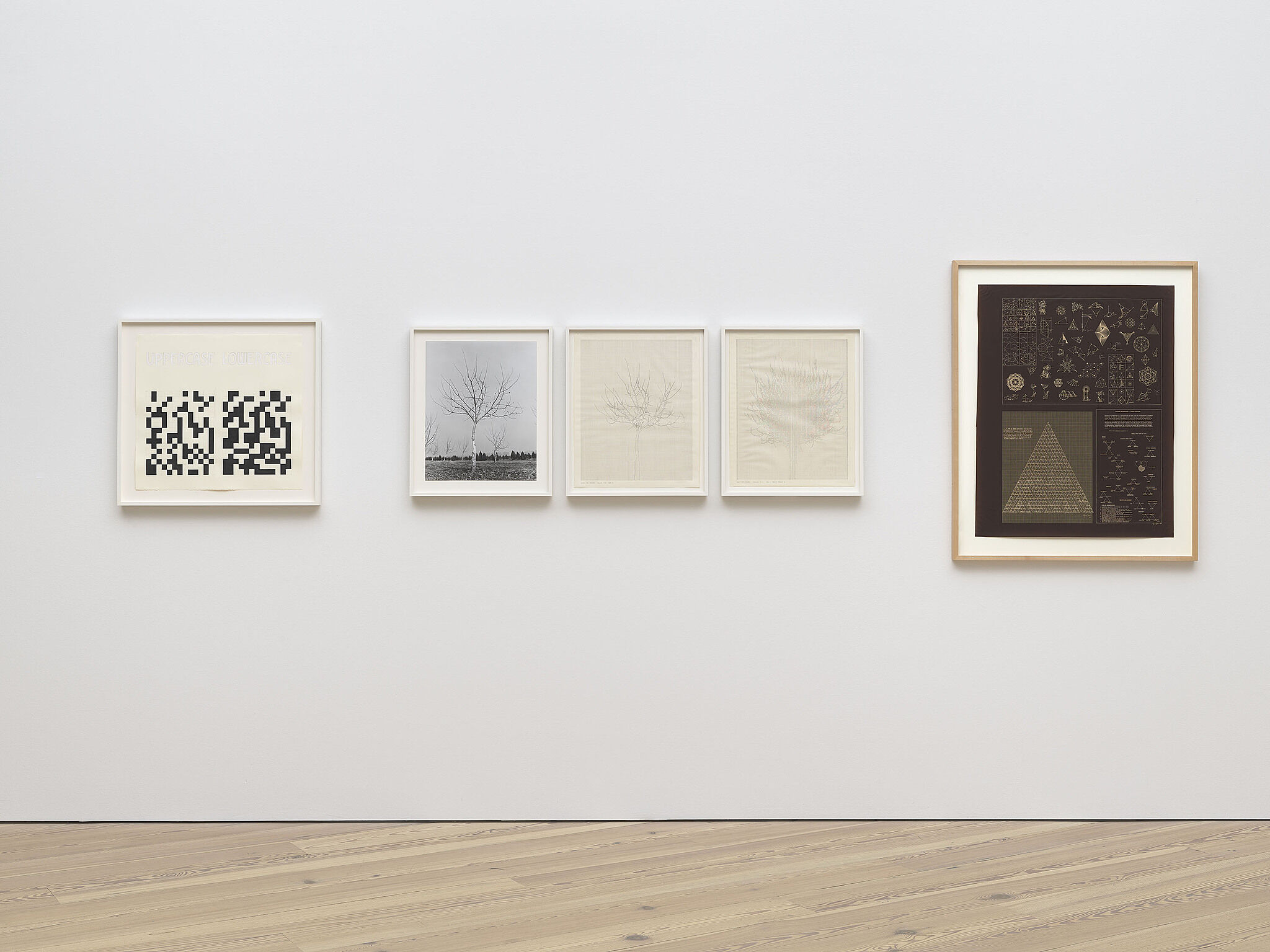

Installation view of Programmed: Rules, Codes, and Choreographies in Art, 1965–2018 (Whitney Museum of American Art, New York, September 28, 2018–April 14, 2019). From left to right: Tauba Auerbach, Binary Uppercase/Lowercase, 2005; Charles Gaines, Walnut Tree Orchard: M1, M2, M3, 1977; Agnes Denes, Dialectic Triangulation: A Visual Philosophy, series #3, 1970. Photograph by Ron Amstutz
-
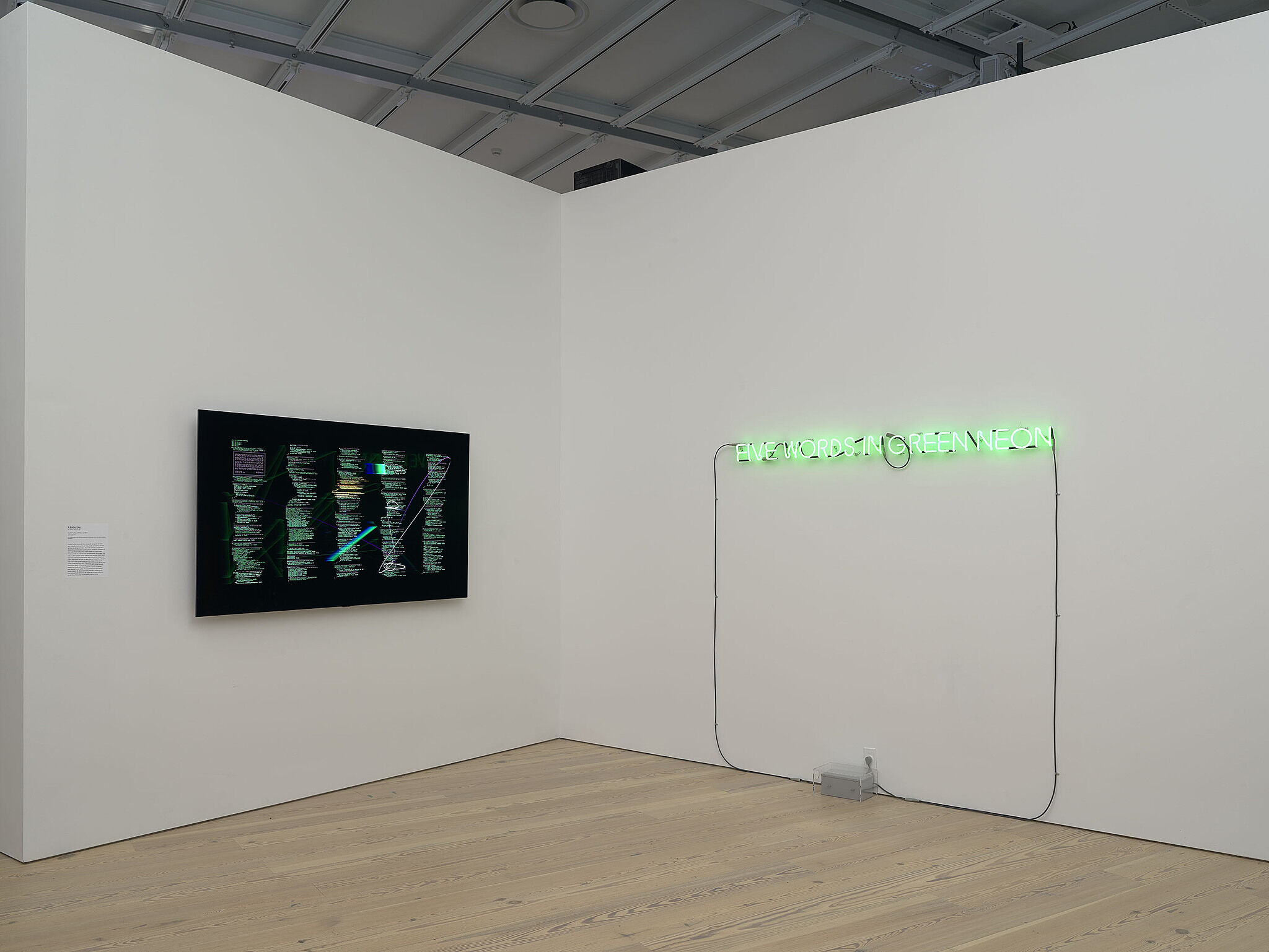

Installation view of Programmed: Rules, Codes, and Choreographies in Art, 1965–2018 (Whitney Museum of American Art, New York, September 28, 2018–April 14, 2019). From left to right: W. Bradford Paley, Code Profiles, 2002 and 2018; Joseph Kosuth, Five Words in Green Neon, 1965. Photograph by Ron Amstutz
-
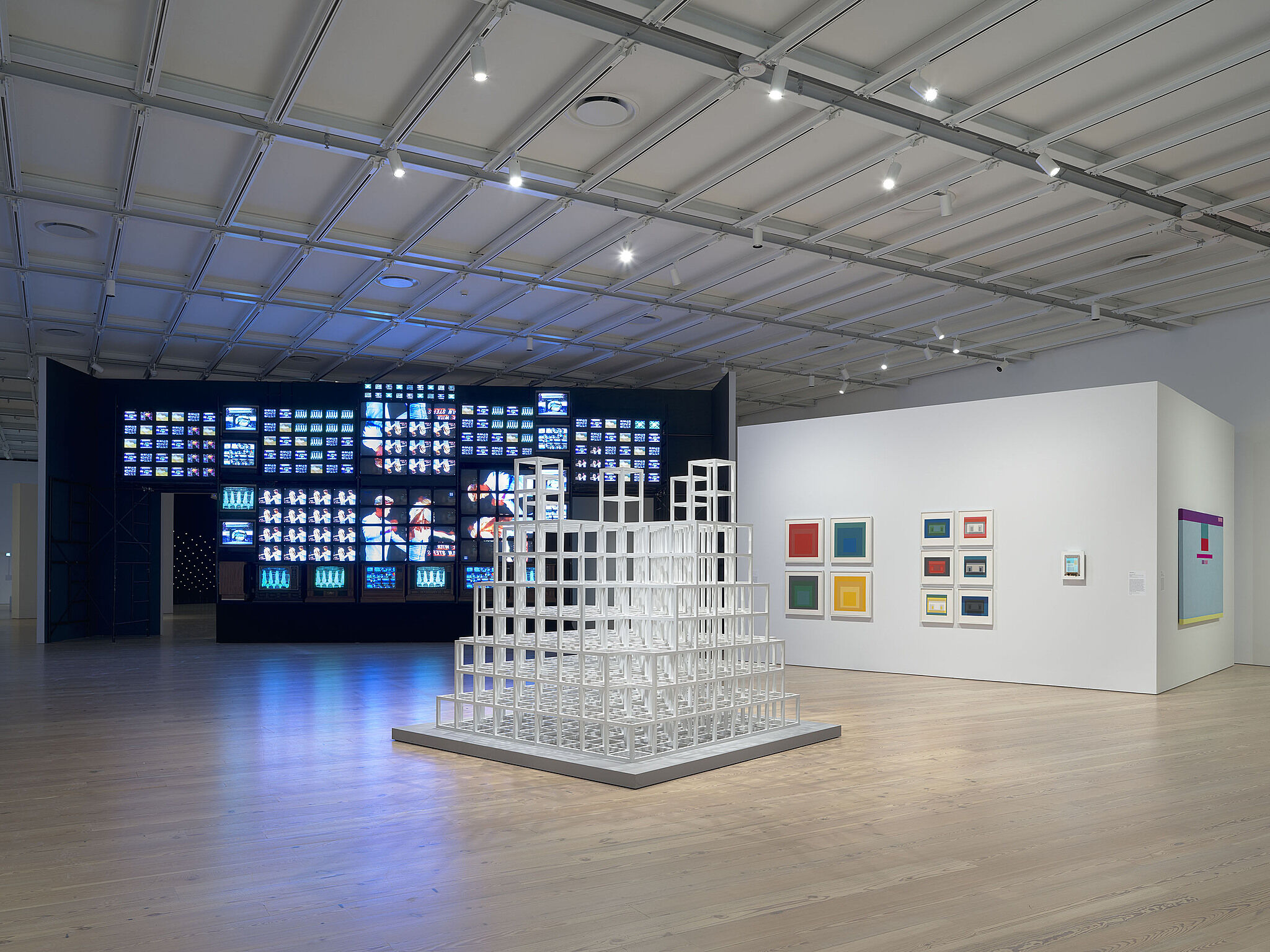

Installation view of Programmed: Rules, Codes, and Choreographies in Art, 1965–2018 (Whitney Museum of American Art, New York, September 28, 2018–April 14, 2019). From left to right: Nam June Paik, Fin de Siècle II, 1989 (partially restored, 2018); Sol LeWitt, Five Towers, 1986; Josef Albers, Homage to the Square V, 1967; Josef Albers, Homage to the Square IX, 1967; Josef Albers, Homage to the Square XII, 1967; Josef Albers, Homage to the Square X, 1967; Josef Albers, Variant V, 1966; Josef Albers, Variant VI, 1966; Josef Albers, Variant X, 1966; Josef Albers, Variant IV, 1966; Josef Albers, Variant II, 1966; Josef Albers, Variant VII, 1966; John F. Simon Jr., Color Panel v1.0, 1999; Rafaël Rozendaal, Abstract Browsing 17 03 05 (Google), 2017. Photograph by Ron Amstutz
-
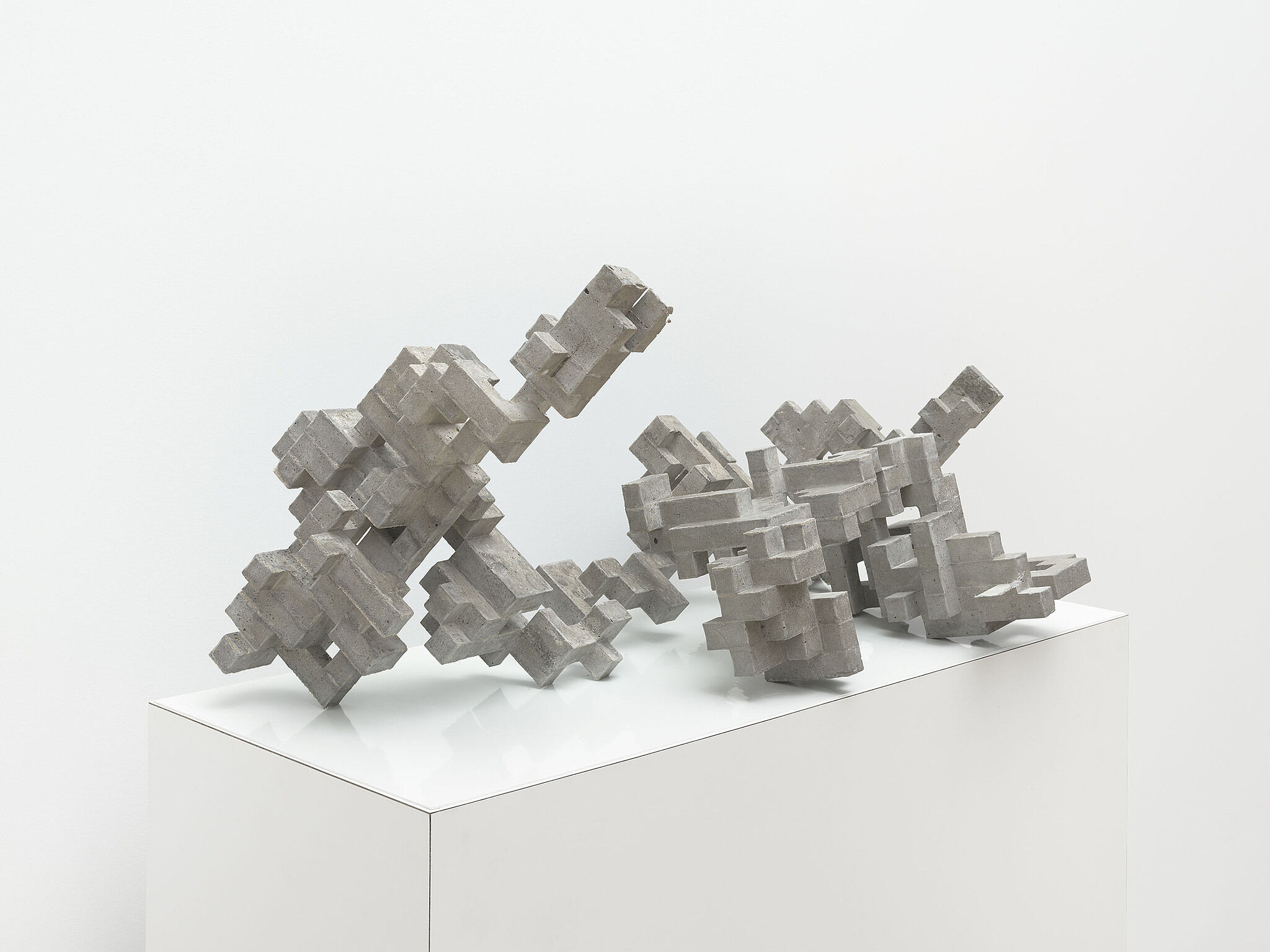

Cheyney Thompson, Broken Volume (10 L), 2013 (installation view, Programmed: Rules, Codes, and Choreographies in Art, 1965-2018, Whitney Museum of American Art, New York, September 28, 2018-April 14, 2019). Concrete, dimensions variable. Whitney Museum of American Art, New York; promised gift of Thea Westreich Wagner and Ethan Wagner P.2014.33. Photograph by Ron Amstutz
-
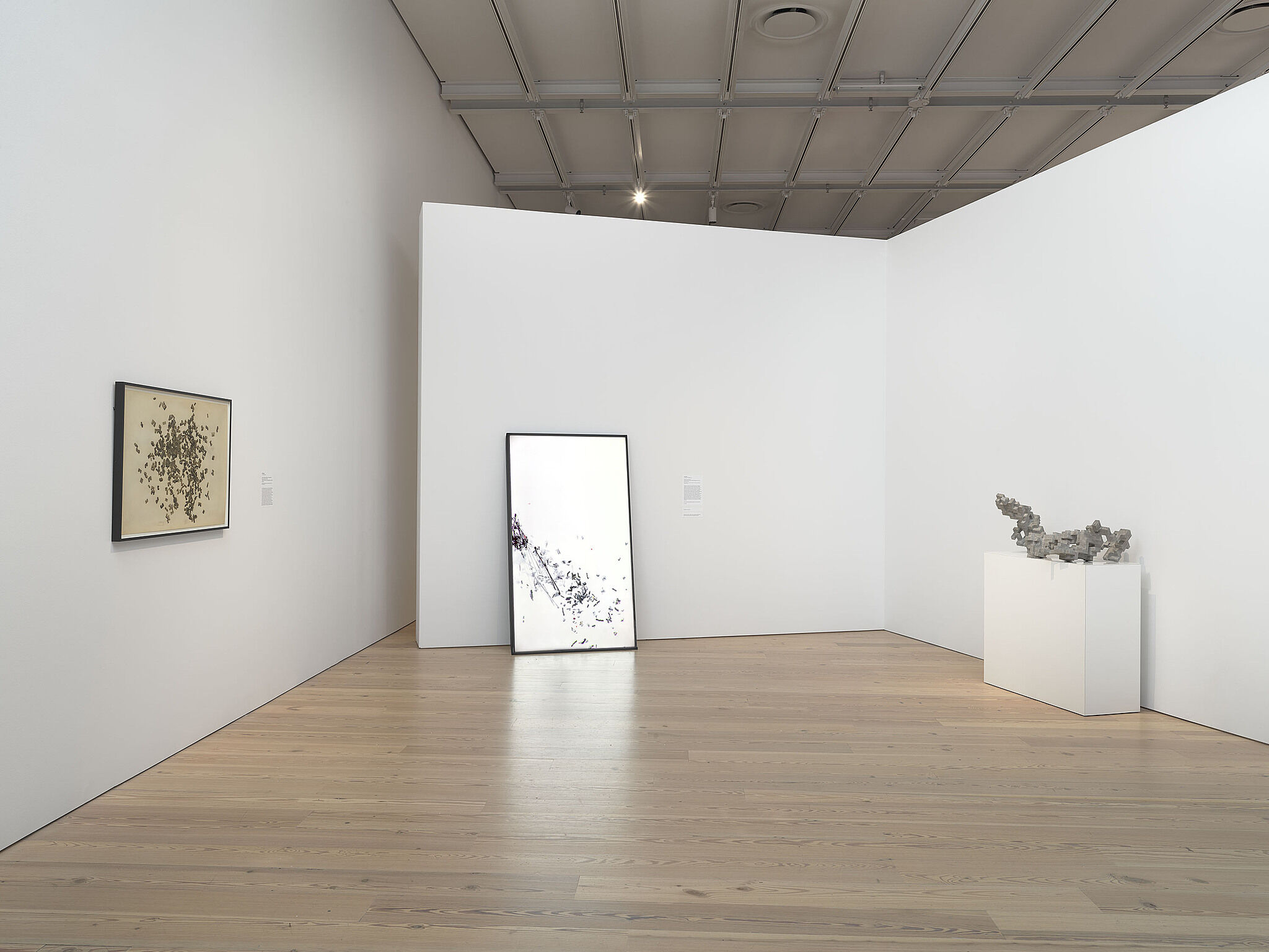

Installation view of Programmed: Rules, Codes, and Choreographies in Art, 1965–2018 (Whitney Museum of American Art, New York, September 28, 2018–April 14, 2019). From left to right: Alex Dodge, Human-Assisted Simulations of a Universal Will to Become (Simulation 9), 2014; Ian Cheng, Baby feat. Ikaria, 2013; Cheyney Thompson, Broken Volume (10 L), 2013. Photograph by Ron Amstutz
-
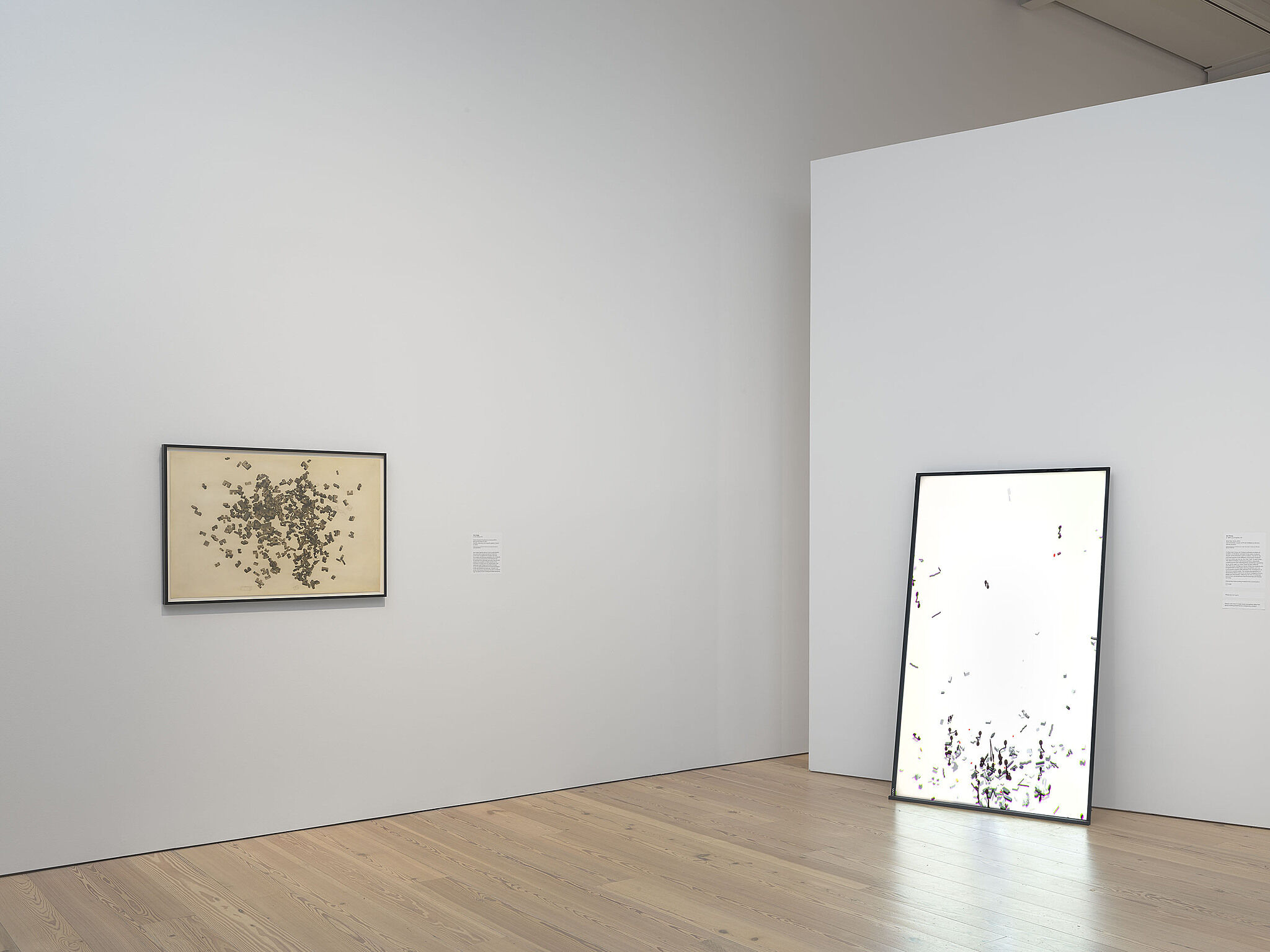

Installation view of Programmed: Rules, Codes, and Choreographies in Art, 1965–2018 (Whitney Museum of American Art, New York, September 28, 2018–April 14, 2019). From left to right: Alex Dodge, Human-Assisted Simulations of a Universal Will to Become (Simulation 9), 2014; Ian Cheng, Baby feat. Ikaria, 2013. Photograph by Ron Amstutz
-
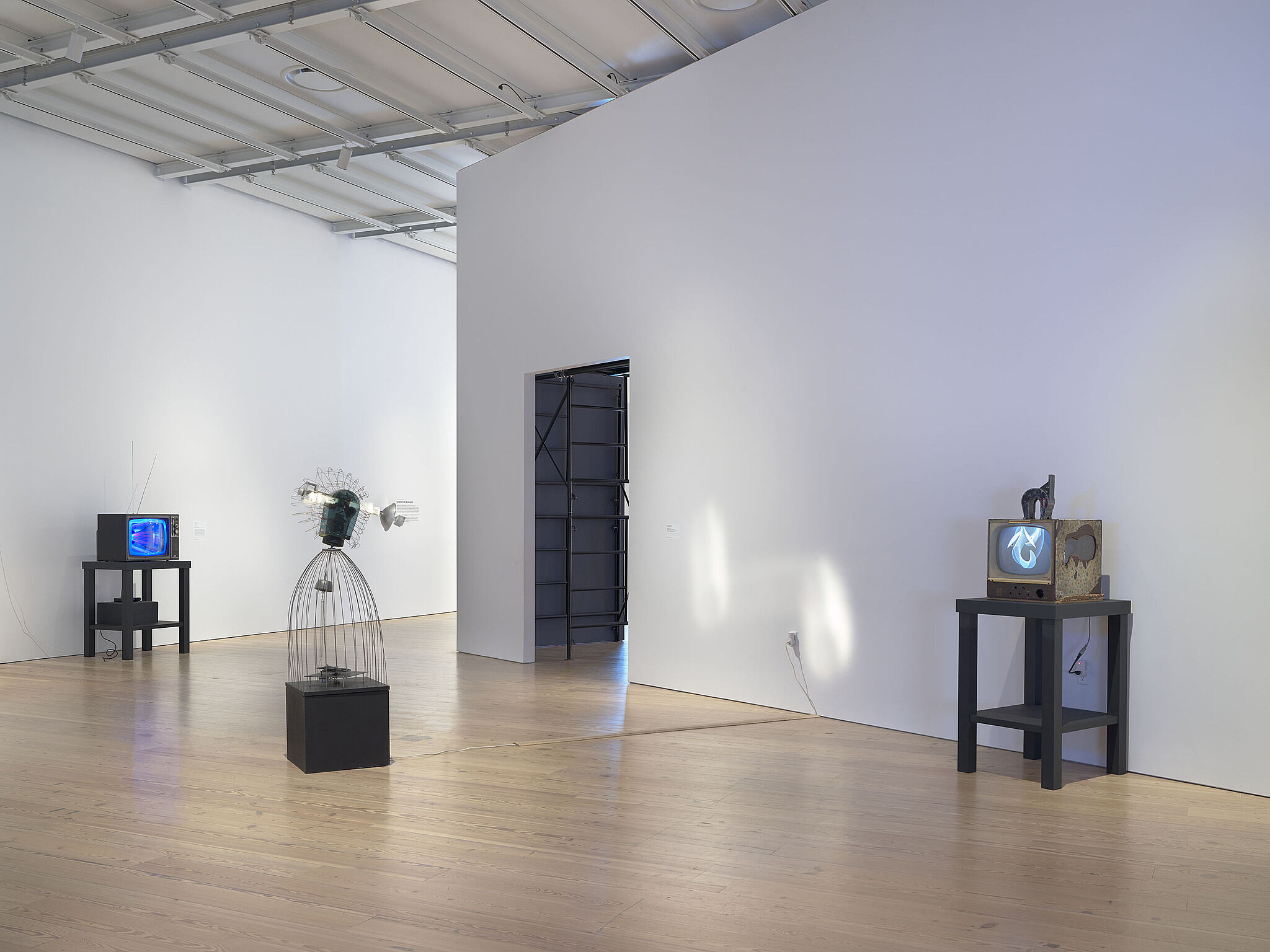

Installation view of Programmed: Rules, Codes, and Choreographies in Art, 1965–2018 (Whitney Museum of American Art, New York, September 28, 2018–April 14, 2019). From left to right: Earl Reiback, Thrust, 1969; James L. Seawright, Searcher, 1966; Nam June Paik, Magnet TV, 1965. Photograph by Ron Amstutz
-
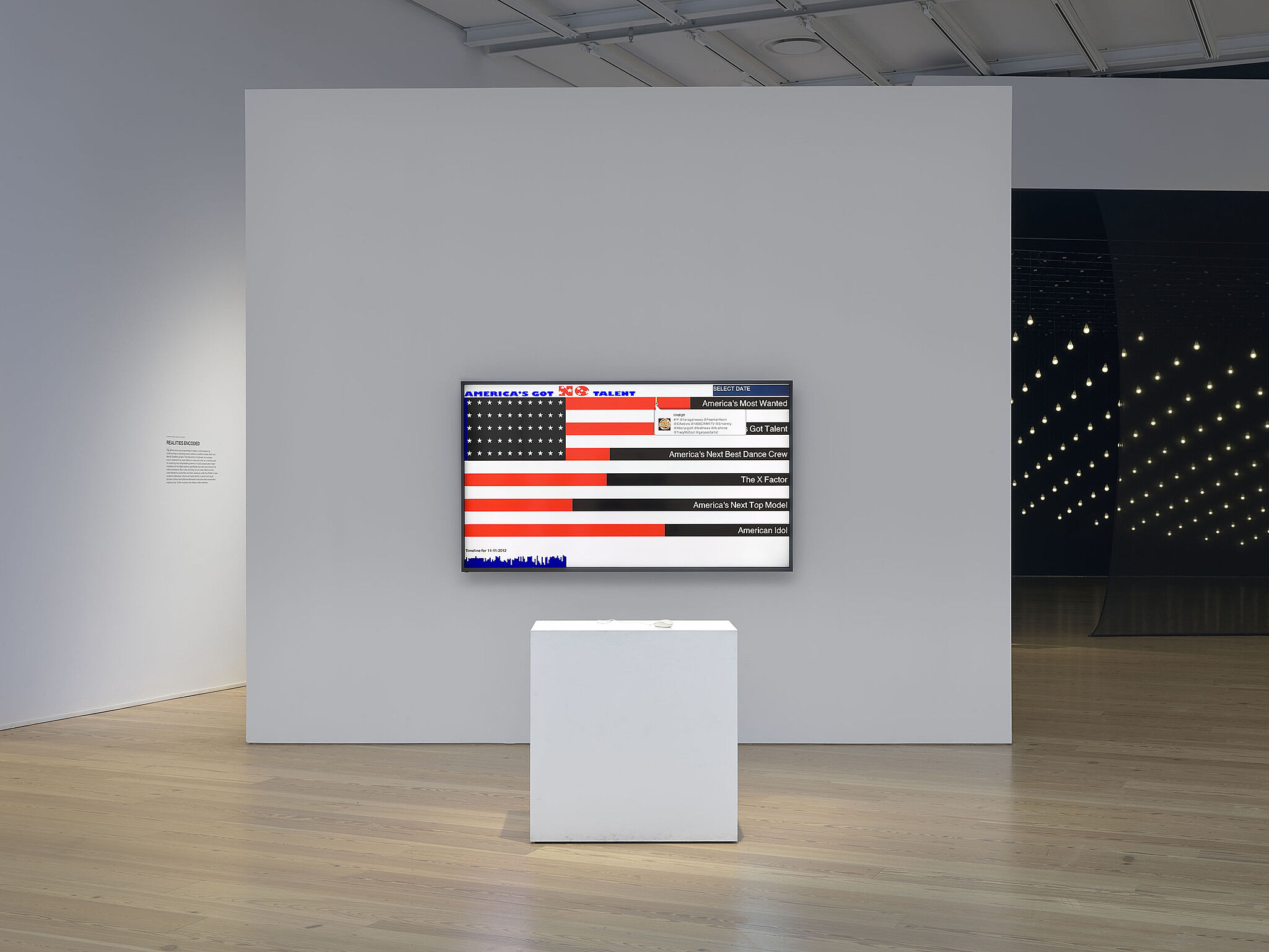

Installation view of Programmed: Rules, Codes, and Choreographies in Art, 1965–2018 (Whitney Museum of American Art, New York, September 28, 2018–April 14, 2019). From left to right: Jonah Brucker-Cohen and Katherine Moriwaki, America’s Got No Talent, 2012 and 2018; Jim Campbell, Tilted Plane, 2011. Photograph by Ron Amstutz
-
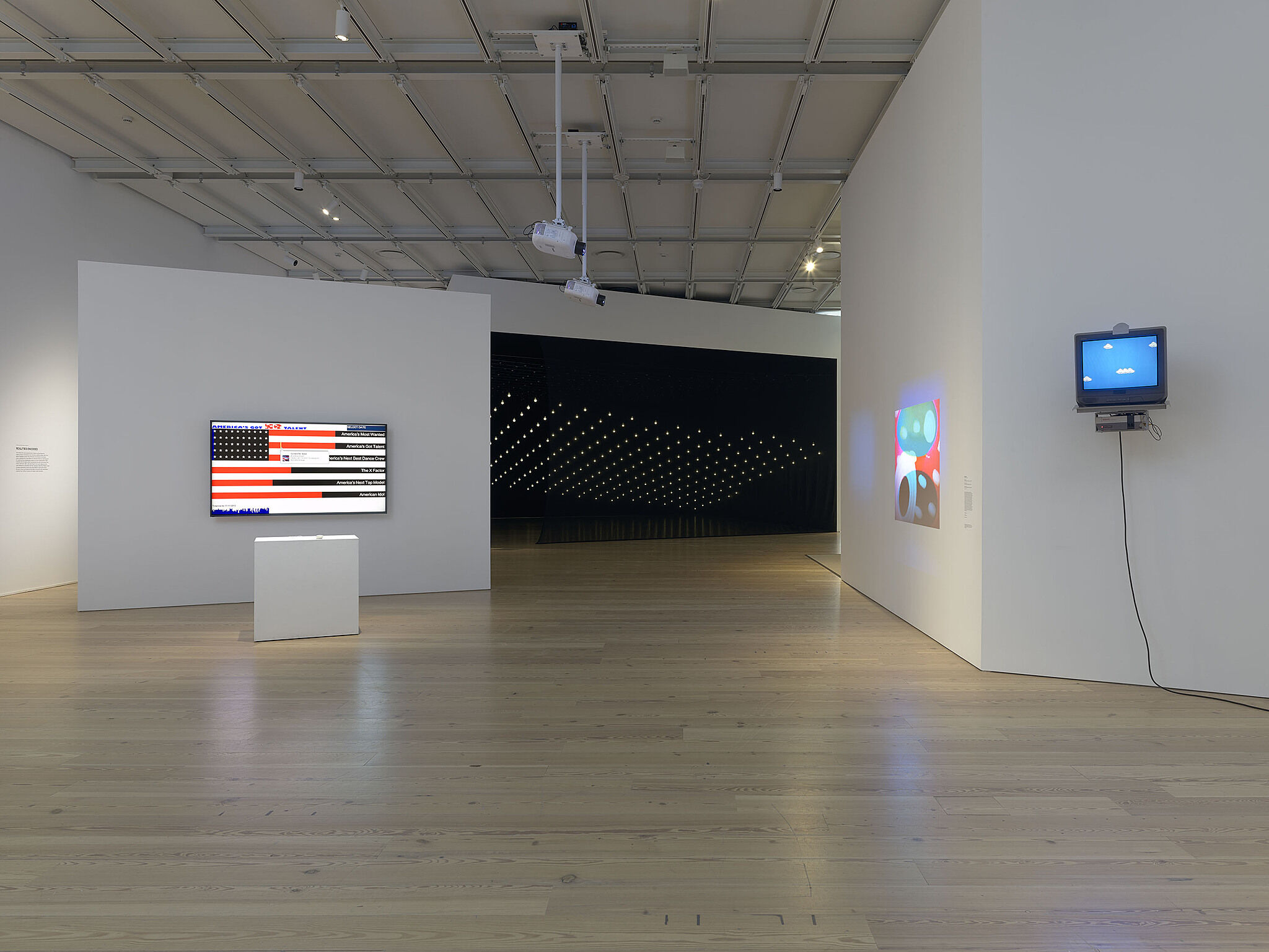

Installation view of Programmed: Rules, Codes, and Choreographies in Art, 1965–2018 (Whitney Museum of American Art, New York, September 28, 2018–April 14, 2019). From left to right: Jonah Brucker-Cohen and Katherine Moriwaki, America’s Got No Talent, 2012 and 2018; Jim Campbell, Tilted Plane, 2011; Lillian Schwartz, Enigma, 1972; Lillian Schwartz, Newtonian I, 1978; Lillian Schwartz, Newtonian II, 1978; Cory Arcangel, Super Mario Clouds, 2002. Photograph by Ron Amstutz
-
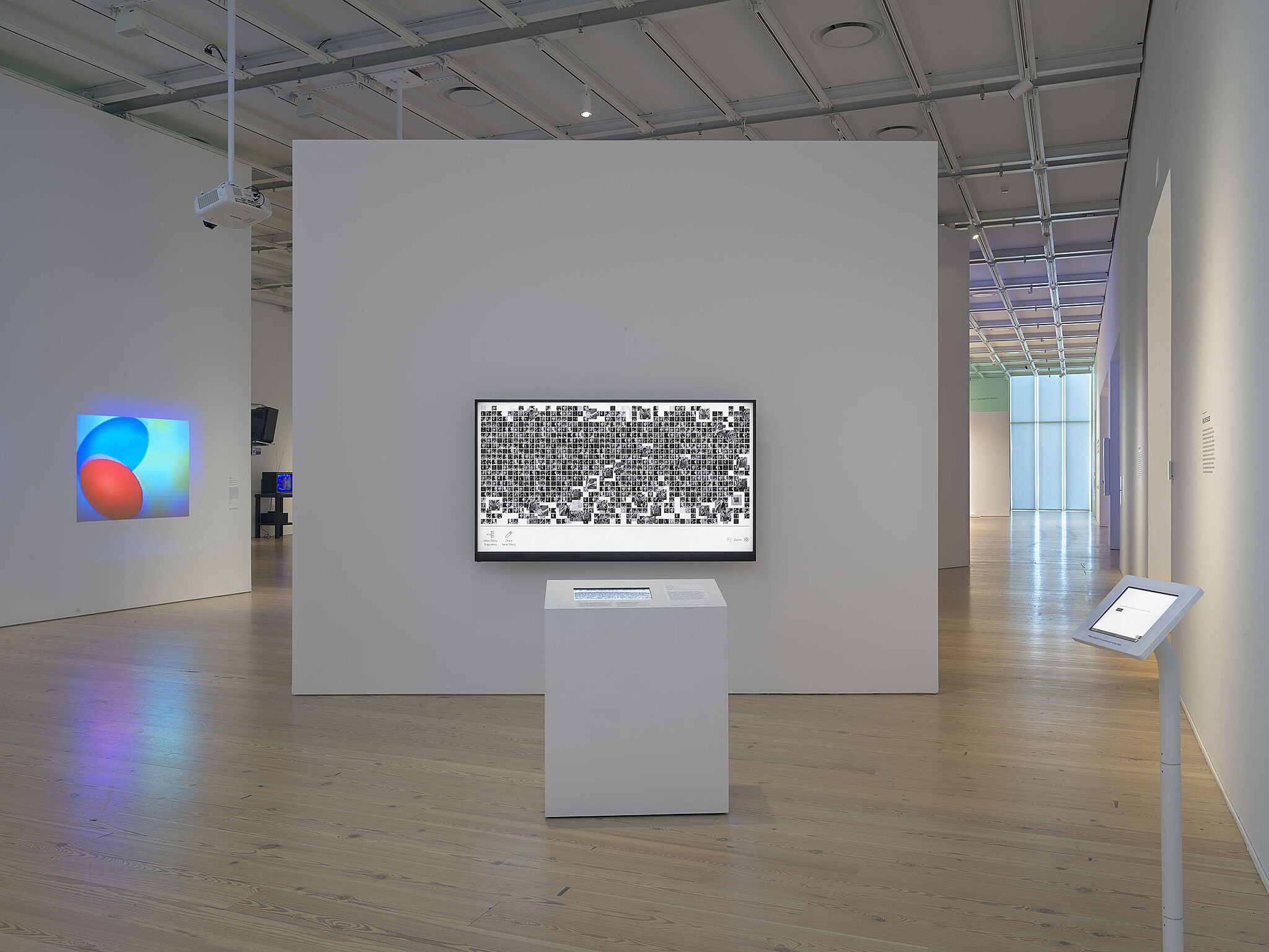

Installation view of Programmed: Rules, Codes, and Choreographies in Art, 1965–2018 (Whitney Museum of American Art, New York, September 28, 2018–April 14, 2019). From left to right: Lillian Schwartz, Enigma, 1972; Lillian Schwartz, Newtonian I, 1978; Lillian Schwartz, Newtonian II, 1978; Cory Arcangel, Super Mario Clouds, 2002; Earl Reiback, Thrust, 1969; Marc Lafia and Fang-Yu Lin, The Battle of Algiers, 2006. Photograph by Ron Amstutz
-
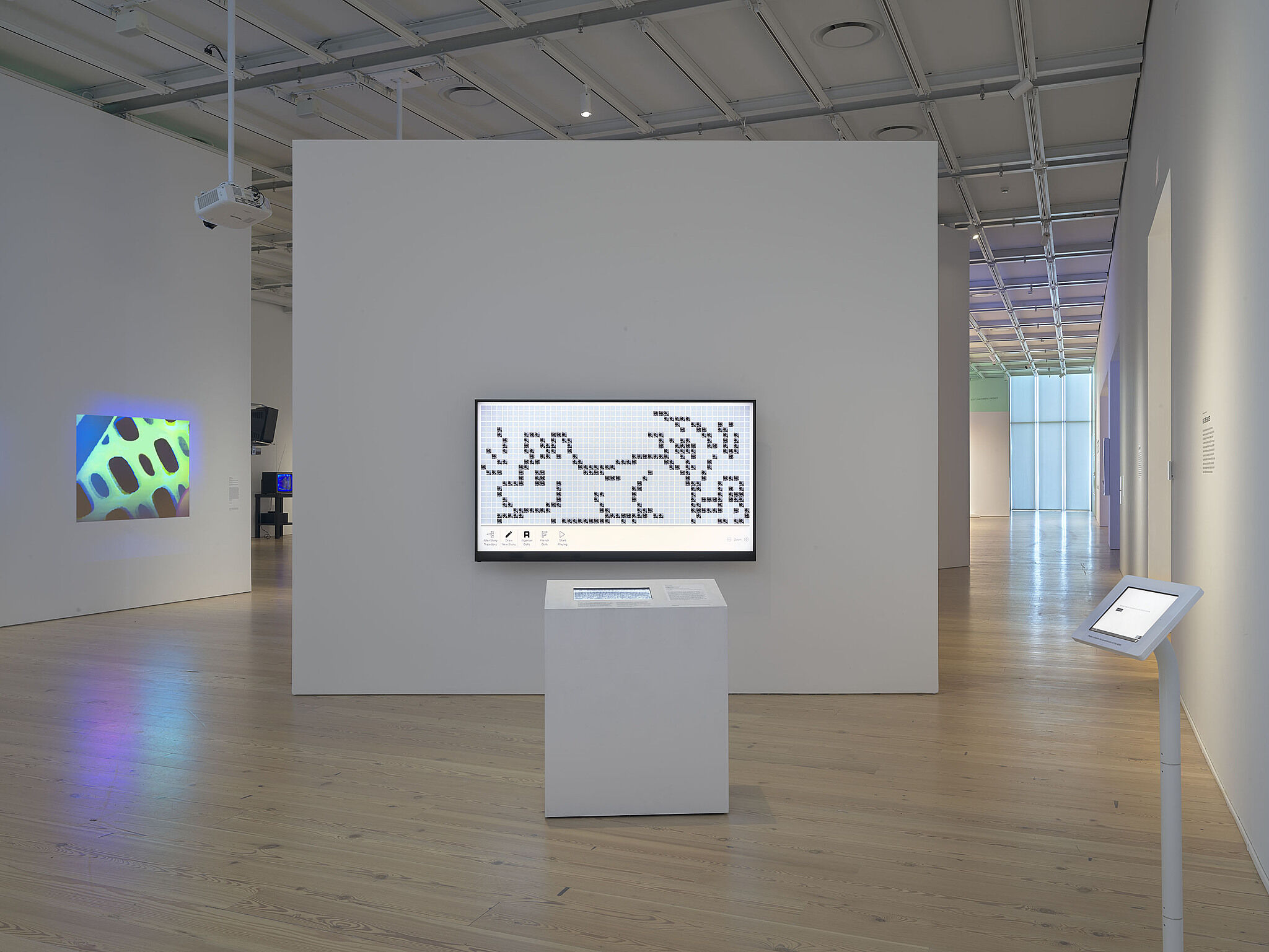

Installation view of Programmed: Rules, Codes, and Choreographies in Art, 1965–2018 (Whitney Museum of American Art, New York, September 28, 2018–April 14, 2019). From left to right: Lillian Schwartz, Enigma, 1972; Lillian Schwartz, Newtonian I, 1978; Lillian Schwartz, Newtonian II, 1978; Cory Arcangel, Super Mario Clouds, 2002; Earl Reiback, Thrust, 1969; Marc Lafia and Fang-Yu Lin, The Battle of Algiers, 2006. Photograph by Ron Amstutz
-
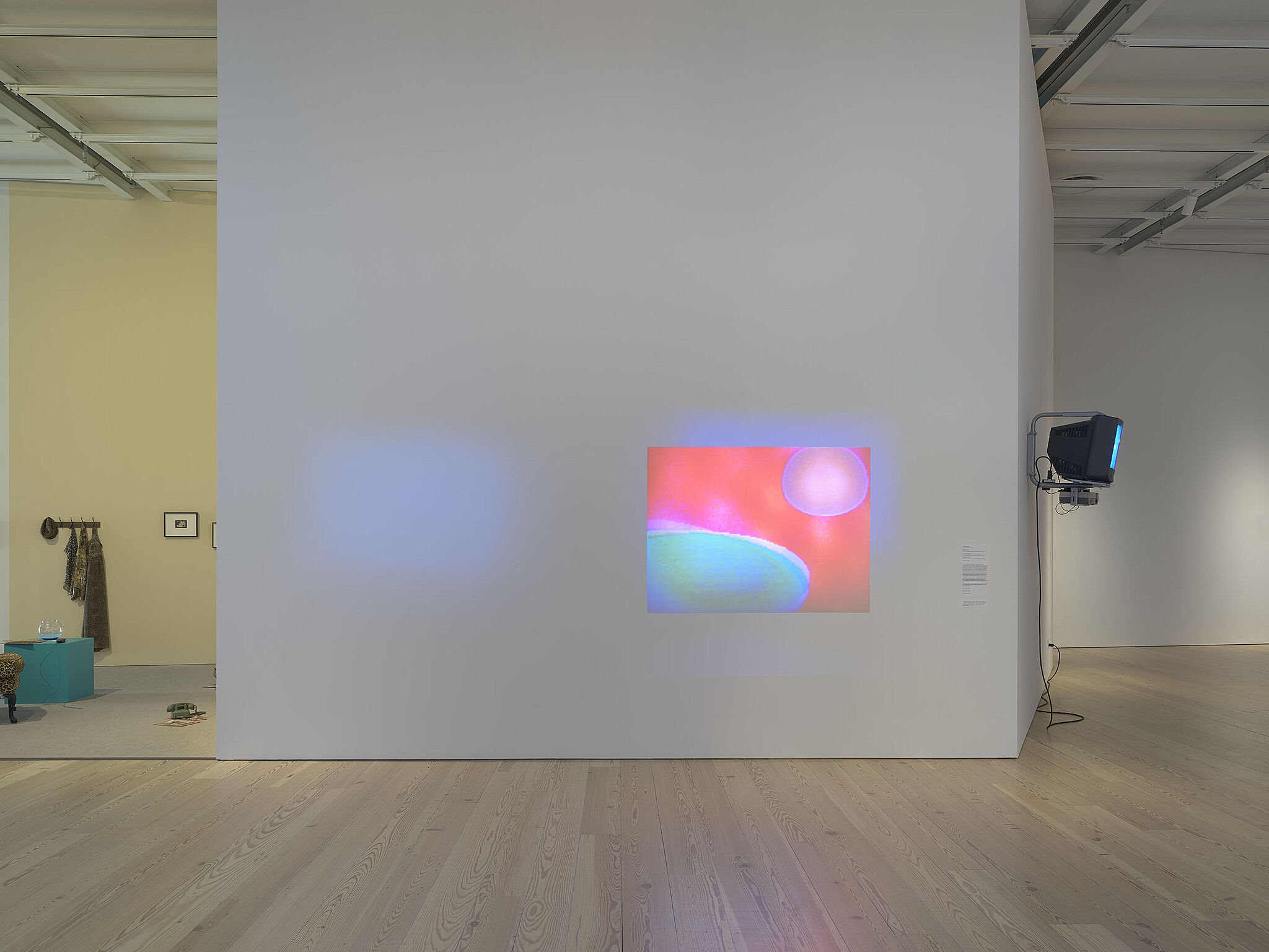

Installation view of Programmed: Rules, Codes, and Choreographies in Art, 1965–2018 (Whitney Museum of American Art, New York, September 28, 2018–April 14, 2019). From left to right: Lynn Hershman Leeson, Lorna, 1979–84; Lillian Schwartz, Enigma, 1972; Lillian Schwartz, Newtonian I, 1978; Lillian Schwartz, Newtonian II, 1978; Cory Arcangel, Super Mario Clouds, 2002. Photograph by Ron Amstutz
-
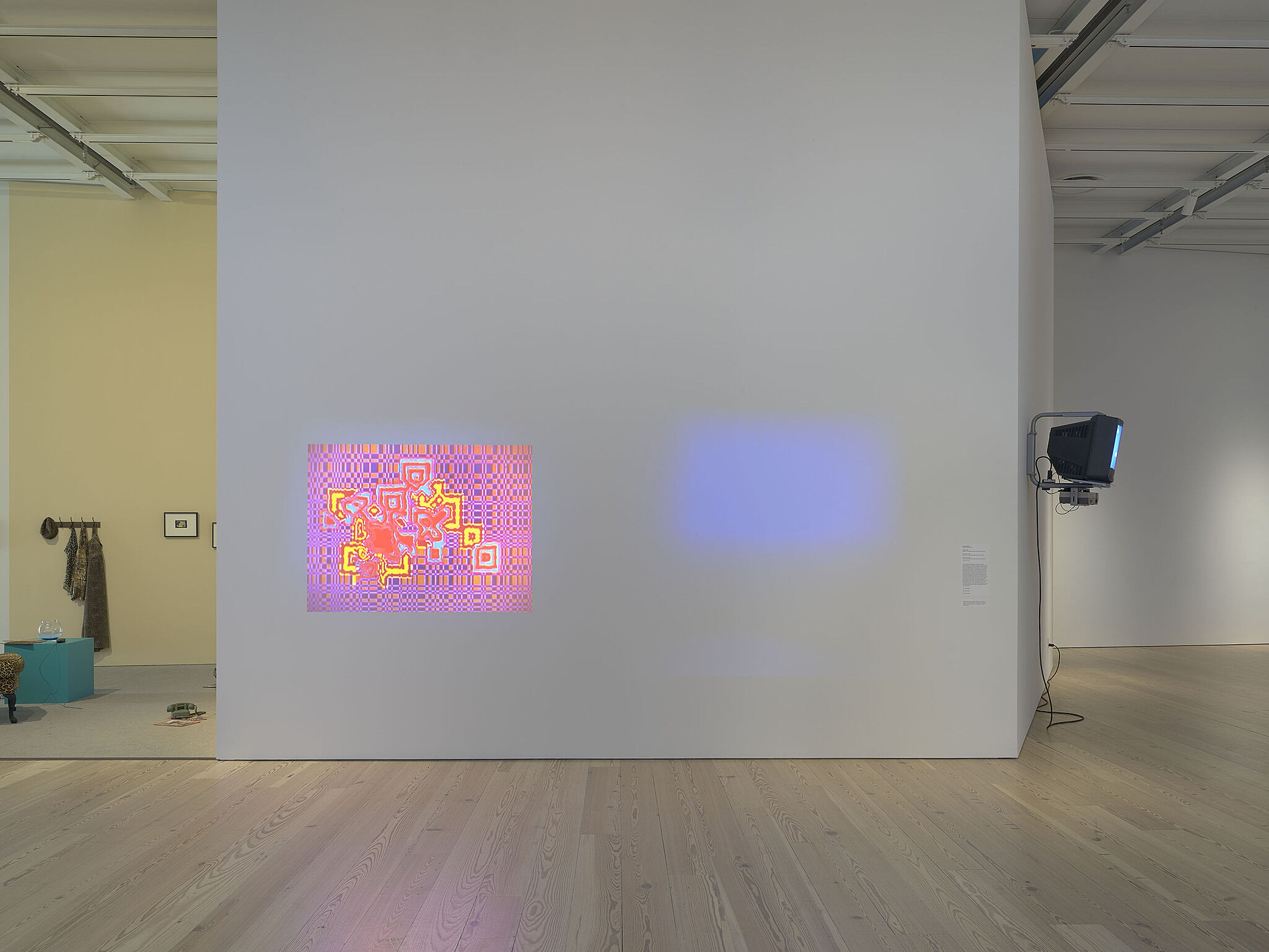

Installation view of Programmed: Rules, Codes, and Choreographies in Art, 1965–2018 (Whitney Museum of American Art, New York, September 28, 2018–April 14, 2019). From left to right: Lynn Hershman Leeson, Lorna, 1979–84; Lillian Schwartz, Enigma, 1972; Lillian Schwartz, Newtonian I, 1978; Lillian Schwartz, Newtonian II, 1978; Cory Arcangel, Super Mario Clouds, 2002. Photograph by Ron Amstutz
-
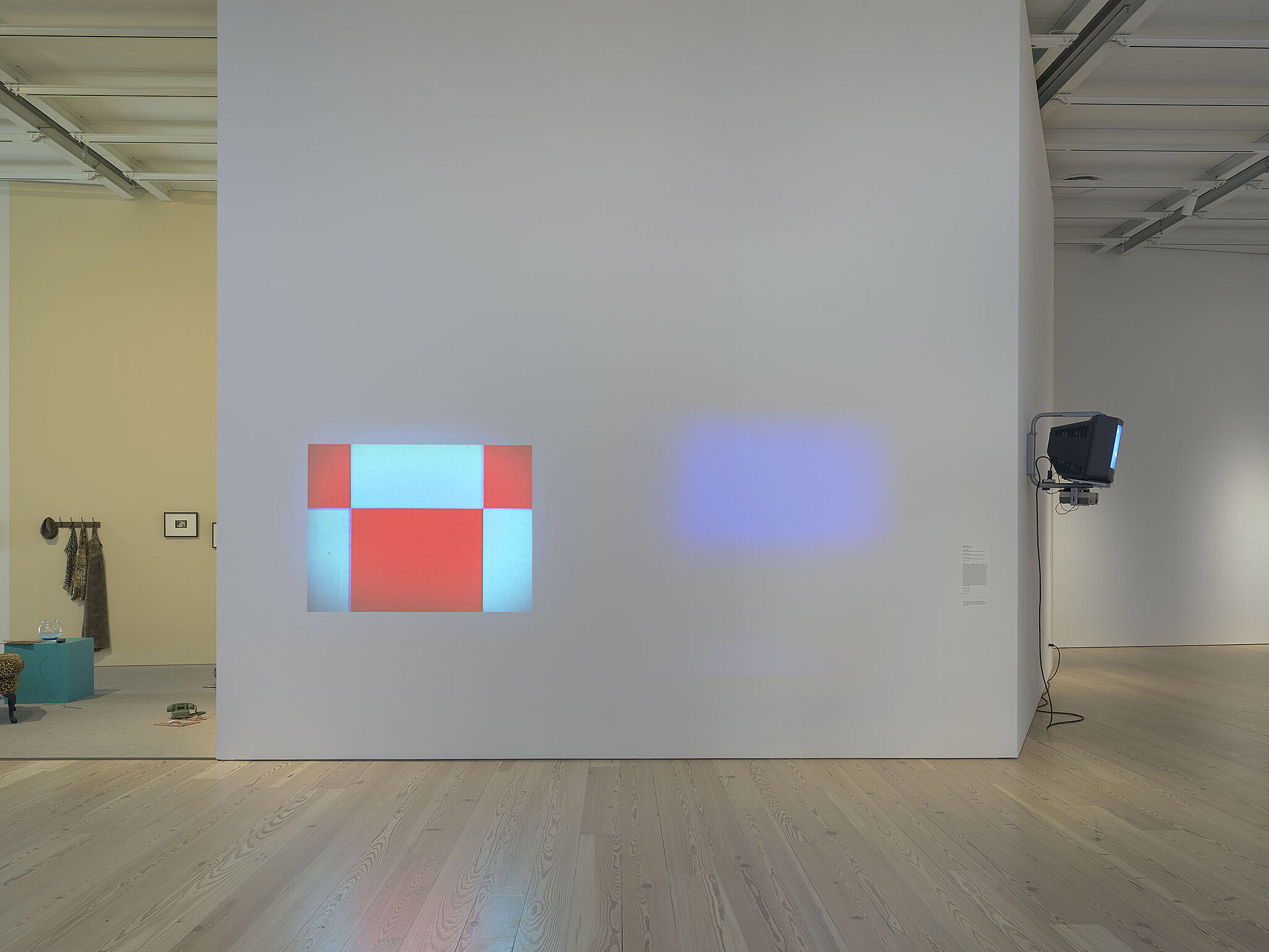

Installation view of Programmed: Rules, Codes, and Choreographies in Art, 1965–2018 (Whitney Museum of American Art, New York, September 28, 2018–April 14, 2019). From left to right: Lynn Hershman Leeson, Lorna, 1979–84; Lillian Schwartz, Enigma, 1972; Lillian Schwartz, Newtonian I, 1978; Lillian Schwartz, Newtonian II, 1978; Cory Arcangel, Super Mario Clouds, 2002. Photograph by Ron Amstutz
-
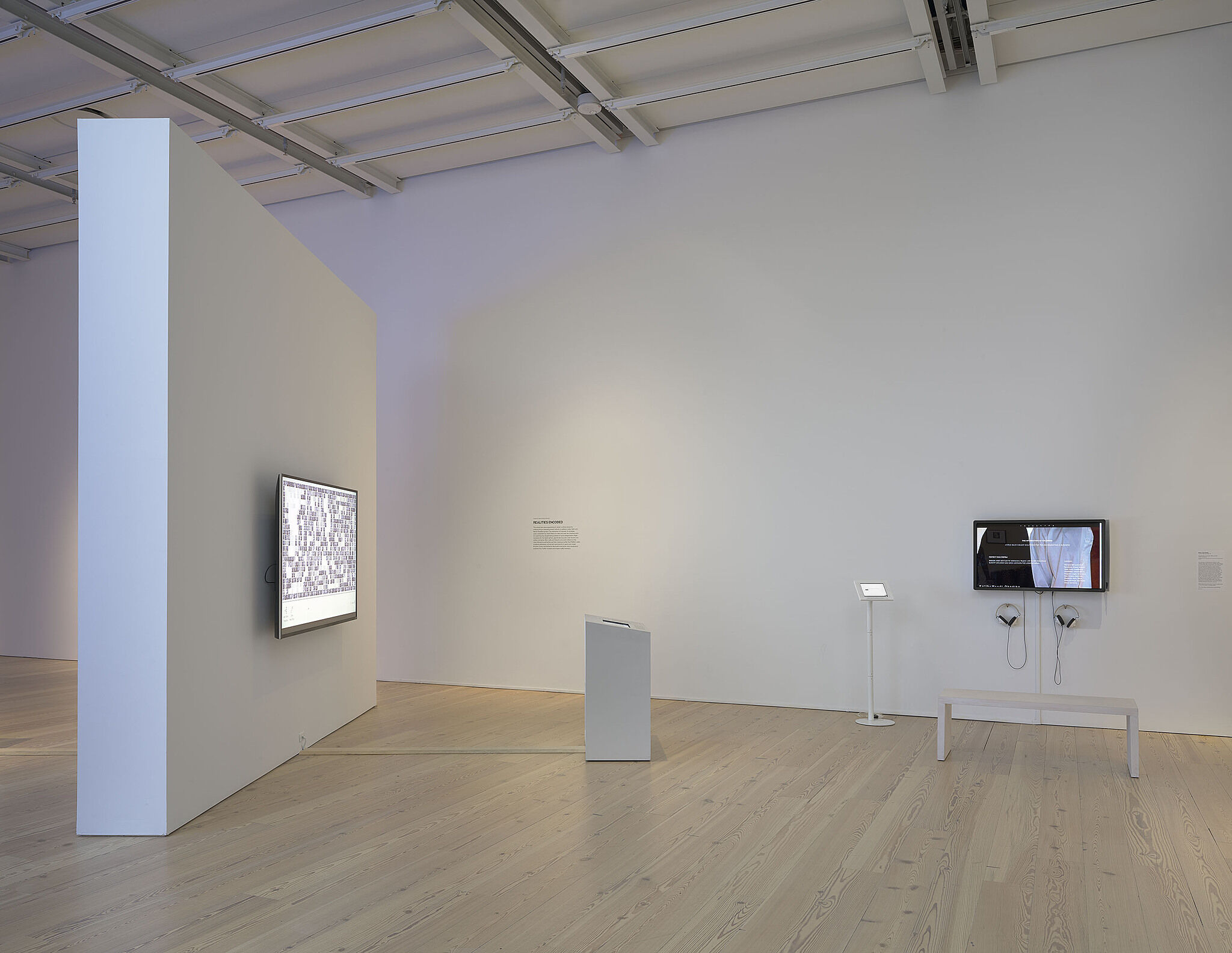

Installation view of Programmed: Rules, Codes, and Choreographies in Art, 1965–2018 (Whitney Museum of American Art, New York, September 28, 2018–April 14, 2019). From left to right: Marc Lafia and Fang-Yu Lin, The Battle of Algiers, 2006; Mendi + Keith Obadike, The Interaction of Coloreds, 2002 and 2018. Photograph by Ron Amstutz
-
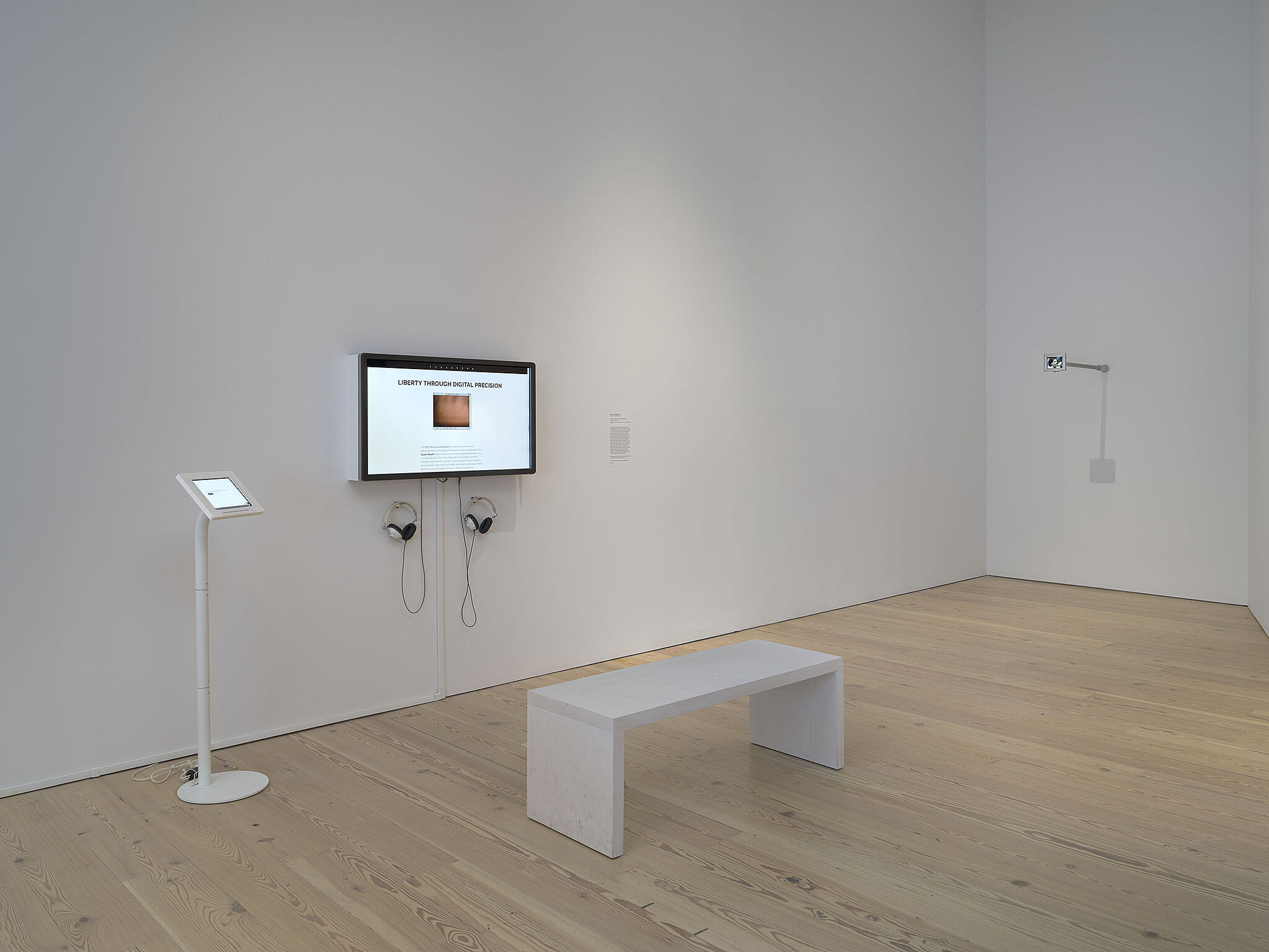

Installation view of Programmed: Rules, Codes, and Choreographies in Art, 1965–2018 (Whitney Museum of American Art, New York, September 28, 2018–April 14, 2019). From left to right: Mendi + Keith Obadike, The Interaction of Coloreds, 2002 and 2018; Paul Pfeiffer, Goethe’s Message to the New Negroes, 2001. Photograph by Ron Amstutz
-
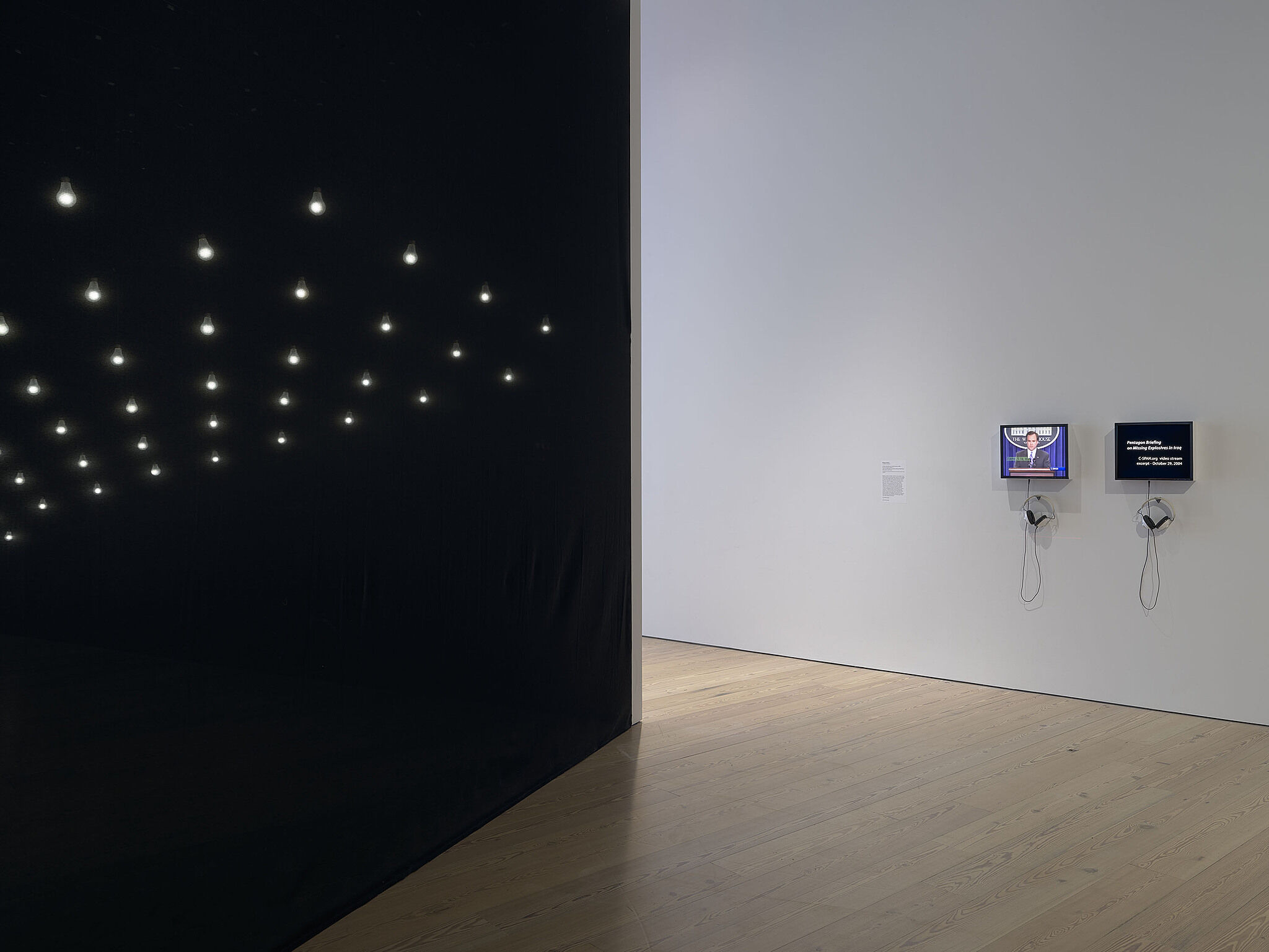

Installation view of Programmed: Rules, Codes, and Choreographies in Art, 1965–2018 (Whitney Museum of American Art, New York, September 28, 2018–April 14, 2019). From left to right: Jim Campbell, Tilted Plane, 2011; Barbara Lattanzi, C-Span Alphaville and C-SPAN Karaoke, 2005. Photograph by Ron Amstutz
-
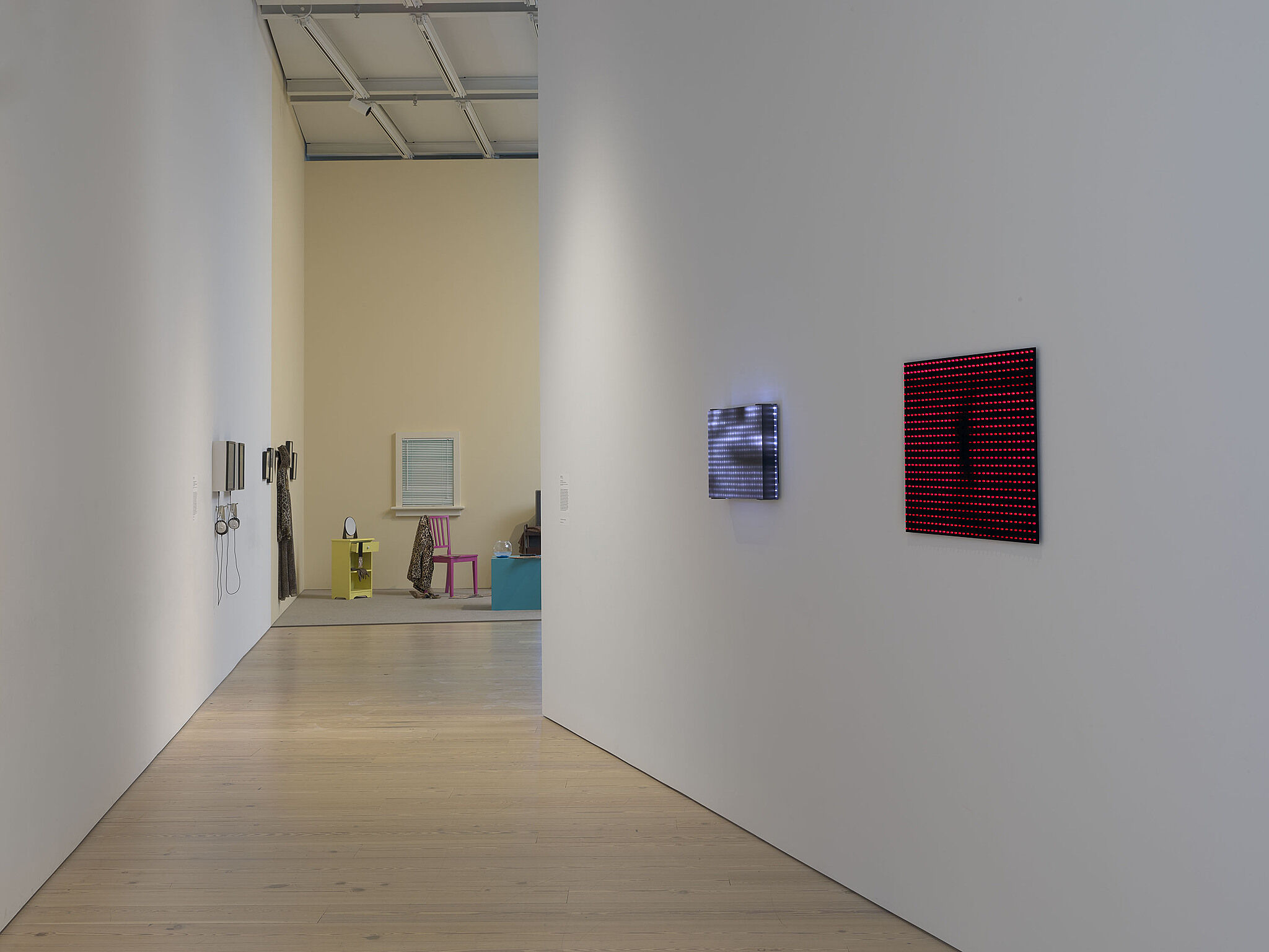

Installation view of Programmed: Rules, Codes, and Choreographies in Art, 1965–2018 (Whitney Museum of American Art, New York, September 28, 2018–April 14, 2019). From left to right: Barbara Lattanzi, C-Span Alphaville and C-SPAN Karaoke, 2005; Lynn Hershman Leeson, Lorna, 1979–84; Jim Campbell, Reconstruction 7, 2006; Jim Campbell, Ambiguous Icon #5 (Running, Falling), 2000. Photograph by Ron Amstutz
-
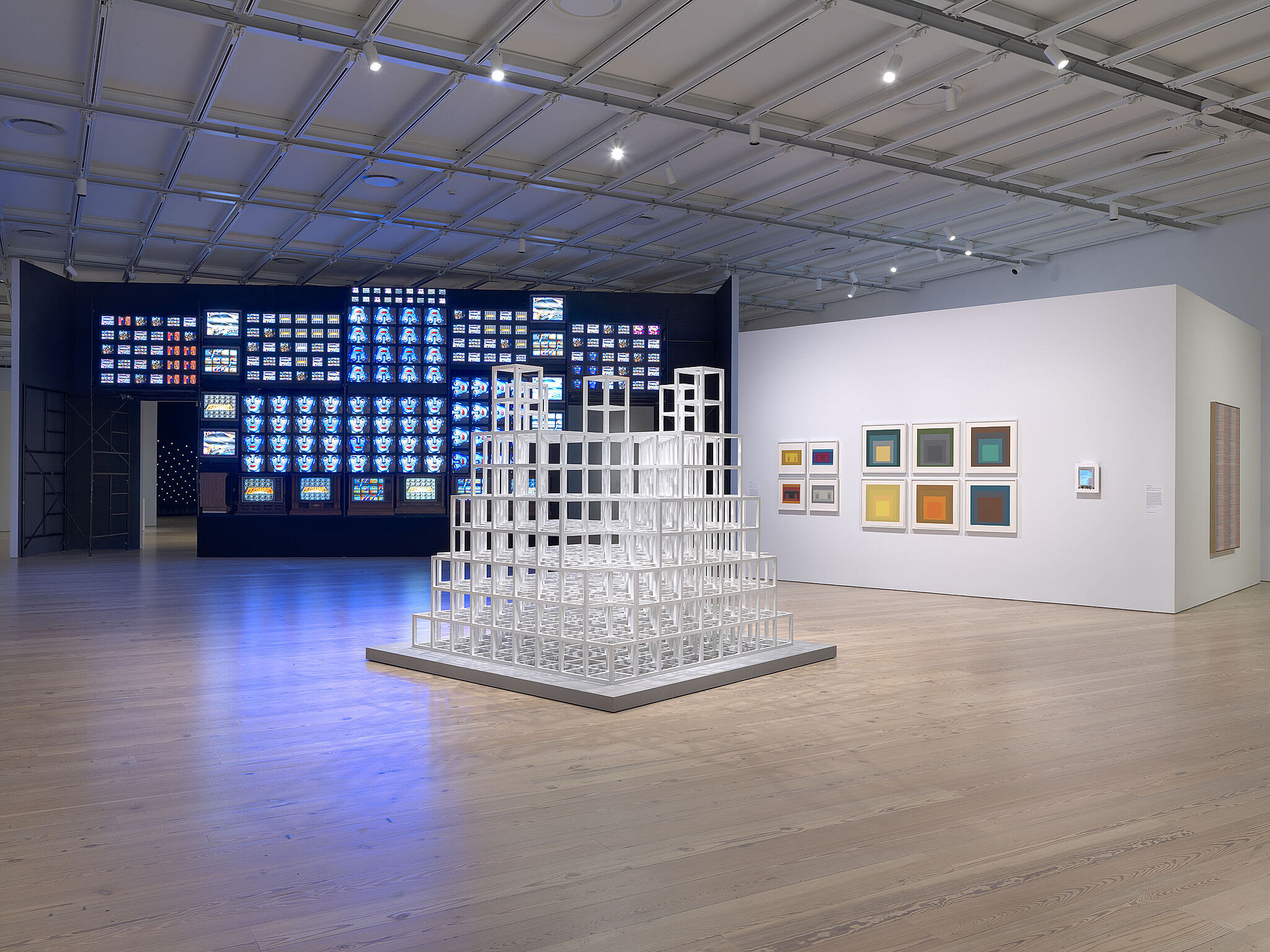

Installation view of Programmed: Rules, Codes, and Choreographies in Art, 1965–2018 (Whitney Museum of American Art, New York, September 28, 2018–April 14, 2019). From left to right, top to bottom: Nam June Paik, Fin de Siècle II, 1989; Sol Lewitt, Five Towers, 1986; Josef Albers, Variant I, 1966; Josef Albers, Variant IX, 1966; Josef Albers, Variant VIII, 1966; Josef Albers, Variant III, 1966; Josef Albers, Homage to the Square VI, 1967; Josef Albers, Homage to the Square III, 1967; Josef Albers, Homage to the Square I, 1967; Josef Albers, Homage to the Square II, 1967; Josef Albers, Homage to the Square XI, 1967; Josef Albers, Homage to the Square VII, 1967; John F. Simon Jr., Color Panel v1.0, 1999; Mika Tajima, Negative Entropy (Digital Ocean, NYC2, 4U, NAS, Pink, Quad), 2018. Photograph by Ron Amstutz
-
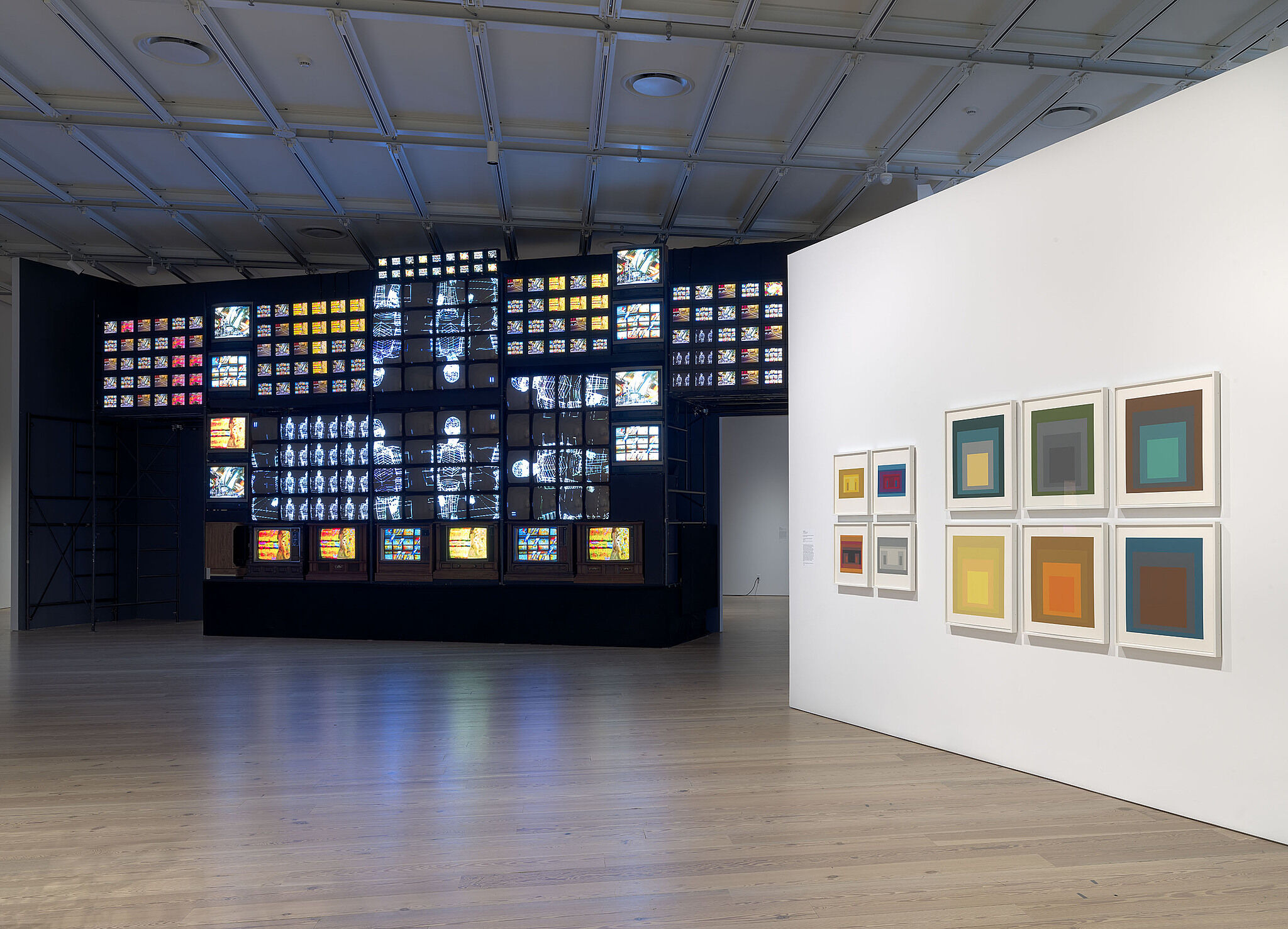

Installation view of Programmed: Rules, Codes, and Choreographies in Art, 1965–2018 (Whitney Museum of American Art, New York, September 28, 2018–April 14, 2019). From left to right, top to bottom: Nam June Paik, Fin de Siècle II, 1989; Josef Albers, Variant I, 1966; Josef Albers, Variant IX, 1966; Josef Albers, Variant VIII, 1966; Josef Albers, Variant III, 1966; Josef Albers, Homage to the Square VI, 1967; Josef Albers, Homage to the Square III, 1967; Josef Albers, Homage to the Square I, 1967; Josef Albers, Homage to the Square II, 1967; Josef Albers, Homage to the Square XI, 1967; Josef Albers, Homage to the Square VII, 1967. Photograph by Ron Amstutz
-


Installation view of Programmed: Rules, Codes, and Choreographies in Art, 1965–2018 (Whitney Museum of American Art, New York, September 28, 2018–April 14, 2019). From left to right, top to bottom: Nam June Paik, Fin de Siècle II, 1989; Josef Albers, Variant I, 1966; Josef Albers, Variant IX, 1966; Josef Albers, Variant VIII, 1966; Josef Albers, Variant III, 1966; Josef Albers, Homage to the Square VI, 1967; Josef Albers, Homage to the Square III, 1967; Josef Albers, Homage to the Square I, 1967; Josef Albers, Homage to the Square II, 1967; Josef Albers, Homage to the Square XI, 1967; Josef Albers, Homage to the Square VII, 1967; John F. Simon Jr., Color Panel v1.0, 1999; Mika Tajima, Negative Entropy (Digital Ocean, NYC2, 4U, NAS, Pink, Quad), 2018. Photograph by Ron Amstutz
-
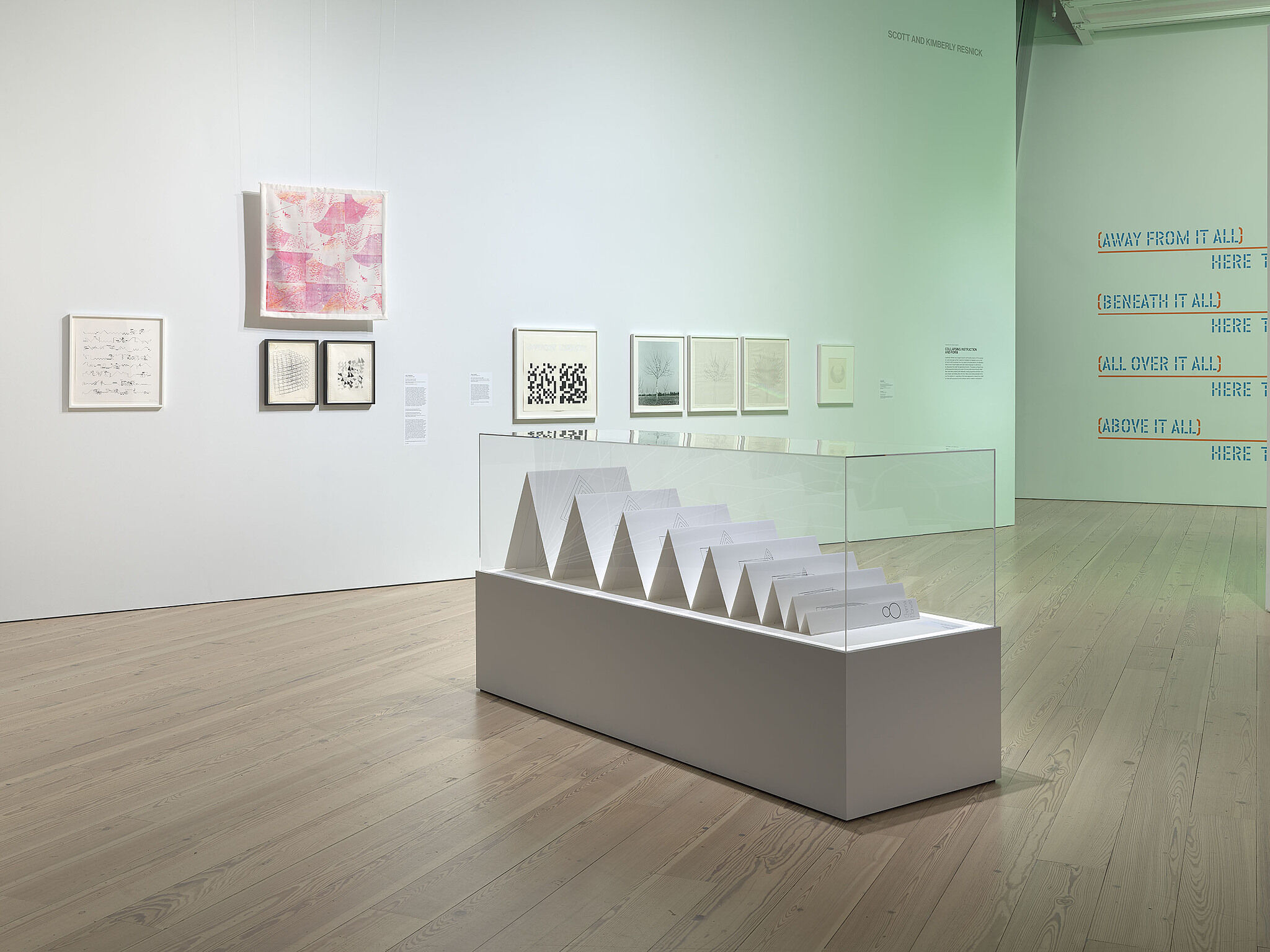

Installation view of Programmed: Rules, Codes, and Choreographies in Art, 1965–2018 (Whitney Museum of American Art, New York, September 28, 2018–April 14, 2019). From left to right, top to bottom: Manfred Mohr, Band Structures P-021-U, 1970–83; Joan Truckenbrod, Curvilinear Perspective, 1979; Joan Truckenbrod, Coded Algorithmic Drawing (#9), 1975; Joan Truckenbrod, Coded Algorithmic Drawing (#45), 1975; Tauba Auerbach, Binary Uppercase/Lowercase, 2005; Charles Gaines, Walnut Tree Orchard: M1, M2, M3, 1977; Agnes Denes, Pascal’s Triangle II, 1974; Lawrence Weiner, HERE THERE & EVERYWHERE, 1989; In vitrine: Channa Horwitz, Suite 8, 1979. Photograph by Ron Amstutz
-
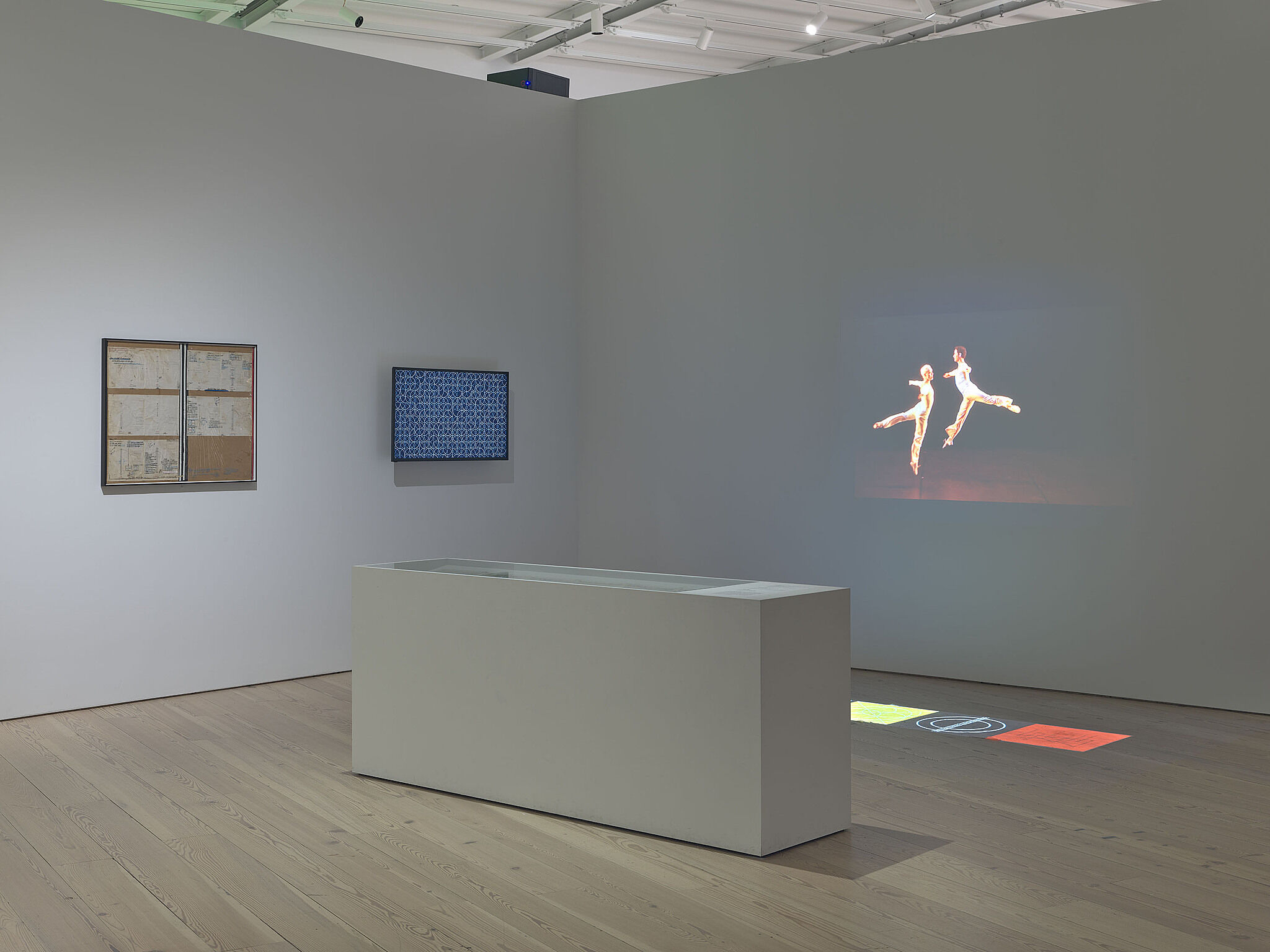

Installation view of Programmed: Rules, Codes, and Choreographies in Art, 1965–2018 (Whitney Museum of American Art, New York, September 28, 2018–April 14, 2019). From left to right: Lucinda Childs and Sol LeWitt, Dance #4, 1979; Casey Reas, {Software} Structures, Sol LeWitt Wall Drawing #358, 2004 and 2016; Lucinda Childs, Philip Glass, and Sol LeWitt, Dance, 1979 and 2014; Projection of: Lucinda Childs, Dance #1-5, 1979; In vitrine: Philip Glass, Score for Dance #1, 1979. Photograph by Ron Amstutz
-
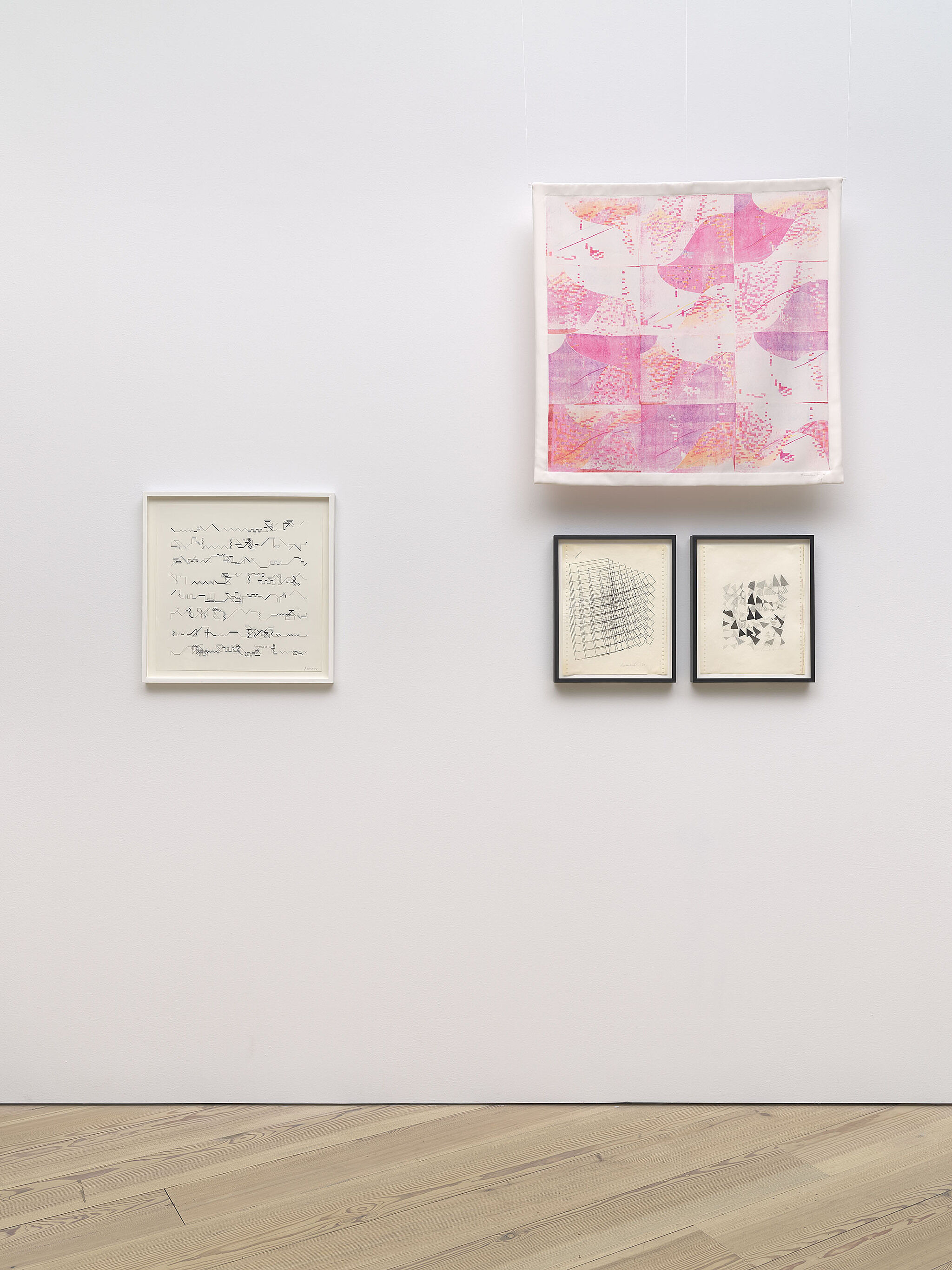

Installation view of Programmed: Rules, Codes, and Choreographies in Art, 1965–2018 (Whitney Museum of American Art, New York, September 28, 2018–April 14, 2019). From left to right, top to bottom: Manfred Mohr, Band Structures P-021-U, 1970–83; Joan Truckenbrod, Curvilinear Perspective, 1979; Joan Truckenbrod, Coded Algorithmic Drawing (#9), 1975; Joan Truckenbrod, Coded Algorithmic Drawing (#45), 1975. Photograph by Ron Amstutz
-
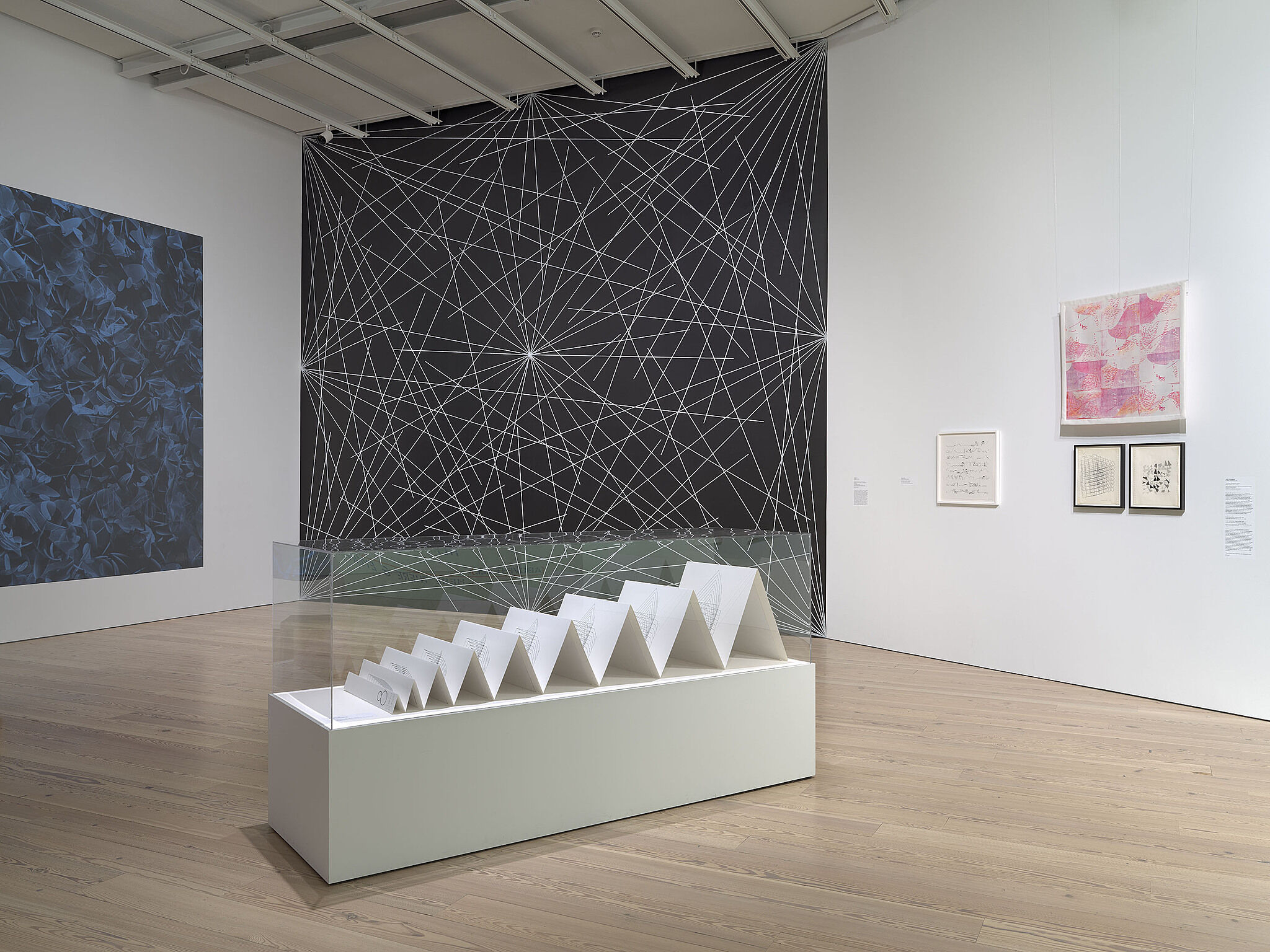

Installation view of Programmed: Rules, Codes, and Choreographies in Art, 1965–2018 (Whitney Museum of American Art, New York, September 28, 2018–April 14, 2019). From left to right, top to bottom: Casey Reas, {Software} Structures #003 B, 2004 and 2016; Sol LeWitt, 4th wall: 24 lines from the center, 12 lines from the midpoint of each of the sides, 12 lines from each corner, 1976; Manfred Mohr, Band Structures P-021-U, 1970–83; Joan Truckenbrod, Curvilinear Perspective, 1979; Joan Truckenbrod, Coded Algorithmic Drawing (#9), 1975; Joan Truckenbrod, Coded Algorithmic Drawing (#45), 1975; In vitrine: Channa Horwitz, Suite 8, 1979. Photograph by Ron Amstutz
-
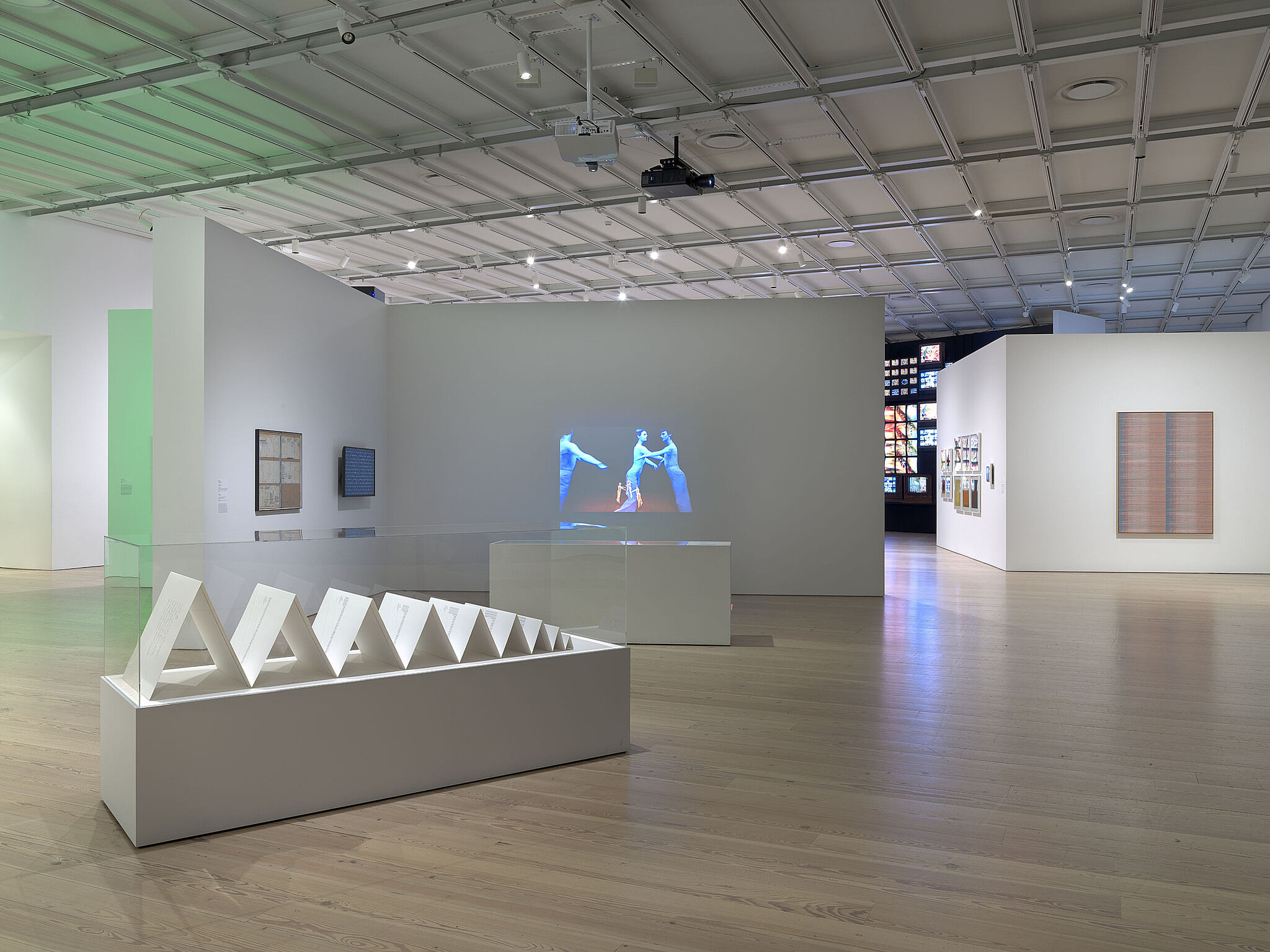

Installation view of Programmed: Rules, Codes, and Choreographies in Art, 1965–2018 (Whitney Museum of American Art, New York, September 28, 2018–April 14, 2019). From left to right: Channa Horwitz, Suite 8, 1979; Lucinda Childs and Sol LeWitt, Dance #4, 1979; Casey Reas, {Software} Structures, Sol LeWitt Wall Drawing #358, 2004 and 2016; Lucinda Childs, Philip Glass, and Sol LeWitt, Dance, 1979 and 2014; June Paik, Fin de Siècle II, 1989; Josef Albers, Variant I, 1966; Josef Albers, Variant IX, 1966; Josef Albers, Variant VIII, 1966; Josef Albers, Variant III, 1966; Josef Albers, Homage to the Square VI, 1967; Josef Albers, Homage to the Square III, 1967; Josef Albers, Homage to the Square I, 1967; Josef Albers, Homage to the Square II, 1967; Josef Albers, Homage to the Square XI, 1967; Josef Albers, Homage to the Square VII, 1967; John F. Simon Jr., Color Panel v1.0, 1999; Mika Tajima, Negative Entropy (Digital Ocean, NYC2, 4U, NAS, Pink, Quad), 2018. Photograph by Ron Amstutz
-
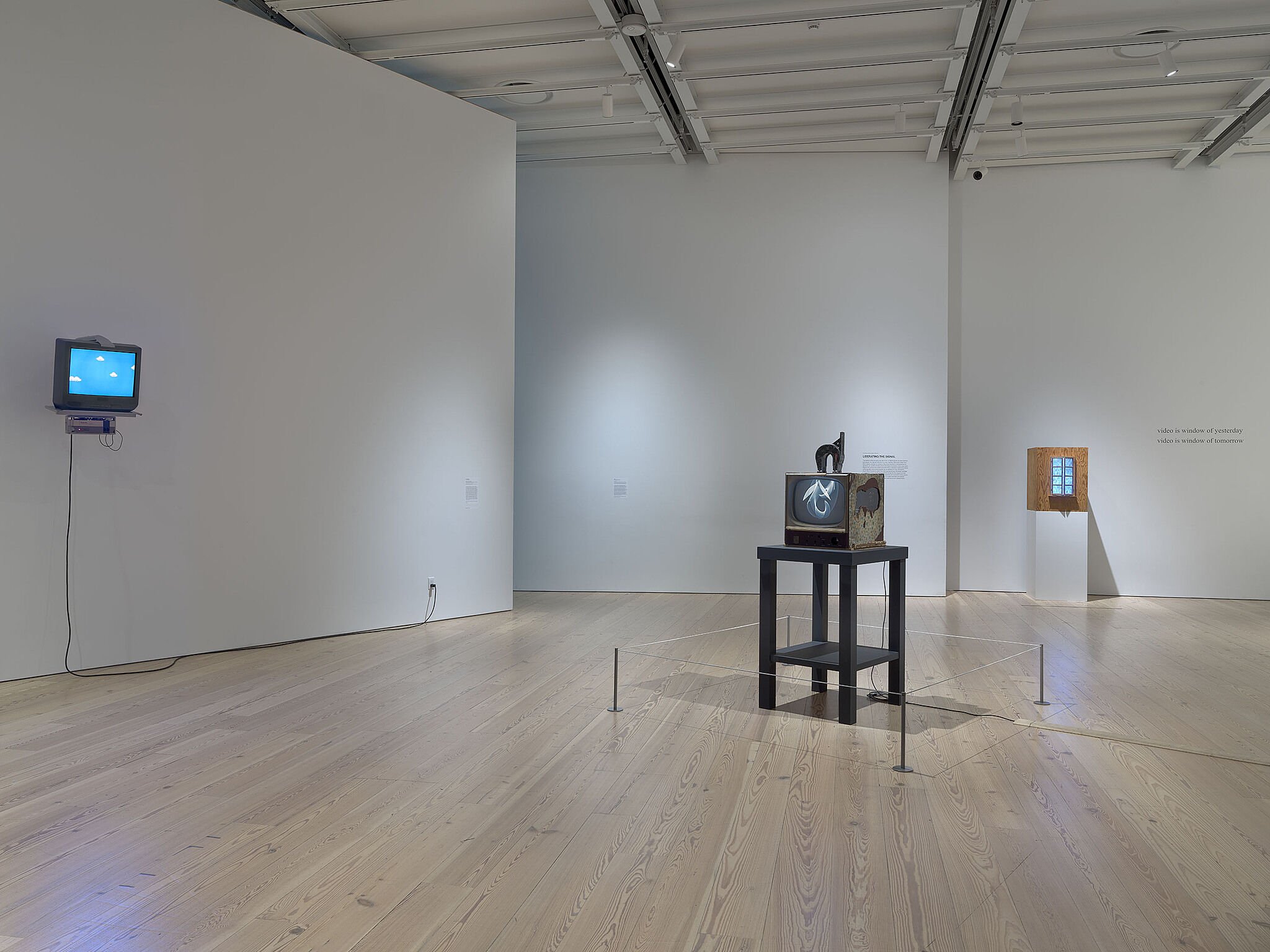

Installation view of Programmed: Rules, Codes, and Choreographies in Art, 1965–2018 (Whitney Museum of American Art, New York, September 28, 2018–April 14, 2019). From left to right: Cory Arcangel, Super Mario Clouds, 2002; Nam June Paik, Magnet TV, 1965; Shigeko Kubota, Meta-Marcel: Window, 1976. Photograph by Ron Amstutz
-
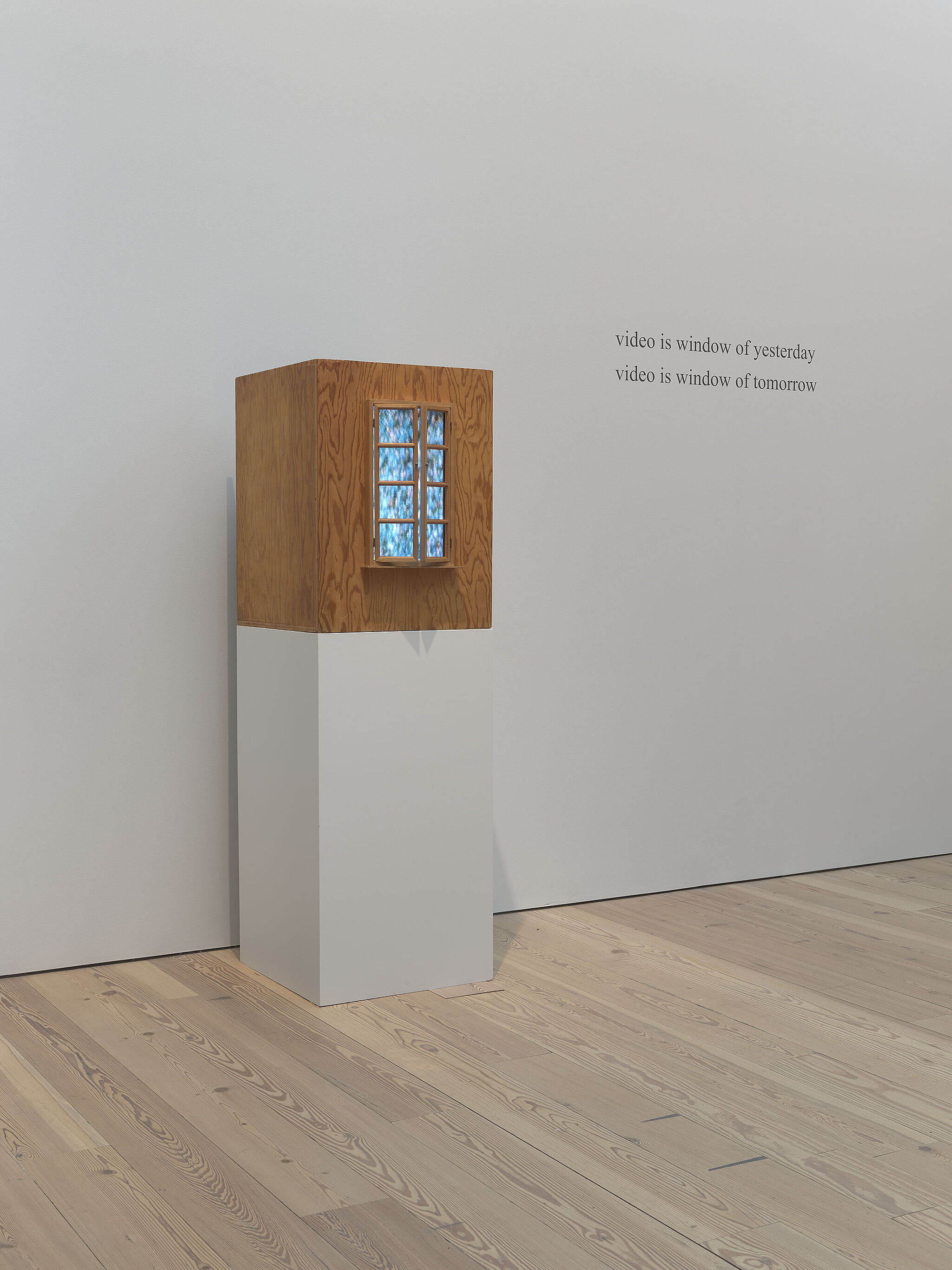

Installation view of Programmed: Rules, Codes, and Choreographies in Art, 1965–2018 (Whitney Museum of American Art, New York, September 28, 2018–April 14, 2019). Shigeko Kubota, Meta-Marcel: Window, 1976. Photograph by Ron Amstutz. © Estate of Shigeko Kubota / Artists Rights Society (ARS), New York
-
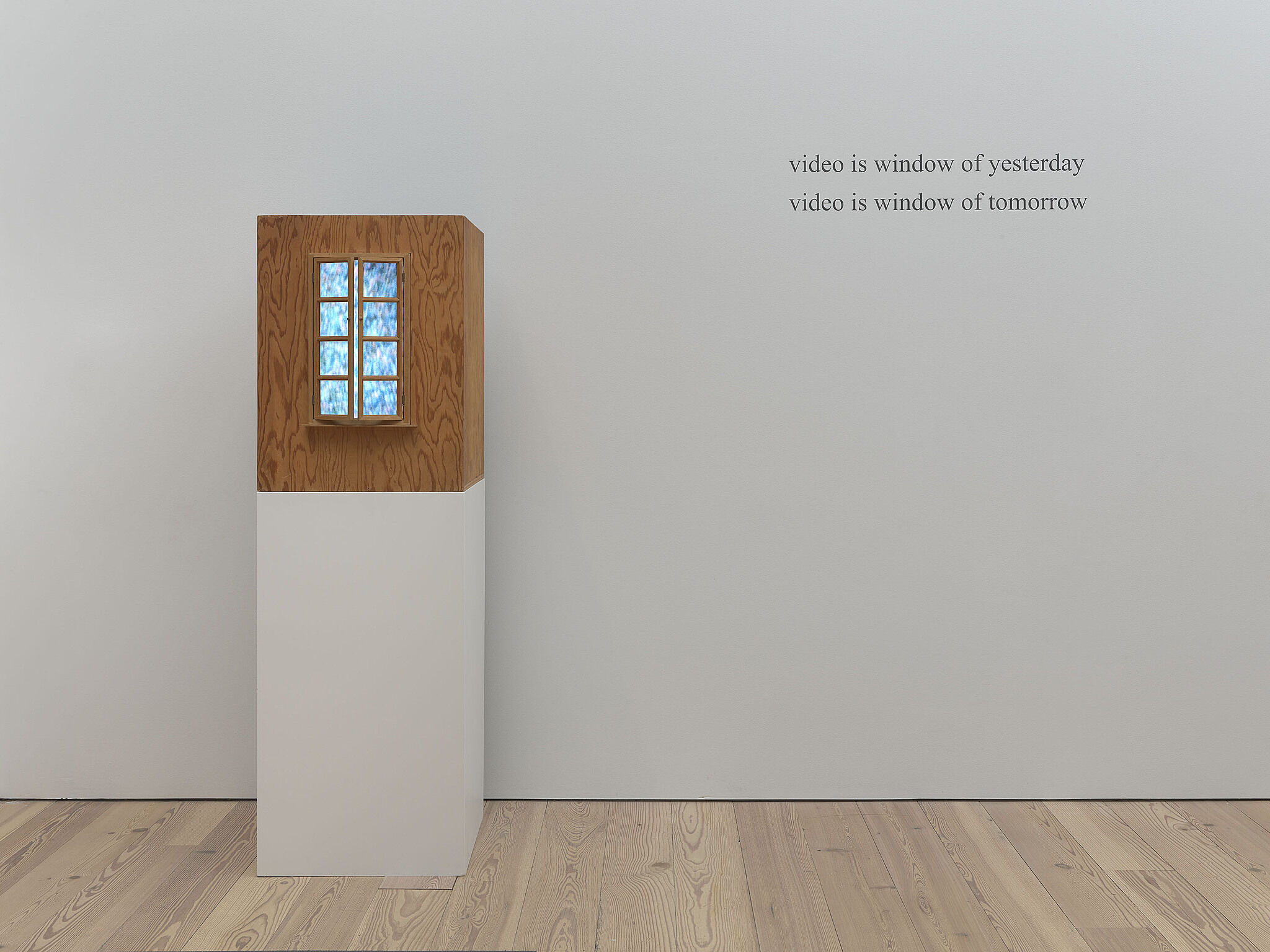

Installation view of Programmed: Rules, Codes, and Choreographies in Art, 1965–2018 (Whitney Museum of American Art, New York, September 28, 2018–April 14, 2019). Shigeko Kubota, Meta-Marcel: Window, 1976. Photograph by Ron Amstutz. © Estate of Shigeko Kubota / Artists Rights Society (ARS), New York
-
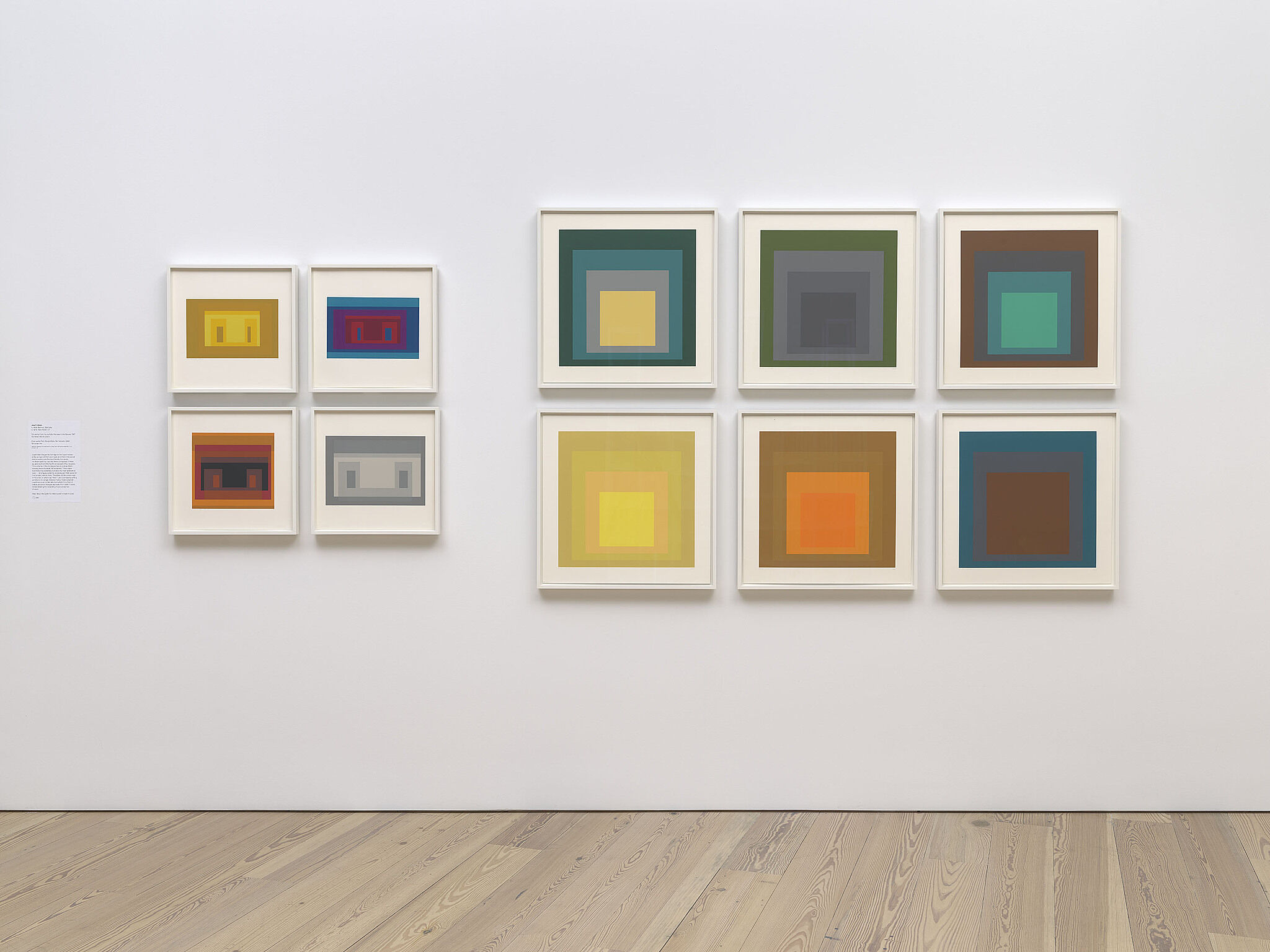

Installation view of Programmed: Rules, Codes, and Choreographies in Art, 1965–2018 (Whitney Museum of American Art, New York, September 28, 2018–April 14, 2019). From left to right, top to bottom: Josef Albers, Variant I, 1966; Josef Albers, Variant IX, 1966; Josef Albers, Variant VIII, 1966; Josef Albers, Variant III, 1966; Josef Albers, Homage to the Square VI, 1967; Josef Albers, Homage to the Square III, 1967; Josef Albers, Homage to the Square I, 1967; Josef Albers, Homage to the Square II, 1967; Josef Albers, Homage to the Square XI, 1967; Josef Albers, Homage to the Square VII, 1967. Photograph by Ron Amstutz
In the News
"How Artists Made Code Their Paintbrush"
—Science Friday
"Tamiko Thiel’s 'Unexpected Growth' is an augmented reality installation on the future of oceans and climate change."
—Hyperallergic
"The exhibit uses the Whitney’s own collection to explore how computational art has evolved and changed over the decades based on technology."
—Smithsonian
"Is a particularly urgent, relevant exhibition and a perfect setting in which to consider some of the most pressing questions of our time.”
—Sotheby’s Museum Network
"Programmed explores the limits of code-based art, looking at past generations of computational art and illustrating how the ideas of earlier works have developed to form new contemporary styles.”
—SVA NYC
“From early mathematical works, to Generative art, to digital art in a variety of media, the works in Programmed take many forms.”
—Art and Object
"Artists play and experiment with algorithms and technology, working within limits but achieving effects greater than the sum of their codes or instructions. The duality at play in this exhibition is as separable as the wave and particle natures of light. To recognize only one explanation would be reductive; to see both is beautiful.”
—Scientific American
“Paik captured both the allure and the futility of following events that happen so quickly they don't register before they're outdated.”
—Forbes


